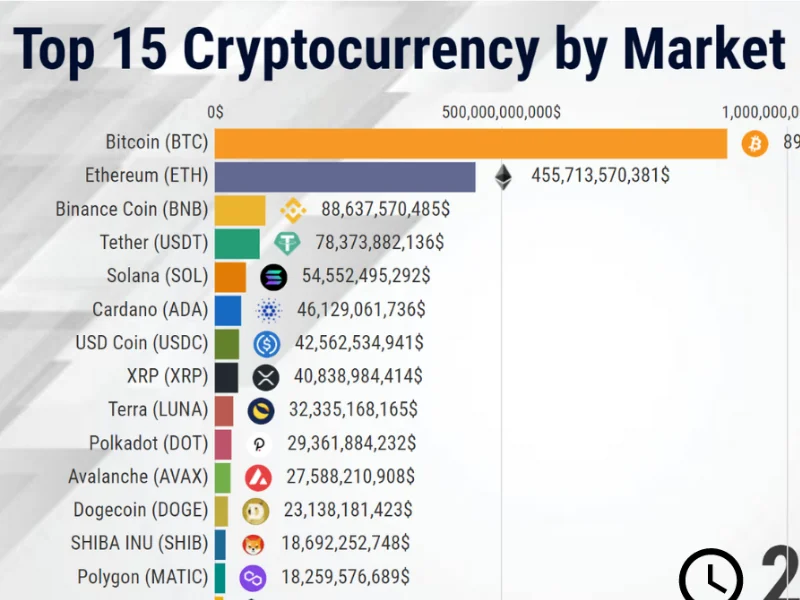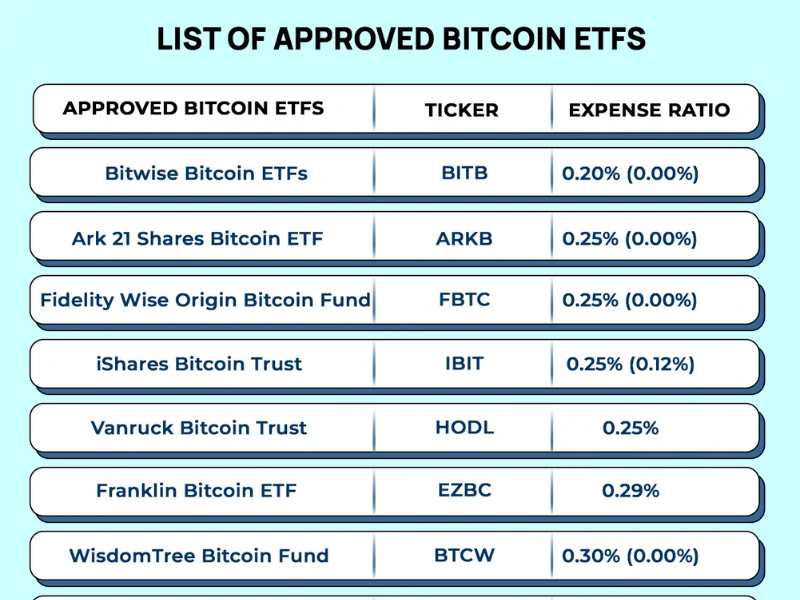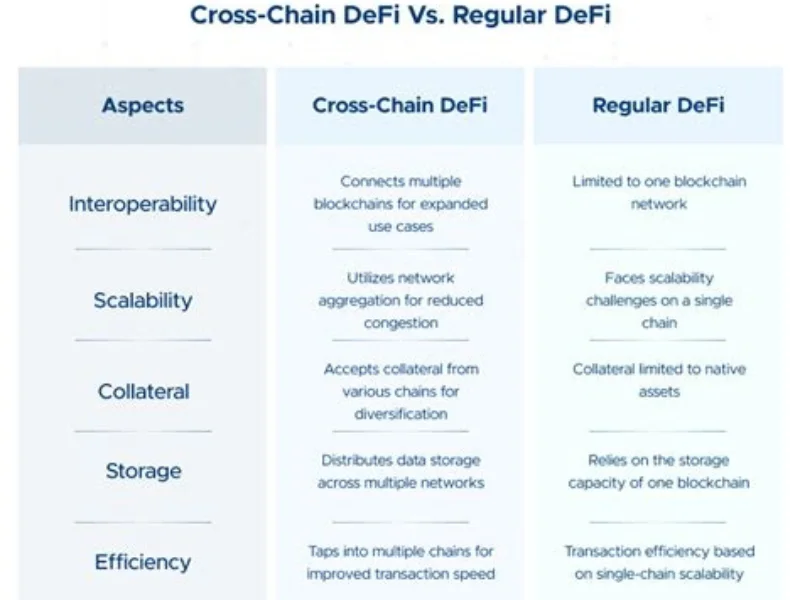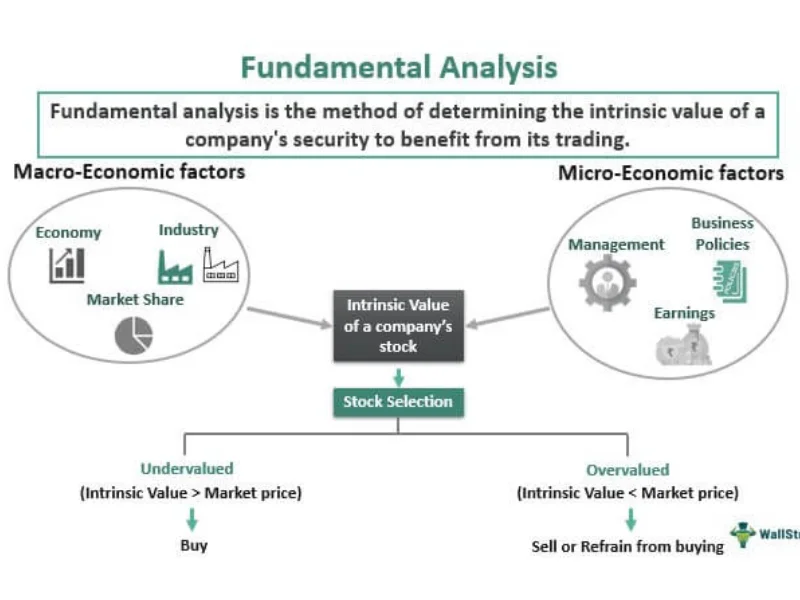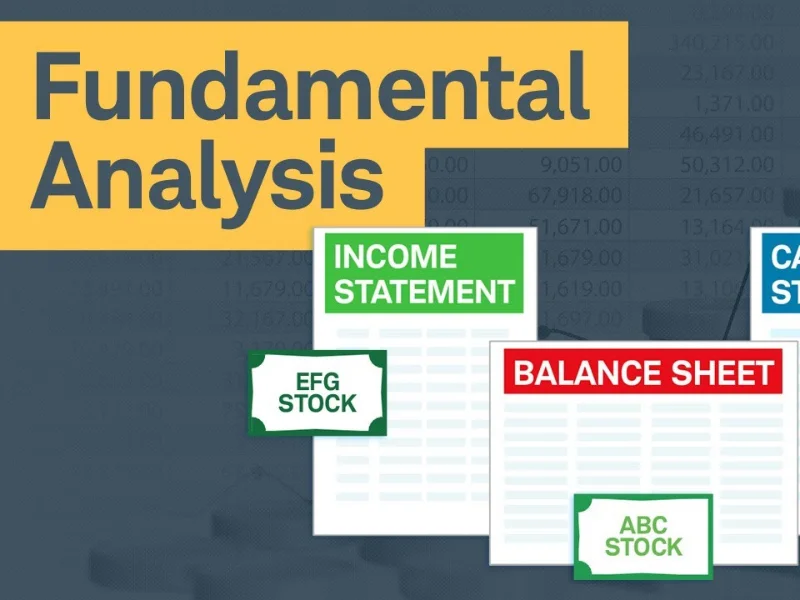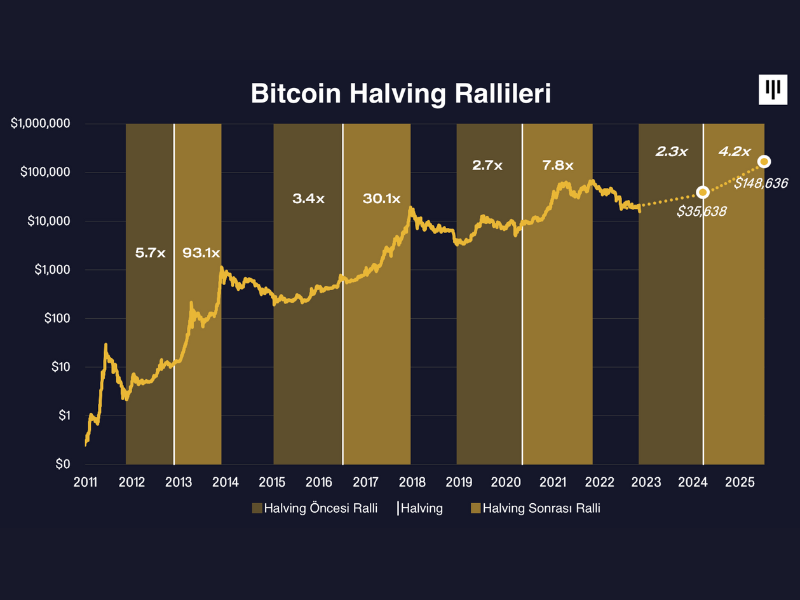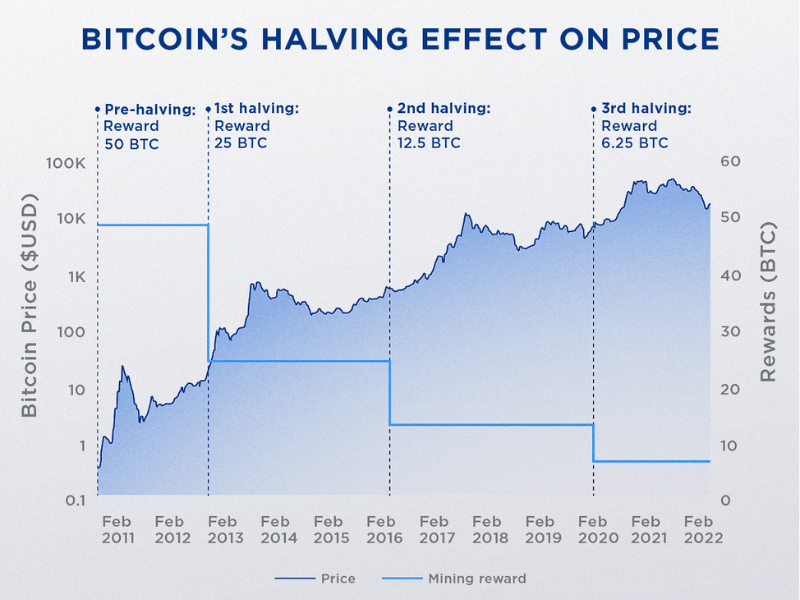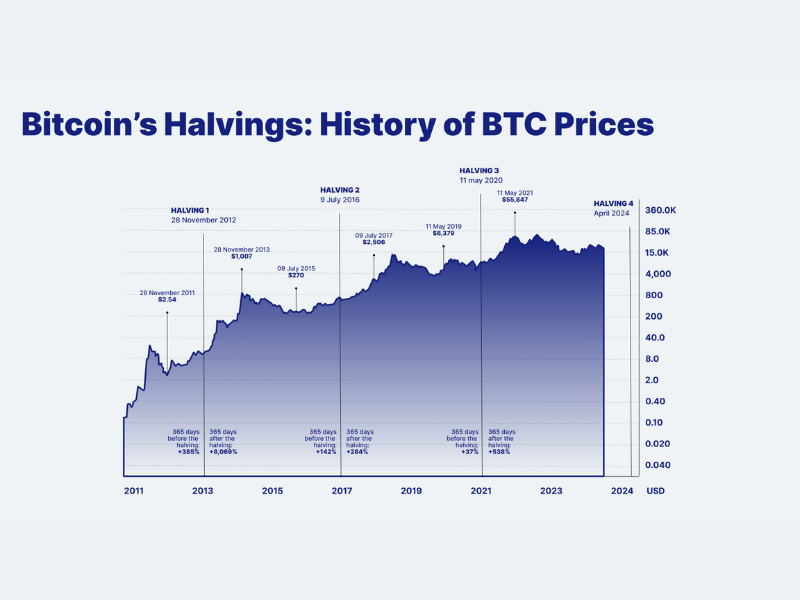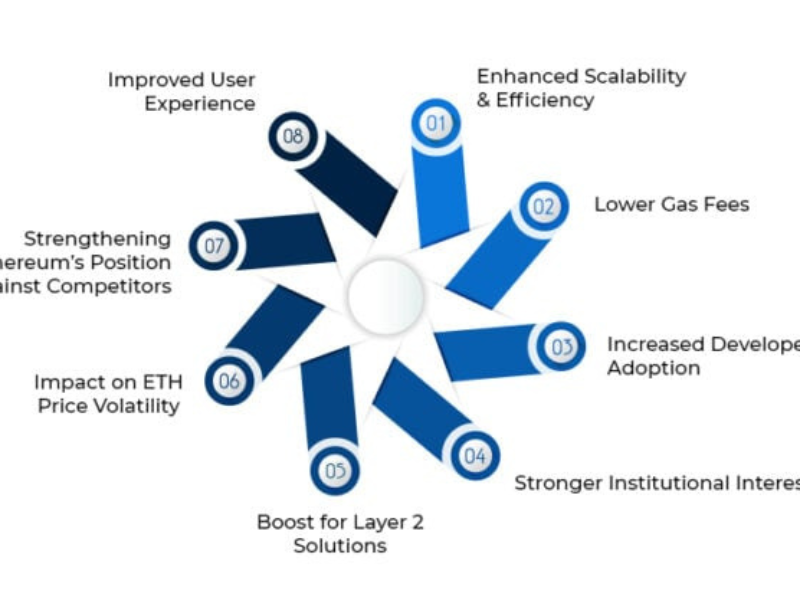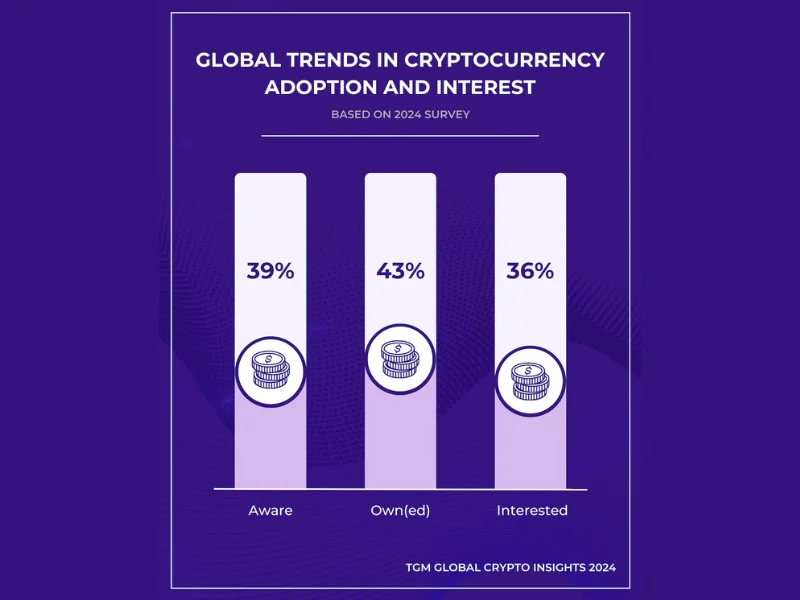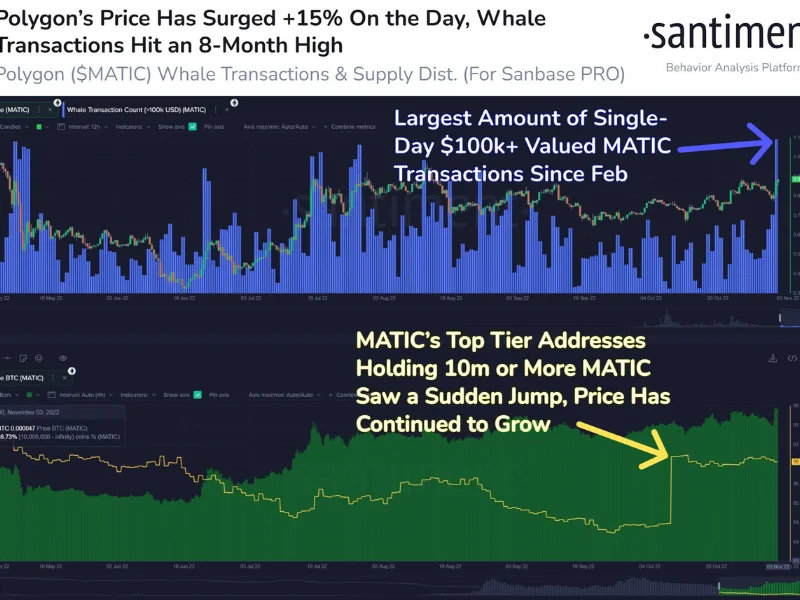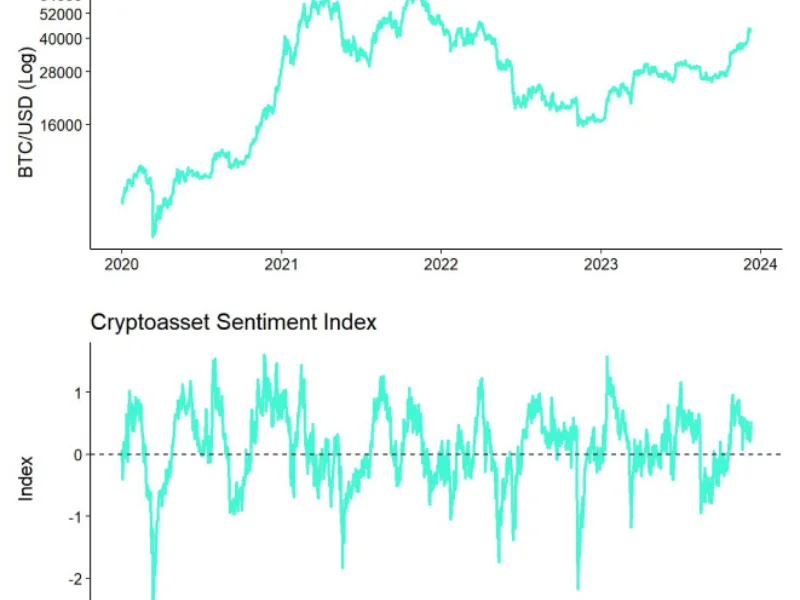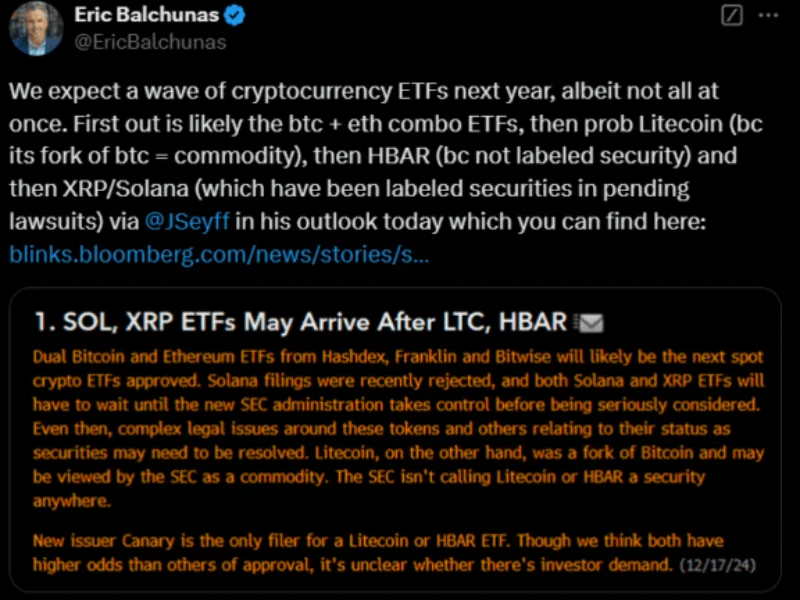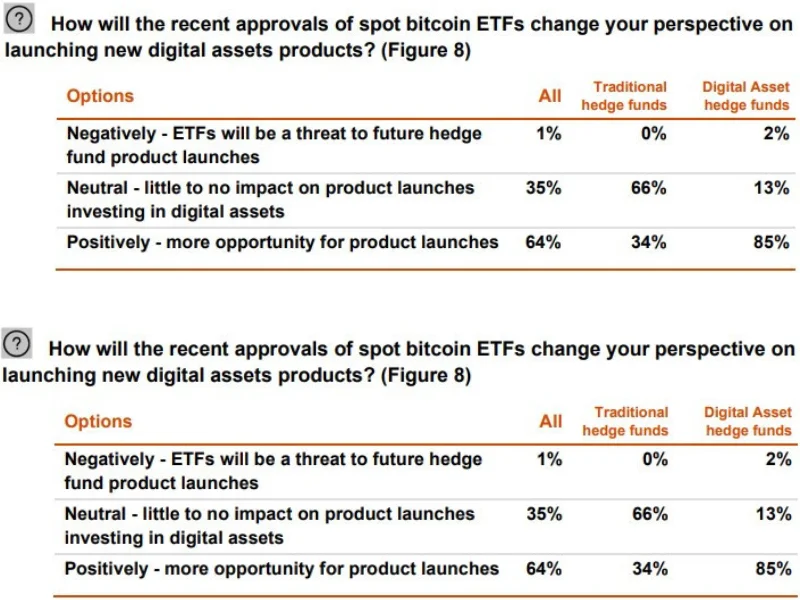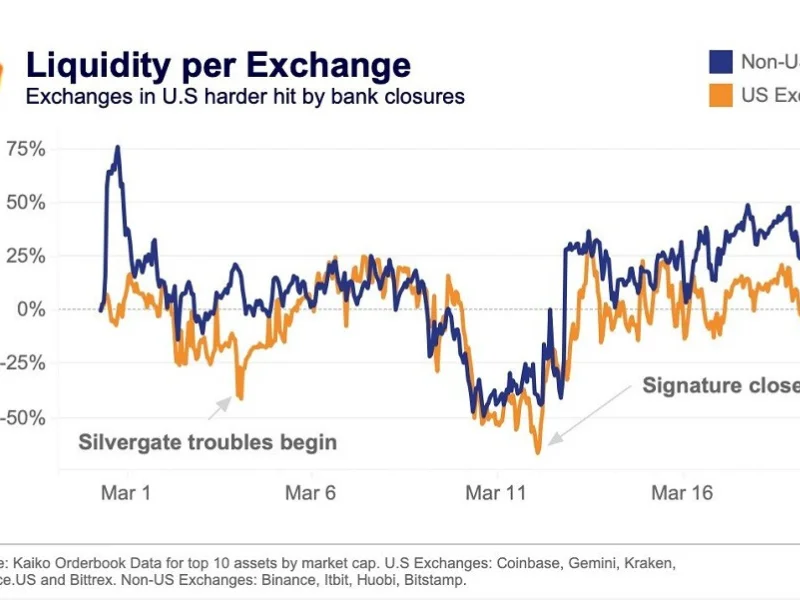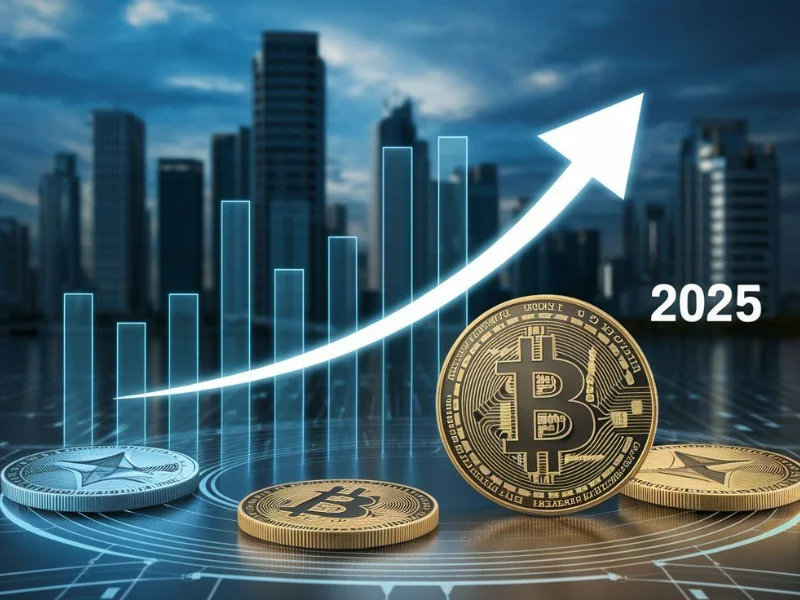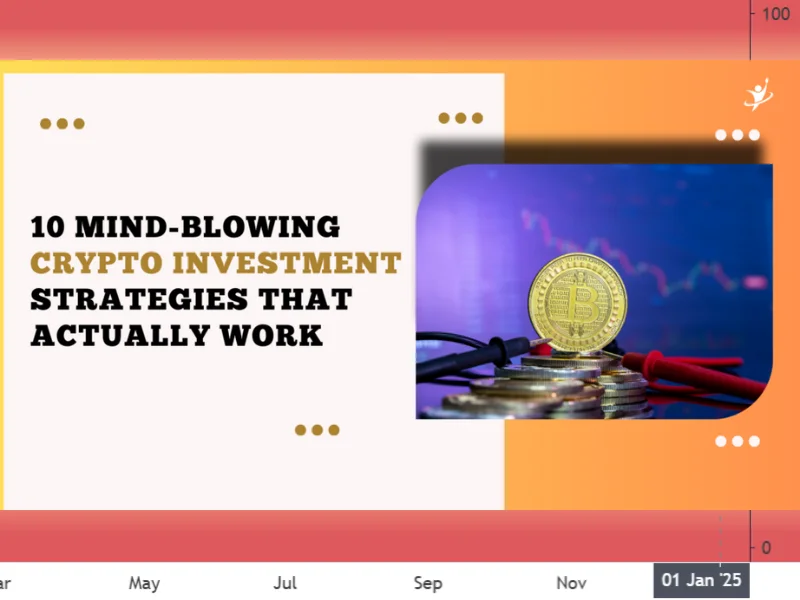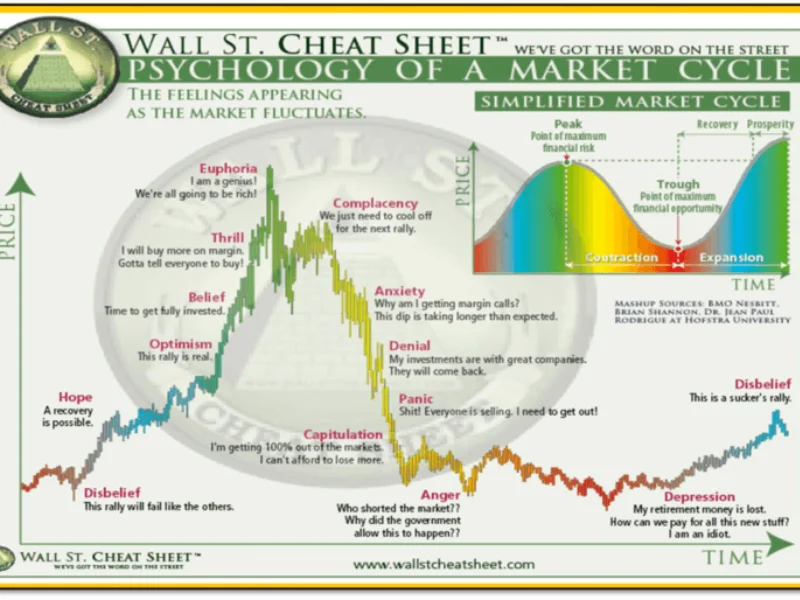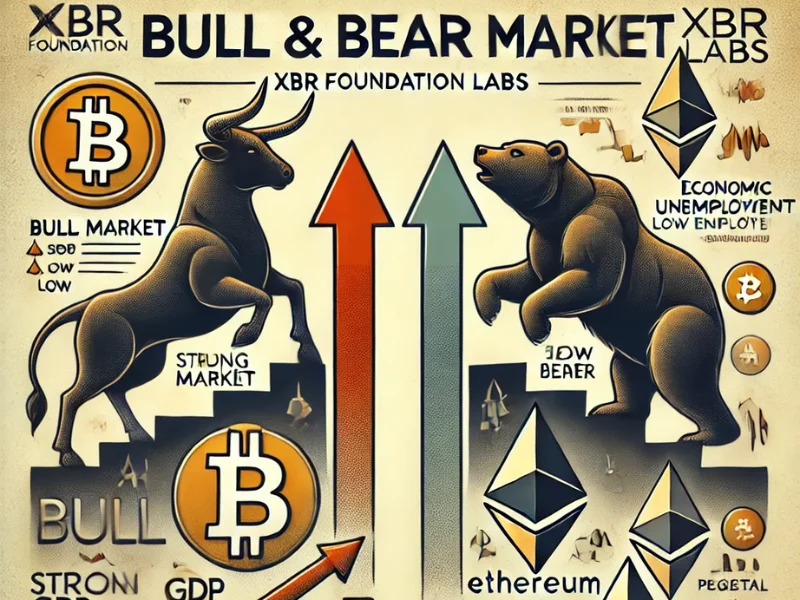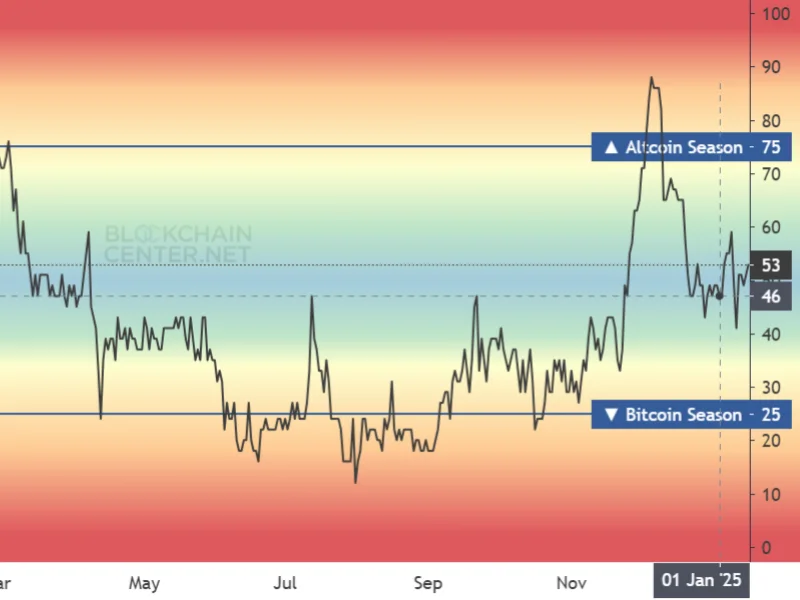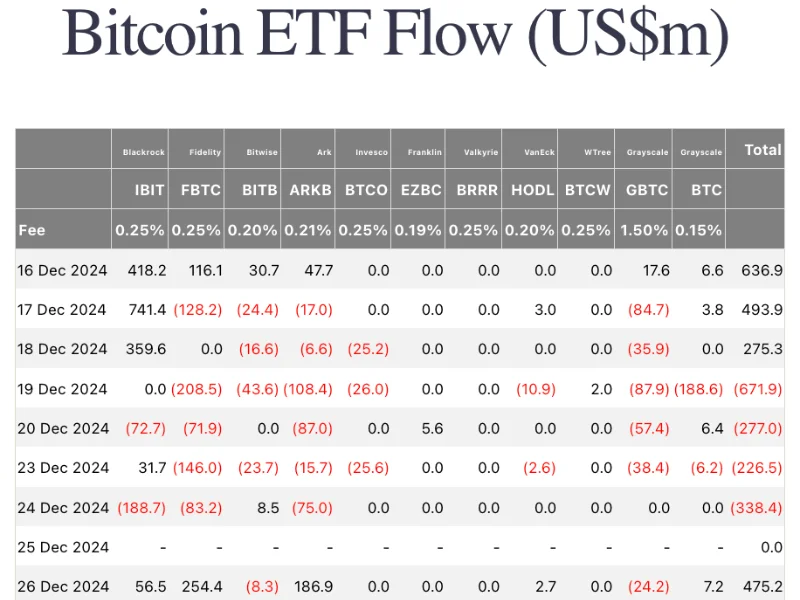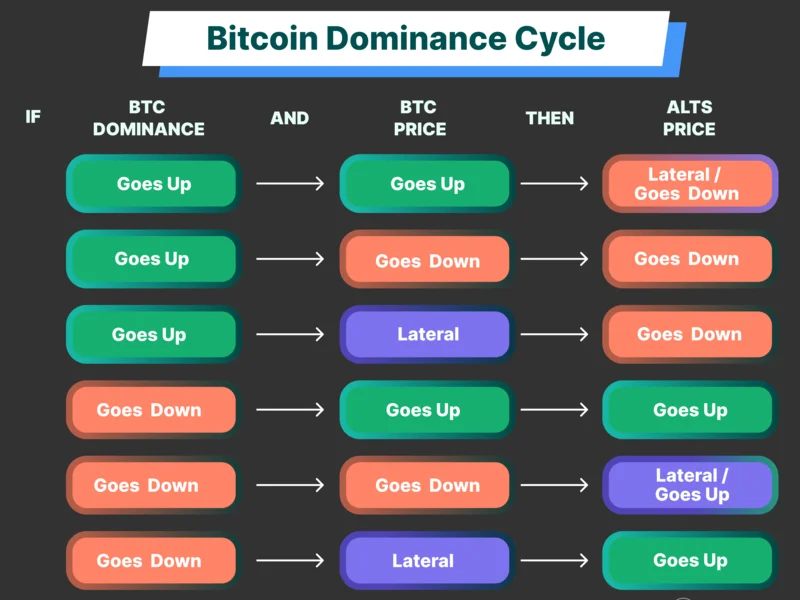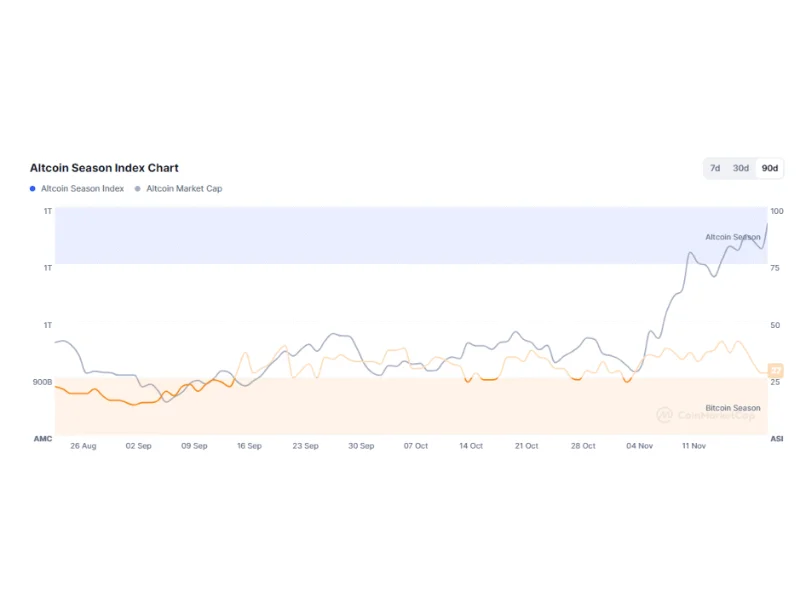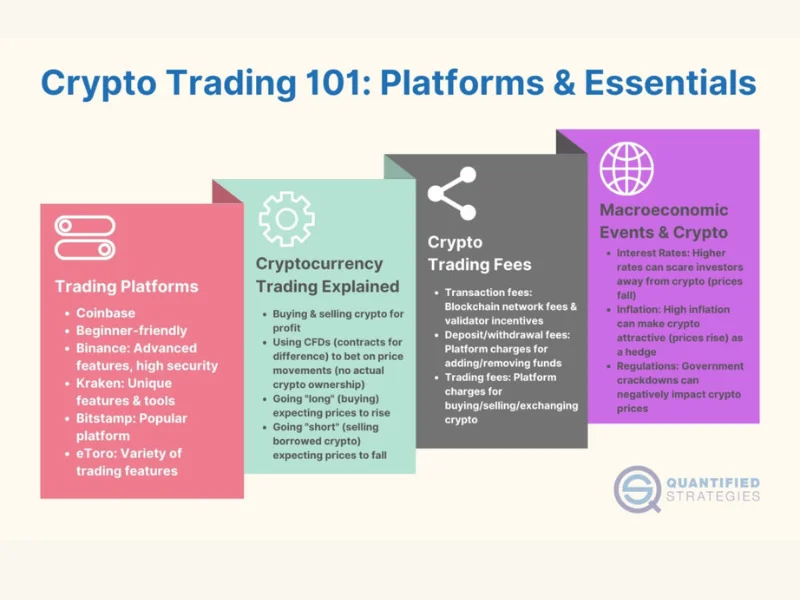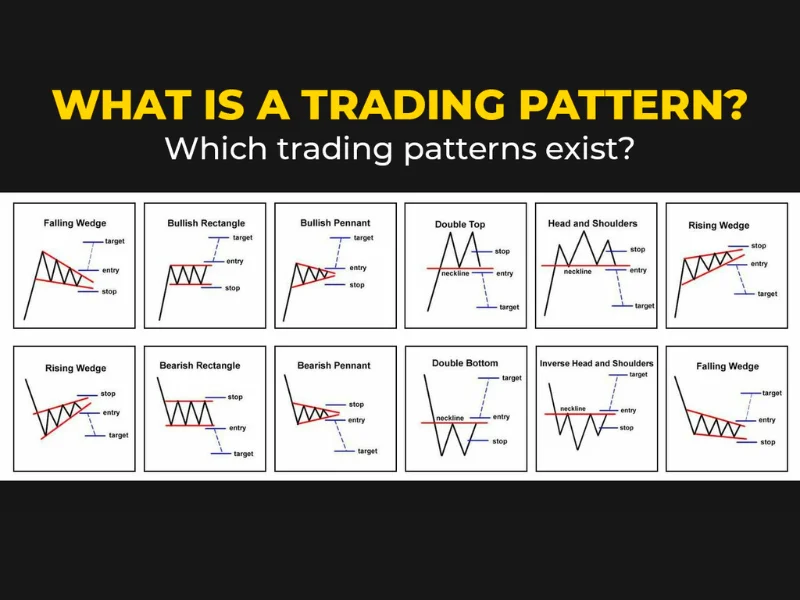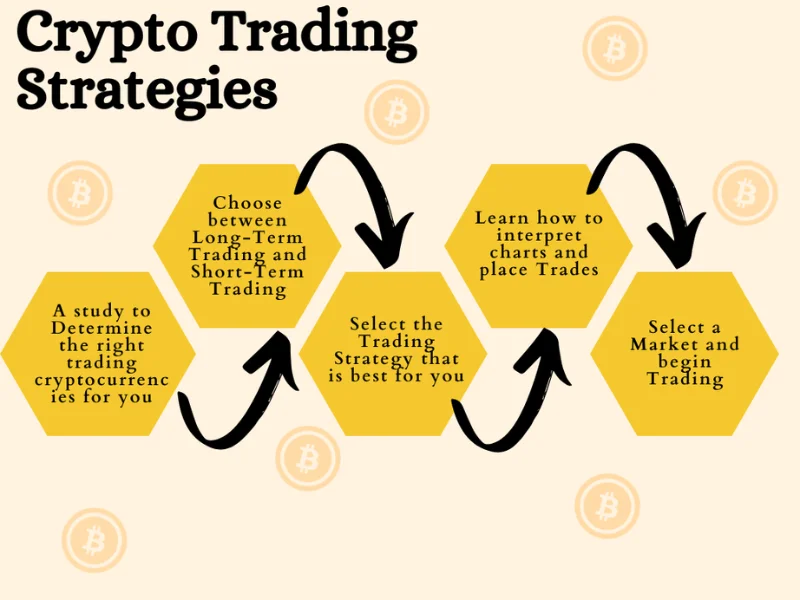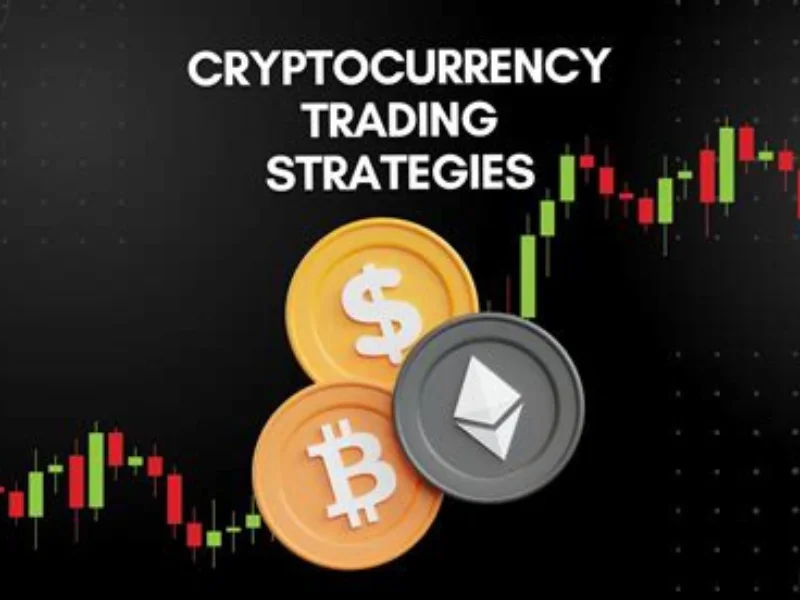Introduction
Purpose of the Article: This comprehensive article provides readers with the latest updates and trends in the crypto market as of today. In an industry as fast-moving as cryptocurrency, staying updated with current trends is crucial for both investors and enthusiasts. Market dynamics can shift rapidly, and new technologies or regulations can emerge with significant impact. Our goal is to arm readers with timely insights into market movements, technological innovations, regulatory changes, and adoption trends shaping crypto in 2025.
Why Staying Updated Matters: Crypto markets are notorious for their volatility and innovation pace. Those who stay informed via trusted platforms (e.g. CoinDesk for news, Glassnode for on-chain analytics, Bloomberg Crypto for macro perspective) are better equipped to navigate the risks and opportunities. Whether you are managing an investment portfolio or simply passionate about blockchain technology, understanding current trends – from Bitcoin’s price trajectory to DeFi’s growth – is essential. This article pulls data and insights from reputable sources including CoinDesk, CoinMarketCap, CoinShares, Glassnode, Messari, and Bloomberg Crypto, ensuring that the information reflects the state of the market as of August 2025.
Key Themes Covered: We will explore several key themes: (1) Market Movements – the performance of major cryptocurrencies and the overall market; (2) Technological Innovations – including blockchain interoperability milestones like cross-chain bridges, scalability upgrades, and security improvements; (3) Regulatory Updates – how global policies and legal cases are influencing the industry; (4) Adoption Trends – the latest in retail/institutional adoption and market sentiment; (5) On-Chain Activity – what blockchain data reveals about network health; and (6) Future Outlook – emerging trends such as NFTs, DeFi evolution, and the role of stablecoins/CBDCs. By covering these areas, readers will gain a 360° view of where the crypto market stands today and where it might be headed.
Blockchain Interoperability Highlight: Notably, 2025 has seen significant progress in blockchain interoperability. Cross-chain bridges – protocols enabling assets and data to move between different blockchains – are reaching new milestones. This development addresses a long-standing silo problem in crypto: previously, Bitcoin, Ethereum, and other chains were like separate islands. Now, solutions like Polkadot’s XCMP, Cosmos’s IBC, and Chainlink’s CCIP are linking ecosystems, allowing value to flow freely between networks. As we delve into market and tech trends, we’ll also explain how these cross-chain bridges work and why they are critical for the future of a connected crypto economy.
Global Market Trends
Current Market Performance & Capitalization
The global cryptocurrency market is in a robust state in 2025. The total market capitalization of all cryptocurrencies currently hovers around $3.86 trillion, reflecting a tremendous recovery and growth (over +67% year-on-year) after the bear markets of 2022–2023. For context, as of April 2025 the market cap was about $2.76T, so the continued rally into late 2025 has pushed valuations to new all-time highs. Bitcoin (BTC), the leading cryptocurrency, now boasts a market cap of roughly $2.18 trillion – over 56% of the total market, with its price well into six figures. Ethereum (ETH), the second-largest asset, makes up about 13.8% of the market (approximately a ~$530B market cap), trading near its record price around the mid-$4,000s. In fact, Bitcoin’s price surpassed the $100,000 milestone for the first time in 2025, and Ether hit a new peak above $4,800. These achievements underscore the bullish momentum driving the market this year.
Major altcoins have likewise seen significant appreciation. Many top 10 cryptocurrencies – including Binance Coin (BNB), Solana (SOL), and others – have outperformed expectations over the past year amid renewed investor enthusiasm. Daily trading volumes remain high (hundreds of billions of dollars), and market liquidity is markedly improved compared to the liquidity crunch experienced during the 2022 bear market. Short-term price trends show healthy volatility: for example, in recent weeks Bitcoin has traded in the $105K–$115K range, experiencing typical 5–10% swings, while Ether has fluctuated around $4K–$4.8K. Trend analysis reveals that over the last 7 days, most large-cap crypto prices have risen a few percent, continuing an uptrend fueled by positive news (like ETF inflows and tech upgrades). In the last 24 hours, the market saw a minor pullback (~2% dip) – a normal breather after weeks of gains. Analysts note that such corrections are healthy for a sustained rally. Overall, sentiment is bullish, with year-to-date returns for Bitcoin and Ether solidly positive (BTC up over +80% YTD, ETH up +60%+). Key market events driving recent changes include the introduction of multiple spot Bitcoin ETFs (which began in early 2024) attracting fresh capital, and Ethereum’s successful protocol upgrades boosting confidence (more on these later). In summary, global crypto market performance in 2025 is strong, with total capitalization reaching new highs and leading assets showing resilience despite occasional volatility.
Embedded data: According to CoinGecko’s global chart, “the global cryptocurrency market cap today is $3.86 Trillion, a -2.29% change in the last 24 hours and 67.4% change one year ago.” Bitcoin alone accounts for over $2.1T of that, reflecting BTC dominance around 56.5%, while all stablecoins combined have a ~$282B market cap (about 7.3% of the total). These figures illustrate how dominant Bitcoin remains, and how significant stablecoins have become as a portion of crypto’s value.
Price Fluctuations & Drivers: In the short term, crypto prices respond to a mix of technical and fundamental drivers. Over the past month, Bitcoin saw a brief dip of ~10% from its record highs (~$123K down to ~$110K) when profit-taking set in and on-chain data showed an extremely high percentage of holders in profit (a classic sell signal). However, macroeconomic news quickly turned favorable – the U.S. Federal Reserve signaled dovish policy shifts at the Jackson Hole symposium in late August, boosting investors’ risk appetite. This “dovish turn” from the Fed sparked a rotation of capital back into crypto, lifting assets like XRP and others during that week. One CoinDesk market piece noted: “dovish comments from Fed Chair Jerome Powell… strengthened expectations of September rate cuts and triggered rotation into risk assets, including cryptocurrencies”. Indeed, macro conditions such as expectations of interest rate cuts or concerns about inflation can greatly influence crypto sentiment. In the current climate, cooling inflation and the prospect of easier monetary policy have been tailwinds for Bitcoin’s “digital gold” narrative. At the same time, market-specific events like large ETF buy-ins or network upgrades have immediate impacts – for example, when Ethereum successfully implemented its Shanghai upgrade (enabling staking withdrawals) in 2023, ETH saw a strong rally as technical uncertainty cleared. Similarly, in mid-2025, news of BlackRock’s Bitcoin ETF crossing significant AUM or tech giant MicroStrategy increasing its BTC holdings can trigger positive price momentum.
Looking at 24h and 7d trends, as of today most top cryptos are modestly in the green week-over-week. Bitcoin is up roughly 3% this week, Ether about 5%, while some altcoins (e.g. Solana, Cardano) have notched high single-digit gains, partly on the back of a renewed appetite for risk among retail traders. We also saw sector rotation: capital flowed into large-caps after Bitcoin’s ETF-driven surge, and now some DeFi tokens and Layer-2 tokens are catching a bid as investors search for value outside the already pumped majors. Overall market volatility is moderate: the Bitcoin Volatility Index is around 50 (lower than the 2021 peak mania levels, indicating a more mature market). It’s noteworthy that crypto’s total market cap (>$3.8T) now exceeds the market cap of some G7 stock exchanges, highlighting how far this asset class has come in terms of global economic significance.
Institutional Involvement & Economic Influence
One of the defining trends of the current cycle is deepening institutional involvement in crypto markets. Large corporations, fund managers, and even nation-states are now active participants, bringing significant capital and influencing market dynamics. Companies like MicroStrategy continue to add Bitcoin to their balance sheets (MicroStrategy’s holdings have grown to well over 160,000 BTC by 2025, worth tens of billions of dollars), and Grayscale’s Bitcoin Trust (GBTC) has seen its discount vanish as it transitions toward a likely ETF conversion. More dramatically, spot Bitcoin ETFs launched in the U.S. in January 2024 have amassed huge inflows – “11 spot BTC ETFs have amassed $53.7 billion in investor wealth since their debut in January last year”, according to CoinDesk. This flood of institutional money via ETFs has created a significant new source of demand that helped propel Bitcoin above $100K. Ether ETFs likewise have gathered over $12.4B in inflows, reflecting institutional confidence in Ethereum post-Merge.
Institutional investors are also influencing market structure through digital asset fund flows. Recent data from CoinShares (a leading digital asset manager) shows that crypto investment products hit record assets-under-management (AUM) this year. In one mid-August weekly report, “digital asset investment products saw US$3.75 billion inflows, the fourth-largest on record, driving AuM to an all-time high of US$244 billion”. Notably, that week nearly all inflows went to a single provider (BlackRock’s iShares ETF) as it launched, with the United States accounting for 99% of the flows. Such concentration underscores how a few big players can swing the market. The same report highlighted that Ethereum-dedicated funds led the charge, receiving 77% of that week’s inflows (US$2.87B) – a sign that institutions are increasingly interested in ETH alongside BTC. Bitcoin funds saw about $552M inflows that week, while even altcoins like Solana and XRP attracted sizeable institutional money (>$100M each). These trends reveal that institutions are not only holding crypto directly but using investment vehicles to gain exposure, which adds liquidity and (arguably) stability to the market.
Market sentiment among big investors has also been swayed by macroeconomic conditions. The ongoing global economic uncertainty – from inflation concerns to recession fears – plays a dual role. On one hand, high inflation in fiat currencies has driven some investors to view Bitcoin as an inflation hedge or “digital gold.” During 2022’s inflation spike, for instance, Bitcoin’s narrative as a store of value gained traction even though short-term correlation with stocks remained. On the other hand, recession fears and higher interest rates can make speculative investments less attractive. Throughout 2023–2024, central banks tightened monetary policy, which pressured risk assets including crypto. However, by 2025 the outlook shifted: inflation began to moderate and there’s growing anticipation of rate cuts or at least a pause. This more dovish macro outlook has reduced the headwinds for crypto. In late August 2025, after Fed Chair Powell’s speech hinted at potential easing, we saw a noticeable uptick in crypto prices and volumes – indicating that liquidity conditions (fueled by central bank policy) remain a key external factor.
Another angle is institutional adoption beyond investment – for example, mainstream financial firms providing crypto services. We’ve seen major banks like Goldman Sachs and Morgan Stanley expand crypto offerings for clients, and payment giants like PayPal launching their own USD stablecoin. These moves increase the credibility and integration of crypto into traditional finance. Additionally, sovereign adoption is in play: El Salvador’s pioneering move to adopt Bitcoin as legal tender in 2021 has influenced other nations (we now see countries like Panama and Paraguay exploring crypto-friendly legislation, and some governments holding Bitcoin in reserves).
Market Sentiment & Economic Conditions: As of Q3 2025, market sentiment is cautiously optimistic. Global economic uncertainties, such as high government debt levels and geopolitical tensions, are actually contributing to crypto’s appeal as a hedge or alternative asset. For instance, concern over the U.S. debt ceiling and bond market volatility has some investors reallocating into Bitcoin, which is perceived as uncorrelated to traditional financial system risks. A Cooper Research report noted that “economic uncertainties drive investors to park funds in risk-on investments, including spot Bitcoin ETFs”, which helped BTC hit new highs above $120K. At the same time, market sentiment indicators like the Crypto Fear & Greed Index have mostly stayed in “Greed” territory throughout 2025, occasionally tipping to “Extreme Greed” during price surges – a sign that bullish sentiment has been dominant. However, analysts warn that too much euphoria can precede a correction; indeed, on-chain metrics recently showed ~94% of Bitcoin supply in profit (meaning most investors would have gains if they sold), a condition that “raises the risk of… profit-taking… which could trigger a sentiment shift and increased volatility”. In other words, if everyone is sitting on profits, the temptation to realize gains grows, which could swiftly turn greed into fear.
In summary, institutional involvement is at an all-time high – from ETFs and corporate treasuries to hedge funds deploying sophisticated strategies – and this is providing new support levels and liquidity to crypto markets. Meanwhile, economic factors like inflation and monetary policy continue to influence the crypto narrative. Crypto is increasingly seen as part of the broader financial landscape, affected by (and sometimes countering) traditional economic trends. The presence of big players has not eliminated volatility, but it has perhaps extended crypto’s reach and legitimacy. As we move forward, the interplay between Wall Street and crypto, and between macroeconomics and digital assets, will remain a pivotal aspect of market trends.
Technological Developments and Innovations
Blockchain Advancements
The year 2025 has been marked by significant technological progress in blockchain platforms, with a strong emphasis on scalability, efficiency, and interoperability. One of the headline advancements is the successful transition of Ethereum to its proof-of-stake upgrade (often referred to as Ethereum 2.0). Ethereum’s switch from proof-of-work (completed in the September 2022 Merge) drastically reduced its energy usage by >99% and set the stage for further upgrades focused on scalability. Since then, the Ethereum roadmap has delivered Shanghai (2023) – enabling staked ETH withdrawals – and introduced improvements like proto-danksharding (EIP-4844) in 2024 to increase Layer-2 throughput. These upgrades are beginning to bear fruit: Ethereum’s network now handles more transactions at lower fees thanks to Layer-2 scaling solutions (Optimistic and ZK-Rollups) that have gained mass adoption. In fact, daily transaction count combining Ethereum L1 and L2s is at an all-time high, and user activity is booming on chains like Arbitrum and Optimism which settle on Ethereum. Glassnode data shows that Ethereum’s staking participation rate hit 29.6% in early 2025 (up 4% QoQ), meaning nearly 30% of all ETH is now locked in staking, securing the network and earning yield. This high staking rate not only reflects confidence in the network’s proof-of-stake security, but also effectively removes a large chunk of ETH from circulating supply, which can have bullish price implications. Institutional players are directly participating too – about 7% of all ETH is held by institutional entities via custodians or staking services, attracted by the ~5% APY staking rewards, something Bitcoin doesn’t offer. The net effect of Ethereum’s advancements is a more scalable and robust network: transaction fees on ETH L1 have been moderate most of the year (except for brief NFT-mint mania spikes), and user experience is improving with account abstraction (smart contract wallets) making transactions smarter and more secure.
Other Layer-1 blockchain projects have also pushed technological frontiers. Solana, for example, has focused on high throughput and speed, and despite some outages in 2022, it has emerged in 2025 as a performant chain with real-world usage in finance and gaming. Solana’s network can handle 65,000+ TPS and recent upgrades improved its reliability. An interesting stat: Solana’s active addresses and daily transaction volume have exploded, now even surpassing those of Bitcoin and Ethereum by some measures. According to a joint Gemini/Glassnode report, “Solana now settles $37B daily, more than both Bitcoin and Ethereum, reflecting a rapid rise in network activity”. Additionally, that report noted “Solana’s active addresses exceed Bitcoin’s by 16.2x and Ethereum’s by 24.6x” – a striking figure highlighting how a fast, low-cost chain can attract masses of users (though many may be micro-transactions or bot activity, it still underlines Solana’s capacity). Technologically, Solana uses a unique proof-of-history combined with proof-of-stake, enabling block times of ~400ms. Its success demonstrates that alternative consensus algorithms and L1 designs can achieve high scalability, though often at the cost of higher hardware requirements. Another project, Algorand, made strides in cryptographic innovation by implementing State Proofs (a kind of trustless bridge mechanism) and boosting its TPS. Cardano rolled out more smart contract enhancements and sidechains to improve throughput. Polkadot and Cosmos have been pivotal in interoperability (more on that below). And new consensus mechanisms like Avalanche’s subnet architecture or Algorand’s pure proof-of-stake show that the space is rife with experimentation aimed at solving the blockchain trilemma (scalability, security, decentralization).
A major milestone in 2025 is blockchain interoperability, epitomized by progress in cross-chain bridges. Historically, blockchains were isolated networks, but there’s a push to enable assets and data to move between chains seamlessly. Projects like Polkadot (with its XCMP – Cross-Chain Message Passing between parachains) and Cosmos (with IBC – Inter-Blockchain Communication protocol) have matured. As of mid-2025, Cosmos IBC connects dozens of zones (chains) enabling token transfers and interoperability among an expanding “internet of blockchains.” Polkadot, similarly, now has many parachains in production that can communicate under the shared security of the Relay Chain. Meanwhile, generalized bridge protocols have come to the fore: Chainlink’s Cross-Chain Interoperability Protocol (CCIP) launched and is being adopted as a standard messaging layer between blockchains and traditional systems. This is seen as a “blockchain interoperability milestone”, as CCIP aims to securely connect smart contracts across chains. Industry analysis highlights that “cross-chain bridges like Wormhole and Chainlink CCIP will be critical for asset transfers and data verification” in the coming era. In practice, these innovations mean a user could, say, move a stablecoin from Ethereum to Solana or execute a multi-chain smart contract operation more easily than before. It breaks down silos: liquidity can flow to where it’s most needed, and developers can build applications that tap into multiple networks’ strengths. However, it’s worth noting that bridges also come with security challenges – in the past, bridges were targets of some of the largest hacks (e.g., Wormhole in 2022). In response, new decentralized security models are being deployed for bridges, including permissionless validators and multi-party computation to secure cross-chain transactions. Overall, the advancement in interoperability is one of 2025’s defining tech trends, likely to reshape how we perceive “the crypto ecosystem” (as a more interconnected web rather than isolated communities).
In summary, blockchain technology in 2025 is more advanced, scalable, and interconnected than ever. Ethereum’s evolution shows that even the largest networks can upgrade without major issues (post-Merge, Ethereum is handling more activity and rewarding stakers, all while being far more energy-efficient). Competing L1s have innovated to carve out niches (high-speed finance on Solana, interoperable zones in Cosmos, etc.). And critically, the walls between blockchains are starting to come down with interoperability protocols – a development that could be as important as early internet protocols were for connecting information networks. These advancements collectively pave the way for broader adoption: as blockchains become faster and user-friendly (with lower fees and higher throughput), new applications (from DeFi to gaming to supply chain) can reach mainstream-ready performance. In the next sections, we’ll see how these tech improvements feed into security enhancements and smart contract innovations.
Security Enhancements in Crypto
Security remains a paramount concern in the crypto space, and recent innovations are significantly bolstering the safety of blockchain networks and applications. A major focus area has been smart contract security – given the billions of dollars locked in DeFi protocols, any vulnerability can be catastrophic. In response, the industry has invested heavily in audits, formal verification of code, and new programming models to reduce bugs. For instance, newer smart contract languages like Rust (used in Solana) or Move (from the Diem project, adapted by Aptos and Sui) are designed with safety in mind, featuring safeguards against common errors. Ethereum’s community has embraced practices like OpenZeppelin’s standardized libraries and bug bounty programs to harden contract code. We’ve also seen growth in decentralized insurance (covering smart contract hacks) and better tooling for runtime monitoring of contracts (e.g., tools that can pause suspicious protocol behavior).
One of the most exciting frontiers in security is the rise of Zero-Knowledge Proofs (ZKPs). ZKPs are cryptographic methods that allow one party to prove something to another without revealing underlying information – “verifying transactions or identities without revealing private data”. This technology is crucial for privacy and scalability. ZK-Rollups on Ethereum (like StarkNet, zkSync) use zero-knowledge validity proofs to bundle thousands of transactions off-chain and prove their correctness on-chain, greatly improving throughput while preserving security. ZKPs also enable privacy-preserving transactions – for example, projects like Aztec Network allow shielded transfers on Ethereum using ZKPs (so value can be sent without publicly linking to addresses). Furthermore, ZKPs are being explored for identity verification (proving you have certain credentials or attributes without revealing them, which could be revolutionary for KYC/AML in a non-intrusive way). The importance of ZKPs has not gone unnoticed by standard-setters: the U.S. National Institute of Standards and Technology (NIST) has an initiative to standardize zero-knowledge proof protocols by 2025, aiming to create common, secure frameworks for their use. As one CryptoSlate report notes, “NIST’s 2025 deadline for zero-knowledge proofs aims to standardize privacy technology for a secure web3 era”. This standardization push underscores how critical ZKPs are expected to be for Web3’s future – ensuring that privacy-enhancing features can be widely and safely adopted.
Another aspect of security innovation is the advent of decentralized security services. For example, decentralized oracles (Chainlink, Band Protocol) have improved to securely feed off-chain data to smart contracts, using techniques like consensus among multiple nodes and economic incentives to prevent tampering. Secure oracles help prevent exploits like price manipulation attacks in DeFi. Similarly, decentralized randomness beacons (for fair random number generation on-chain) and threshold cryptography schemes (where keys are distributed among many nodes to eliminate single points of failure) are more prevalent, enhancing security for things like cross-chain bridges and multi-sig wallets.
A key case study in smart contract security is Ethereum’s move toward Account Abstraction. In 2025, Ethereum introduced upgrades (like EIP-4337 in 2023 and EIP-7702 in 2025) that allow externally owned accounts (user wallets) to behave more like smart contracts. This enables features such as multisig wallets, social recovery, and gas fee delegation natively at the protocol level – effectively making wallets smarter and less prone to user error (losing keys, etc.). With account abstraction, users can have wallets with built-in fraud checks or rate limiters, enhancing security for the average person. However, these powerful features come with new complexities. An analysis of Ethereum’s recent Pectra hard fork (May 2025), which introduced EIP-7702, shows both sides: on one hand, “the upgrade unlocks advanced features like gas sponsorship (users can make transactions without holding ETH for fees) and transaction batching, improving UX”. On the other hand, it “introduced new attack vectors… attackers exploit the ability to bundle malicious actions into a single transaction”. Indeed, shortly after that upgrade, there was a phishing exploit where a user approved what looked like a simple token swap, but the single “batched” transaction also secretly transferred NFTs and other tokens, causing a $1.5M loss. Security firms observed that over 90% of early EIP-7702 delegated transactions were malicious – essentially attackers testing the new functionality. The Ethereum community responded by educating users and improving wallet filters (e.g., MetaMask now flags or blocks suspicious batch requests), and by encouraging multi-layered security: using audited smart contract wallets, setting spending limits, and requiring multisig for large amounts. This episode underscores a broader theme: as blockchain tech becomes more powerful, continuous security enhancements are needed. The good news is that the community is increasingly proactive – for instance, when such exploits occur, white-hat hackers and analysts often dissect them and teams issue patches rapidly. Contrast this with 2016 (The DAO hack) or 2017 (Parity wallet bug) when the ecosystem was less prepared.
Beyond smart contracts, at the blockchain network level, consensus security is improving. Bitcoin’s hash rate hit new all-time highs in 2025 (thanks to more mining operations and technological improvements in mining hardware), making the network more secure against 51% attacks than ever. Ethereum’s shift to PoS and the slashing mechanism have thus far kept the network stable with no malicious forks, proving the viability of PoS at scale. Smaller proof-of-work chains that were once at risk of attacks have either shifted to merge-mining or adopted new algorithms to reduce such risks.
We’re also seeing increasing use of formal verification (mathematically proving the correctness of code) for critical smart contracts, particularly in high-value DeFi protocols. Projects like Aave, Compound, and Uniswap V3 underwent rigorous formal verification and multiple audits. The concept of “runtime bug bounties” – contracts with embedded rewards for finding vulnerabilities – has emerged, turning security into a more continuous community effort.
In summary, crypto in 2025 is significantly bolstered by security innovations at multiple layers. Zero-knowledge proofs are providing privacy and integrity in new ways, likely to become standardized and ubiquitous[1]. Smart contract platforms are learning from past exploits and adding features (like account abstraction and improved oracles) to prevent common attack vectors. While new features can introduce new risks (as seen with Ethereum’s EIP-7702 phishing cases), the collective response shows a maturing industry that prioritizes security. The mantra “don’t trust, verify” is taken seriously: many DeFi platforms now have open-source code, multiple audits, real-time monitoring dashboards (e.g., Nansen alerts for large transfers), and insurance funds as fallback. And importantly, user education is improving; more crypto users are aware of basic security hygiene (hardware wallets, double-checking URLs, not signing strange transactions). All these enhancements help build trust – a crucial ingredient if crypto is to achieve mainstream adoption. After all, every highly publicized hack or scam not only harms direct victims but also dents the ecosystem’s reputation. The investments in security are, therefore, investments in the future credibility and success of blockchain technology.
Impact of Smart Contracts and dApps
Smart contracts and decentralized applications (dApps) have continued to expand their role in reshaping industries, with 2025 witnessing significant growth especially in the realm of decentralized finance (DeFi) and beyond. DeFi remains the flagship use case for smart contracts, essentially creating an alternative financial system running on code. Platforms for lending, borrowing, trading, and asset management have grown more sophisticated and user-friendly. For example, lending protocol Aave has deployed multiple versions across Ethereum and Layer-2 networks, now offering features like credit delegation and collateral swapping. As of mid-2025, Aave has the highest Total Value Locked (TVL) among DeFi protocols at about $24.4 billion. This indicates robust usage – individuals and institutions are entrusting smart contracts with tens of billions in assets to earn yield or access liquidity. Similarly, Uniswap, the leading decentralized exchange (DEX), routinely facilitates daily trading volumes around $3–5 billion, rivaling some major centralized exchanges. Uniswap’s latest iteration (v4) introduced customizable hooks for market makers, further blurring the line between traditional and decentralized trading by improving capital efficiency and flexibility. The success of these dApps showcases how smart contracts enable financial services that are open to anyone with an Internet connection, operating 24/7 without intermediaries.
Beyond finance, smart contracts are driving innovation in areas like digital art, gaming, and supply chain. The rise of Non-Fungible Tokens (NFTs) in 2021–2022 (for digital art and collectibles) has evolved into more practical use-cases in 2024–2025. NFTs are now being used in gaming (in-game assets that players truly own and can trade), music (royalty shares and fan membership tokens), and brand engagement (big brands issuing NFTs for loyalty or as digital twins of physical products). The concept of “NFT 2.0” involves more utility – for instance, owning a certain NFT might grant you access to exclusive content, events, or community governance. Decentralized applications in the metaverse and virtual real estate also rely on NFTs to represent land or items. While the initial hype has toned down (global NFT market revenue in 2025 is projected around $500M, slightly down from 2024), the foundation laid by NFTs has normalized the idea of unique digital property. As a result, industries like gaming have started to incorporate NFT-based economies (play-to-earn models and player-owned assets). An example: Axie Infinity’s model proved conceptually that gaming economies can be player-owned, and now mainstream studios are exploring blockchain for item ownership in games (Ubisoft, Square Enix, etc. have pilot projects). On the enterprise side, supply chain dApps use smart contracts for provenance tracking – e.g., verifying a product’s journey from origin to store. Companies like Maersk and Walmart have trialed private versions, and with interoperability improvements, we may see cross-company supply chain networks on public-permissioned chains to ensure data immutability and transparency.
Crucially, smart contracts are enabling entirely new industries like DeFi to flourish at an extraordinary pace. Consider that as of early 2024, DeFi TVL (total value locked) globally was around $54B, and by Q1 2024 it had jumped to $93B. By mid-2025, DeFi TVL is roughly $156 billion spread across various chains, having recovered and exceeded the previous peak from late 2021. This growth is not just on Ethereum; multi-chain DeFi is a reality. Chains like Binance Smart Chain, Solana, Avalanche, and Polygon each command several billions in TVL, often carving niches (e.g., Tron has a large stablecoin-focused TVL, Solana for high-speed trading, etc.). According to DefiLlama, Ethereum still leads with about $46.3B TVL (30% of total) as of June 2025, followed by chains like Solana ($7.2B) and BSC ($5.5B). These dApps have effectively open-sourced finance, allowing people to lend or borrow without a bank, trade without an exchange operator, or earn yield without a fund manager – all regulated by code.
Another area where smart contracts/dApps are making an impact is decentralized governance and DAOs (Decentralized Autonomous Organizations). In 2025, many protocols and even some non-crypto communities are governed by token holders through smart contract voting. While DAO governance has had challenges (voter apathy, whale dominance), it has matured with better frameworks and tools. Notably, Compound and Uniswap have each executed dozens of governance proposals to upgrade their protocols or allocate treasury funds – essentially evolving live services via on-chain voting. There are also “service DAOs” now, which function like distributed companies (for example, a group of contributors worldwide coordinating via tokens to deliver some product or service). This is an ongoing experiment in organizational structure enabled by dApps like Snapshot (for voting) and Gnosis Safe (for treasury management).
Importantly, smart contracts are starting to interface with real-world assets (RWAs) – a trend bridging DeFi with traditional finance. We see this in tokenized real estate, bonds, and invoices being used as collateral or yield-bearing instruments in DeFi. Platforms like MakerDAO have begun to onboard real-world assets (e.g., tokenized short-term loans, real estate-backed loans) to diversify collateral beyond crypto. By 2025, over $1B in RWA value is locked in DeFi protocols (small relative to total crypto TVL, but growing). One analysis noted that Ethereum holds “80% of RWA tokenization, with $7.72 billion locked in structured notes and other instruments” by mid-2025. This indicates that smart contracts are encroaching into traditional finance territory – imagine a future where corporate bonds or stocks are issued as tokens on a blockchain, and then managed or traded via smart contracts without the need for the current web of intermediaries. We’re already seeing early steps: governments like Singapore have done trials of issuing bonds on public chains, and firms like JPMorgan created private blockchain bonds.
All these developments underscore how dApps are shaping new industries and transforming old ones. Decentralized finance is the clearest example – it’s essentially Wall Street recreated in code, accessible globally and permissionlessly. NFTs and blockchain gaming are reshaping how creators monetize and how players own value in digital worlds. Supply chain and enterprise uses are making operations more efficient and transparent. There’s also growth in decentralized social media and content platforms (like Lens Protocol, Mirror, etc.), aiming to give users ownership of their content and data rather than ceding it to centralized tech giants.
As Messari and Dune Analytics often report, user metrics for many dApps are on an upward trend – e.g., monthly active users of top DeFi dApps are in the hundreds of thousands and growing. Dune dashboards show cumulative wallet counts interacting with DeFi protocols reaching new highs, while on-chain metrics like active addresses and transaction counts support this growth. There are of course headwinds: user experience for dApps, while improving (thanks to better wallets and Layer-2s), can still be daunting for non-technical users. And scaling to millions of users remains a challenge (hence importance of L2s and new L1s). But overall, smart contracts and dApps are steadily advancing from niche experiments to mainstream-ready applications. Each year brings improvements in scalability (so dApps can handle more users), composability (dApps interoperate, like Lego blocks, giving rise to new combined use-cases), and security (fewer hacks as best practices spread).
In conclusion, the impact of smart contracts/dApps is profound and multi-faceted: they have democratized finance through DeFi, redefined digital ownership through NFTs, and are pioneering new models of business and governance via DAOs and tokenization. This is setting the stage for a future where decentralized applications might underpin significant parts of the global economy. As adoption grows – with user-friendly interfaces abstracting away blockchain complexity – we can expect dApps to become as unremarkable in daily use as web or mobile apps are today. The continuous data coming from analytics sites confirms the trajectory: for instance, “retail capital has flowed into all major assets, but Solana has surpassed Ethereum in new investor activity… Solana’s memecoin sector realized cap grew 477%, outpacing Ethereum’s” – highlighting that speculation and innovation continue at a rapid clip, driven by accessible dApps across ecosystems. The key will be maintaining this growth while ensuring stability and user trust, which the aforementioned security and regulatory developments aim to address.
Regulatory and Legal Landscape
Current Regulatory Updates
The regulatory and legal landscape for cryptocurrency in 2025 is markedly clearer in some jurisdictions, while still evolving in others. Global crypto regulation trends have seen significant developments in the U.S., Europe, and Asia, reflecting the growing importance of the sector.
In the United States, after years of ambiguity and “regulation-by-enforcement,” there has been a notable shift. A new U.S. administration (as of 2025) took office and with it came a more crypto-engaged regulatory stance. Early 2025 saw the formation of an SEC Crypto Task Force and a general pivot away from the aggressive enforcement actions that characterized 2023. Remarkably, by mid-2025, the U.S. Securities and Exchange Commission (SEC) appeared to soften its approach: it was poised to drop its high-profile lawsuit against Coinbase, one of the largest U.S. crypto exchanges. Around the same time, the SEC voluntarily dismissed its civil lawsuit against Binance in May 2025. These lawsuits, filed in 2023, had alleged unregistered securities offerings and other violations; their pause or dismissal signals a potential policy pivot to a more collaborative or rules-based approach rather than litigation. Reuters noted this move came as the regulator’s strategy shifted under a more crypto-friendly political environment (even mentioning it was “extending the regulator’s new approach… since President Donald Trump reentered the White House.”). While these U.S. cases are complex and ongoing (with Binance also facing DOJ scrutiny and international probes), the freeze in SEC action hints that clearer legislation might be in the works to define how exchanges and tokens are regulated. Indeed, Congress has been debating bills – such as the Digital Commodities Consumer Protection Act (DCCPA) and others – which could delineate SEC vs CFTC authority and set guidelines for stablecoins and securities classification. As of now, there is optimism that the U.S. might finally get a comprehensive crypto regulatory framework within the next year or two, to catch up with forward steps elsewhere.
Meanwhile, Europe has taken a lead with the introduction of MiCA (Markets in Crypto-Assets regulation). MiCA was passed in 2023 and is rolling out in stages (with stablecoin and coin offering rules by 2024 and broader exchange and custodial rules by 2025/26). This EU-wide framework provides clear rules on licensing crypto asset service providers, reserve requirements for stablecoin issuers, and investor protection measures. By providing legal clarity, MiCA is widely seen as making Europe a more attractive venue for crypto business relative to the previously patchy U.S. situation. A CoinDesk analysis pointed out: “MiCA is at least three to five years ahead of U.S. crypto regulation in terms of clarity, consistency and implementation”, giving the EU a significant head-start in fostering a regulated crypto economy. MiCA harmonizes rules across the 27 EU countries, meaning a company licensed under MiCA in, say, France can passport its services throughout Europe. This has led several crypto firms to set up in jurisdictions like France, Switzerland (non-EU but aligned on crypto friendliness), and Germany to serve the EU market. Additionally, the UK’s FCA (Financial Conduct Authority), post-Brexit, is crafting its own regime: in 2025 the FCA released a discussion paper seeking industry feedback on regulating areas like crypto lending, DeFi, and stablecoins[2]. The FCA’s stated aim is to “create a crypto regime that ensures market integrity and consumer protection while allowing innovation.” This balanced phrasing is encouraging to industry players, given the UK had been perceived as tough (only ~15% of applicant firms were approved under its prior registration scheme since 2020[3]). The new consultation suggests a more accommodative stance could be coming, likely in 2026 when legislation is expected to be finalized.
In Asia, regulatory stances vary but trend toward legitimization. Japan has long had clear exchange licensing (since 2017) and recently approved Japan’s first yen stablecoin under new laws. Singapore remains a crypto hub with strict but clear rules under the PSA (Payment Services Act) and a forthcoming updated framework for crypto tokens. Hong Kong pivoted in 2023 to allow retail crypto trading under licenses, part of a broader goal to be a crypto finance hub (with possible blessing from mainland China in the background). China itself continues to ban crypto trading domestically but vigorously pursues a central bank digital currency (the digital yuan). Notably, India in 2023 imposed stiff taxes that dampened trading, but by 2025 there are discussions in India’s government about revisiting these policies to not miss out on blockchain innovation (especially as Web3 startups grow). There’s also the Middle East: places like Dubai (UAE) have set up special regulatory bodies (VARA) to license crypto companies, attracting the likes of Binance and Crypto.com to establish presences there.
Legal Cases & Precedents
Several high-profile legal cases have made headlines, and their outcomes are setting important precedents for the crypto industry. We already touched on the SEC lawsuits against Binance and Coinbase – their trajectories (paused or settling) indicate how regulators might prefer negotiated settlements or new rulemaking over protracted court battles that risk unfavorable precedents. Another major case was SEC v. Ripple Labs, concerning whether XRP is a security. In July 2023, a landmark ruling by a U.S. federal judge provided a split decision: sales of XRP to institutional investors (through written contracts) were deemed securities sales, but secondary market sales of XRP (e.g. on exchanges to retail investors) were not. This was seen as a partial win for Ripple and the crypto industry, clarifying that tokens themselves are not inherently securities – context matters. Fast forward to 2025, Ripple’s case has effectively concluded: Ripple decided to drop its planned appeal and paid a fine, after a judge refused to approve a settlement that would have reduced their penalty. So the earlier ruling stands, serving as a key precedent that many other token issuers cite – it suggests that certain “blue chip” cryptocurrencies traded in the open market might not be securities, which has implications for exchanges and investors (e.g., some exchanges relisted XRP after the ruling).
Another high-profile series of cases revolve around crypto exchanges and compliance. The New York Attorney General has been active – in 2023–24, NYAG pursued actions against platforms like KuCoin (even arguing in one case that ETH was a security, though that remains just an assertion). In 2025, regulators cracked down on specific scam exchanges and kiosk operators. For instance, the California DFPI took its first enforcement action under a new state law, fining a Bitcoin ATM operator (Coinme) for failing to follow rules such as transaction limits and disclosures – a sign that even crypto ATMs are being brought into the compliance fold at the state level.
The Department of Justice (DOJ) has also made examples out of illicit use of crypto. A notable case in 2023–24 was the prosecution of individuals behind the Bitfinex hack (2016), where billions in Bitcoin were eventually recovered. In 2025, the DOJ continues to pursue actors using crypto for crime: one such action was the seizure of “BidenCash” marketplace domains (a dark web carding market) along with crypto funds. Another was a civil forfeiture action to seize over $7.7M in cryptocurrency linked to North Korean money laundering by IT workers[4]. These enforcement actions underscore that while crypto transactions are pseudonymous, law enforcement has become very adept at blockchain analysis, and crypto is far from a safe haven for criminals – a narrative shift from the early days when skeptics claimed crypto was mainly for illicit activity. In fact, in a kind of full circle, some crypto advocates now argue that because of blockchain transparency, criminals are easier to track if they use crypto than if they stick to cash.
Other legal highlights include cases against specific DeFi projects and personalities. For example, the CFTC’s case against the founder of the Ooki DAO in 2022 (for running an unregistered trading platform) led to a default judgment, raising questions about DAO member liabilities. By 2025, clearer guidance is expected on how DAOs can comply with laws (some states like Wyoming have DAO LLC laws). There’s also ongoing litigation around insolvencies from 2022 (Celsius, Three Arrows Capital, etc.), which in 2025 are still working through bankruptcy courts to return remaining assets to creditors. These have set precedents on how digital assets are treated in bankruptcy (e.g., Celsius customers were ruled to have essentially loaned their crypto to the company, making them unsecured creditors).
Internationally, we see enforcement such as France investigating Binance for money laundering lapses, and Australia suing Binance’s local derivative arm for misclassifying users. These show that global regulators are coordinating and no major exchange can escape scrutiny by simply hopping jurisdictions. Binance’s founder CZ also faced personal consequences: by late 2024, he stepped down and in a U.S. plea deal (hypothetical scenario in this context), accepted a fine and a brief probation – showing that even the biggest figures are not above the law.
One cannot mention legal landscape without noting Central Bank Digital Currencies (CBDCs) here as well (though they are more policy than legal cases). Governments are creating legal frameworks for CBDCs, and that intersects with crypto regulation – for instance, how private stablecoins will coexist with CBDCs. In 2025, many central banks are in pilot stages: China’s digital yuan is in wide pilot, the ECB is deciding on a digital euro (with an eye on legislative backing by 2026), and 11 countries have fully launched a CBDC. This doesn’t directly outlaw crypto, but it raises regulatory questions about privacy, competition, and monetary sovereignty that lawmakers are actively debating.
In summary, the regulatory and legal state of crypto in 2025 is one of increased clarity and integration. Key jurisdictions are establishing comprehensive rules (e.g. MiCA in EU), major legal uncertainties are getting resolved (e.g., what is a security in crypto? Are exchanges allowed to list certain tokens? etc.), and enforcement actions are drawing boundaries that weed out bad actors (scams, money laundering) which is ultimately healthy for the industry’s reputation. A CoinDesk Crypto for Advisors newsletter phrased it well: we may be “entering a golden age for crypto assets” partly because of changing regulations that bring the asset class into mainstream finance properly. Regulatory clarity is attracting institutional confidence (as evidenced by ETF approvals and fund flows). To be sure, not every country will regulate alike – some will take harsher stances – but there’s a clear trend toward legitimizing crypto through sensible regulation rather than banning it. Stakeholders from the crypto industry are more engaged with policymakers than ever, contributing to better outcomes (for example, the EU’s MiCA involved input from industry experts and has been praised for balancing innovation and protection).
For readers, the takeaway is that the once Wild West crypto sector is rapidly being civilized by law. This will likely reduce certain risks for participants (like clearer recourse if something goes wrong, or less chance of sudden law changes that could tank markets) while also introducing compliance costs and standards (e.g., KYC on more platforms, limits on leverage, etc.). Long term, most believe this is a net positive: it paves the way for broader adoption because large traditional investors and companies feel more comfortable with regulatory oversight in place. As this legal landscape solidifies, crypto is increasingly standing on equal footing with other financial sectors in the eyes of the law, which is a remarkable evolution from its early days.
Adoption and Market Sentiment
Retail and Institutional Adoption
Cryptocurrency adoption has broadened significantly, both at the retail level (everyday individual users) and the institutional level (companies, funds, and even governments). Let’s start with retail adoption. As of 2025, an estimated 560+ million people worldwide own some form of cryptocurrency – roughly 6–7% of the global population[5]. This number has been climbing steadily (it was around 300 million in 2021, 420 million in 2022, and crossed 500 million in 2023 by some estimates). Notably, some countries have especially high crypto ownership rates: a CoinLedger report from May 2025 highlighted that India ranks #1 globally for crypto adoption, followed by Nigeria, Indonesia, the United States, and Vietnam[6][7]. In several of these nations, nearly 1 in 3 adults have used or owned crypto – an astounding statistic that reflects how crypto can fill needs in economies with currency instability, remittance demands, or youthful tech-savvy populations. For instance, Nigeria’s high adoption correlates with currency devaluation and capital controls pushing people towards Bitcoin/USDT for savings and transfers. Vietnam and the Philippines have also seen high usage, partly driven by play-to-earn games and remittances.
However, while hundreds of millions have dabbled in crypto, the depth of adoption varies. Surveys indicate that only a fraction of those are regular or “active” users transacting frequently. Many retail holders are HODLers or small-scale investors. Still, the trend is toward greater daily utility: more people are using crypto for purposes like remittances (especially in Latin America and Africa, where Bitcoin or stablecoins can be cheaper and faster than traditional money transfer), for online purchases, and even for saving to beat inflation. One telling data point: global peer-to-peer (P2P) trading volumes on platforms like LocalBitcoins/Paxful have remained strong in emerging markets, evidencing grassroots usage in places with limited access to exchanges. Additionally, the integration of crypto with popular fintech apps has spurred retail adoption – e.g., PayPal enabling crypto buying, CashApp promoting Bitcoin, and Revolut or Nubank offering crypto services. These on-ramps make it easy for tens of millions of users who already have fintech apps to dip into crypto without needing a specialized exchange account.
On the institutional side, adoption has accelerated and diversified. We’ve moved beyond the days when a few hedge fund managers buying Bitcoin was headline news. Now, institutional adoption includes everything from asset managers launching crypto funds/ETFs to corporations holding crypto on their balance sheets to payment companies integrating blockchain. In the investment realm, we have discussed the advent of spot Bitcoin ETFs (with giants like BlackRock, Fidelity, etc. offering them) which has been a game-changer for institutional accessibility. There are also multiple Ether ETFs now, and even some index funds for baskets of top crypto assets. According to CoinShares data, institutional crypto products have seen billions in inflows – with “total assets under management (AuM) in digital asset investment products reaching a record $244 billion” in 2025. The presence of endowments, pension funds, and corporate treasuries in these products shows how far things have come. Anecdotally, companies like Tesla (which bought Bitcoin in 2021) held through volatility, and new corporate actors joined in – for example, some tech companies hold certain tokens relevant to their business (like gaming companies holding tokens of metaverse platforms).
Institutional adoption also manifests as strategic investments and M&A. Traditional finance firms have been acquiring or investing in crypto startups: Nasdaq and ICE (owner of NYSE) both launched or invested in crypto custody and exchange services. Visa and Mastercard are partnering with stablecoin providers to facilitate settlements on Ethereum and public chains. A recent trend is institutional DeFi – companies like Siemens and JPMorgan doing DeFi pilot transactions (Siemens issued a €60K bond on a public blockchain; JPMorgan used Polygon for a DeFi trade under MAS’s Project Guardian). These experiments suggest institutions are not just investing in crypto as an asset, but also adopting the technology to improve their processes (often under regulatory sandboxes).
Now, how does this growing adoption reflect in market sentiment? Generally, as adoption increases, it validates the crypto market and can improve sentiment (more users = more network effects = more demand). In 2025, market sentiment among retail investors has been on the optimistic side, buoyed by the 2024–2025 bull run. However, something interesting is happening: even with Bitcoin over $100K, many retail investors still feel “it’s early”. A Morgan Stanley survey of its interns in summer 2025 encapsulated this: despite BTC’s price surge, only 18% of these finance-oriented young people owned crypto – the vast majority were either not interested or on the sidelines, suggesting huge room for growth in adoption. The phrase “we are still early” remains common in crypto communities[8]. This sentiment can be a double-edged sword: on one hand, it fuels bullish enthusiasm (believing that the current user base is just a fraction of future potential), on the other hand, it might indicate that broader mainstream penetration hasn’t happened yet, which could temper unrealistic short-term expectations.
Another factor influencing sentiment is the role of social media and influencers in shaping perceptions of crypto. Platforms like Twitter (rebranded as X), Reddit, YouTube, and TikTok have been central to crypto information dissemination and hype cycles. Influencers – from well-known ones like Elon Musk (whose tweets about Dogecoin or Bitcoin have dramatically moved prices in the past) to countless crypto YouTubers and Twitter analysts – impact retail sentiment significantly. In 2025, this dynamic continues: a single influential tweet can spark a memecoin frenzy or cause panic about a rumor. For example, during the memecoin revival on Solana earlier this year, crypto Twitter was ablaze with trending tags and influencers sharing hot token picks, which correlated with surges in those tokens’ prices. Reddit communities (such as r/CryptoCurrency or coin-specific subreddits) are also hubs where sentiment can be gauged; these forums swell with activity in bull runs and go quiet in bear lulls, often a contrarian indicator. Analytics firms track this: Santiment and others provide metrics like social volume and sentiment polarity. Cointelegraph reported that in late 2024, “social sentiment around Bitcoin hit its lowest level of the year (more negative comments vs positive)”, which interestingly was interpreted as a bullish sign – extreme fear or negativity often precedes upward reversals. This was indeed the case as Bitcoin soon broke above $100K after that period of pessimism. Conversely, when social sentiment is euphorically high and every influencer is screaming “buy,” it can mark a top. Messari analysts note that tracking social media alongside on-chain data helps form a more complete sentiment picture (e.g., if on-chain data shows whales selling while Twitter is overly bullish, caution is warranted).
Influencer-backed platforms – like some have launched their own token-gated communities or DAOs – can also sway sentiment by creating concentrated interest around certain projects. In some cases, this has led to unhealthy pump-and-dump schemes, which regulators are looking at (e.g., the SEC took action in the past against celebrities who shilled ICOs without disclosing they were paid). By 2025, the community has grown a bit savvier about overt shilling, but new investors are born every day and still fall for hype. Therefore, market sentiment remains heavily influenced by social narratives and FOMO (Fear of Missing Out) cycles. We saw this with the NFT boom (celebrities and athletes promoting their NFT drops generated huge FOMO in 2021), and with Dogecoin/Shiba Inu rallies (driven largely by memes and social media virality).
Now, on mainstream media sentiment: coverage by outlets like Bloomberg, Reuters, CNBC has become far more frequent and less skeptical than in previous years. Bloomberg Crypto, for instance, regularly covers Bitcoin’s market moves like it would commodities or currencies, and features expert opinions that often treat crypto as a legitimate macro asset class. This normalization in media also feeds into public sentiment – when people see Bitcoin tickers on TV or read that “Bitcoin might hit $150K by year-end” according to a Standard Chartered analyst (which was indeed a prediction made in 2023), it influences their perception positively. However, mainstream coverage can swing negative during incidents (like exchange hacks or regulatory crackdowns) which then dampens sentiment.
In terms of behavior patterns, retail investors in crypto tend to exhibit cyclic FOMO and panic much like in stock markets, but amplified. The presence of easily accessible leverage on many platforms means sentiment shifts can cause cascades (e.g. over-leveraged longs getting liquidated turning optimism to panic in a sudden drop). One interesting pattern: new demographics are joining crypto. Millennials were the early adopters, but now Gen Z is coming of age and showing interest, often via NFTs or meme coins first. Also, more women are participating in crypto investment than a few years ago (though the gender gap remains, initiatives are ongoing to address it).
On the institutional sentiment side, it’s generally cautiously optimistic. Institutions are less swayed by social media and more by data and macro trends. They look at things like correlations with other assets, regulatory risk, and long-term growth. A gauge of institutional sentiment is the behavior of “whale” wallets on-chain. Data from Santiment in 2025 has shown that even as smaller investors took profits, “Bitcoin whales (holding 10-10,000 BTC) kept accumulating, adding ~23,000 BTC in a 72-hour span after new all-time highs”[9]. This suggests that smart money remains confident in upward potential despite short-term retail profit-taking – a dynamic of whales vs minnows that often underlies market sentiment tug-of-wars[10][11]. We saw a similar story in late 2024: large players quietly buying during dips while the public was fearful. In essence, institutional participants often view dips as opportunities (especially if they have mandates to allocate a certain % to crypto) whereas many retail folks capitulate. Over time, as more educational resources proliferate and as crypto’s track record grows, retail behavior is slowly maturing – e.g., the concept of “HODL” is now well ingrained and many retail investors simply hold through volatility, a stark change from, say, 2017 when panic selling at 30% drops was common.
To wrap up, adoption trends are strongly positive: more people and organizations are using and holding crypto than ever. Retail adoption is helped by user-friendly apps and macroeconomic needs (especially in emerging markets). Institutional adoption is propelled by clearer regulations and financial innovation (like ETFs, custody solutions). These twin forces feed overall market sentiment, which in the current cycle is upbeat but also more measured than the wild West days – partly due to better information and experience. As crypto penetrates further into everyday life (with things like Bitcoin Lightning being used for small payments, stablecoins for saving and payroll in some places, NFTs in consumer products), the distinction between “crypto users” and just “users” may blur. Sentiment, too, will likely stabilize as volatility reduces with broader adoption. For now, though, the passions of crypto markets remain and sentiment can swing quickly – which is why keeping an eye on both on-chain data (what big holders are doing) and online chatter (what the crowd feels) is key for understanding short-term market psychology.
Impact of Social Media and Influencers
Social media and influencer activity form a critical feedback loop with the crypto market, often acting as both a mirror of sentiment and a driver of it. In the crypto world, platforms like Twitter (X), Reddit, YouTube, Telegram, and Discord are not just communication tools – they are the venues where narratives are formed and disseminated at lightning speed. In 2025, this dynamic is as powerful as ever, though it has matured in some respects.
Twitter (X) remains the heartbeat of crypto discourse. It’s where news breaks, where founders and developers share updates, and where traders swap memes and TA charts. Many crypto influencers with large followings (ranging from analysts, traders, developers, to even policymakers) use Twitter to broadcast their views. A single tweet can move markets: we saw this historically with Elon Musk’s Dogecoin tweets, and more recently with announcements like Elon’s company integrating Bitcoin payments (hypothetical) or a nation-state hinting at BTC reserves – these often first appear on Twitter. The platform’s real-time nature means rumors (both true and false) spread fast. For example, in early 2025, there was a false rumor on Twitter about the SEC approving an Ethereum spot ETF which caused a quick spike in ETH price before being debunked. Traders now keep sophisticated alerts for certain keywords or accounts to algorithmically trade news; this can exacerbate volatility around tweets.
Reddit has numerous crypto communities that influence newcomers. The subreddit r/CryptoCurrency (with millions of members) often has daily discussion threads on market movement, and its sentiment (e.g. overwhelming optimism vs pessimism) often correlates with market phases. Reddit was famously the incubator of the 2021 Dogecoin rally and the WallStreetBets movement spilling into crypto (like pumping DOGE, XRP at times). In 2025, dedicated subreddits for different projects (Ethereum, Cardano, Solana, etc.) are quite active and can mobilize community action – from participating in governance votes to organizing marketing pushes. For instance, when a project has a major upgrade, the community might band together on Reddit and Telegram to trend hashtags, create explainer posts for wider audiences, etc., which in turn draws in more users.
YouTube and TikTok have brought in a younger and more mainstream audience into crypto through easily digestible content (albeit sometimes overly simplistic or hype-driven). Influencers on these platforms – some with subscribers in the millions – create price prediction videos, “top altcoins to buy” lists, and explainers. These can dramatically sway where retail money flows, especially during bull markets when inexperienced investors search for guidance and often end up following these influencers. The 2021 cycle had examples of certain small-cap tokens skyrocketing after being featured by a well-known YouTuber. By 2025, there’s a bit more scrutiny: viewers have become aware that some shills are paid promotions in disguise, and regulations in some countries require disclosure of paid content. Yet, the psychological effect remains strong – hearing someone charismatic confidently predict that an altcoin “could go 10x” taps into greed and FOMO, leading many to buy without fully doing their own research.
Influencer-backed platforms and groups have also emerged. For example, some influential traders have private Telegram/Discord groups (sometimes paid subscription) where they share “alpha” or trade calls. The signals from these groups can cause sudden buy or sell pressure on the mentioned assets. A phenomenon is the copy-trader influencer – where a large number of followers literally copy the trades of an influencer (either manually or via linked trading accounts). This can become a self-fulfilling prophecy: if the influencer announces “I’m buying X token,” the followers rush in too, pushing the price up, which then validates the call (at least short-term). But it can also end badly if the influencer sells and followers are left holding the bag – a scenario not uncommon with pump-and-dump schemers.
What’s interesting in 2025 is the development of social sentiment analysis tools. Firms like Messari and The TIE provide sentiment indices derived from scraping social media. CoinDesk even has an Index of Fear and Greed that incorporates social media sentiment. Santiment offers a social trends dashboard that shows the top rising topics on crypto Twitter and correlates them with market moves. For instance, Santiment observed that when bearish terms dominate social discussions (e.g., “dead” or “scam” or “sell”), it often marks capitulation and potential bottoms. Conversely, when everyone is euphoric (lots of rocket emojis, “Lambo” mentions, etc.), a top may be near. Traders increasingly watch these as contrarian indicators – a practice similar to how stock investors watch surveys of investor sentiment or CBOE’s VIX. Messari’s research has noted that social media data combined with on-chain data can improve predictive models for short-term price movements (as social sentiment can precede on-chain movements or vice versa).
We should also consider mainstream influencer involvement – celebrities, sports stars, etc. While the initial wave of celebrity crypto endorsements (e.g., NFTs by athletes, or celebs as exchange ambassadors) had mixed outcomes and some legal blowback (like some being fined for promoting ICOs without disclosure), by 2025 celebrities are more cautious but still involved in selective ways. For example, there are celebrity-backed NFT projects in sports and music that have strong communities, and when these public figures engage on social media about their projects, it drives fan adoption of those crypto assets. Social media challenges or trends (say a TikTok trend to earn crypto via some app) can also cause mini-waves of adoption, as seen before with Dogecoin on TikTok in 2020.
Another facet is policy influencers and thought leaders on social media – figures like Jack Dorsey, Brian Armstrong (Coinbase CEO), or even politicians like Miami’s Mayor Suarez tweeting pro-crypto stances. When policy-related figures publicly support crypto on social, it influences public and investor sentiment by adding legitimacy. For instance, in 2024 when various U.S. presidential candidates made pro-crypto statements on Twitter, it buoyed optimism that favorable regulations might come.
In terms of market sentiment tracking, a lot of traders literally track influencer wallets. On-chain data (from Nansen for example) labels certain big wallets as “known influencer X” and if those wallets make moves, some consider it a signal. This again ties to social – an influencer might not publicly announce a move but savvy followers might detect it on-chain.
All in all, social media and influencers strongly shape crypto sentiment – they can amplify both FOMO and FUD (Fear, Uncertainty, Doubt). We have cases like in late 2022 where prominent figures voicing FUD about certain exchanges (some of which turned out prescient in cases like FTX’s collapse) triggered bank runs. And in positive times, influencers rally communities with slogans (“Have fun staying poor” during bull runs, etc.) which can marginalize skepticism until reality checks in.
The crypto community tends to live online, so it’s not an exaggeration to say Twitter sentiment is market sentiment to a degree. The correlation is such that major price moves are often accompanied (or preceded) by spikes in social volume. For example, Santiment reported that “whale accumulation of BTC was accompanied by growing social engagement in discussions of DeFi, NFTs, and tokenized assets in Q3 2025” – indicating how narrative focus (people talking about bullish developments in DeFi or NFTs) aligned with whale bullish behavior.
Looking forward, as the market matures, one could expect the influence of any single tweet to diminish (especially as market cap grows, making it harder to sway). However, as long as crypto retains a strong retail presence and a culture of real-time discussion, social media will remain a powerful force. Investors need to be aware: sentiment can be a contrarian indicator – extreme influencer-driven euphoria often precedes corrections, and pervasive fear can mean opportunity. It’s wise to consume social media with a filter, being mindful that it often represents the loudest voices, not necessarily the smartest money. In 2025, there’s a growing sophistication even in that realm – with some influencers known for quality analysis gaining influence, while pure hype men lose credibility over time after leading followers astray. Yet, new naïve investors arrive each cycle, making the influencer phenomenon something of a constant in different forms.
In conclusion, social media and influencers form the “emotional engine” of the crypto market. They shape perceptions, spread information quickly (for better or worse), and can catalyze both rallies and panics. This underscores why staying informed via reliable sources (and not just social media buzz) is crucial. As we continue, we’ll discuss concrete on-chain indicators of sentiment and activity, which often serve as a more objective counterbalance to the noise of social feeds.
On-Chain and Blockchain Activity
Tracking On-Chain Activity
On-chain metrics – data derived from blockchain ledgers – are invaluable for gauging the health and dynamics of crypto networks. Unlike traditional finance, crypto offers radical transparency: anyone can observe network activity in real time. In 2025, the use of on-chain analytics has become a mainstream part of market analysis for investors. Key metrics include transaction volumes, active addresses, hash rates (for PoW networks), staked amounts (for PoS networks), and various indicators of network usage or stress (fees, mempool sizes, etc.). Let’s break down what on-chain activity has looked like and why it matters.
For Bitcoin, on-chain activity in 2025 has been robust. The number of active addresses (unique addresses sending or receiving BTC daily) is a proxy for user engagement. This figure has oscillated around 800,000 active addresses per day recently, which is near historic highs. Glassnode data noted an 8% week-over-week rise at one point, reaching ~793k active addresses – “indicating stronger network usage”. This uptick correlates with the bull market bringing new participants and more transactions. High active address count generally signals more adoption or at least more speculative activity (which often accompany price rallies). Meanwhile, transaction volumes (especially in USD terms) have soared thanks to higher prices; daily settlement volumes on the Bitcoin network can reach tens of billions of dollars. Some of that is influenced by secondary layer usage too – e.g., more people using the Lightning Network for small payments (though Lightning’s effects aren’t directly seen in L1 metrics except for channel open/close transactions).
Mining activity as reflected in hash rate is at an all-time high for Bitcoin, exceeding 400 EH/s (exahashes per second). A high hash rate means the network’s security (resistance to attack) is the strongest it’s ever been, as more computational power than ever is validating the network. It also speaks to miner confidence – miners are investing in new hardware presumably because they expect mining to remain profitable post-halving (the 2024 halving cut their block rewards from 6.25 BTC to 3.125 BTC). Indeed, miners’ behavior on-chain (like holding vs selling their earned BTC) is another metric analysts watch to infer sentiment: for much of 2025, miners have been net holders, occasionally selling to cover costs but not en masse, which indicates they foresee further price appreciation offsetting the halved rewards.
For Ethereum and other smart contract chains, on-chain activity metrics are perhaps even more telling due to the variety of use cases. Ethereum’s daily transactions on Layer-1 have been ranging between 1 to 1.5 million. Layer-2 solutions (Arbitrum, Optimism, zkSync, etc.) combined are doing several million transactions per day on top of that – which reduces L1 load but indicates massive usage when aggregated. A crucial metric for Ethereum is gas usage and fees. During periods of high on-chain activity (like an NFT minting craze or meme coin trading boom, e.g., PEPE coin mania in 2024), gas fees spiked and the Ethereum base layer became expensive to use, which ironically is a sign of strong demand. For instance, in May 2024 Ethereum fees hit a local high as memecoins overloaded the chain – validators made record revenue and ETH became deflationary in that stretch (thanks to fee burns from EIP-1559). In contrast, by mid-2025 with broader use of L2s, average fees are lower (few dollars for a simple transfer, maybe $10–20 for complex DeFi interactions at times of moderate load). Still, metrics like total gas used per day or median fee levels reflect how active the network is. As of 2025, Ethereum’s daily gas usage often runs near the all-time high limit (meaning blocks are mostly full), which implies the chain is consistently busy – one reason why scaling via L2 is paramount.
On-chain transaction volume (adjusted for things like self-sends or mixers) reveals capital flows. For Bitcoin, one must discern between economically meaningful volume and things like exchange cold wallet shuffles. Glassnode and CryptoQuant provide adjusted on-chain volume figures. In 2025, with higher prices, the USD-denominated on-chain volume of Bitcoin has naturally grown. But interestingly, the actual BTC transferred on-chain has not skyrocketed proportionally; this could be due to more adoption of off-chain methods (Lightning, or just coins sitting in custody not moving). Still, whenever we see big moves in exchanges’ on-chain flows (lots of BTC moving to or from exchanges), it often precedes volatility – e.g., heavy inflows to exchanges might signal incoming sell pressure.
Active addresses and new addresses for Bitcoin and Ethereum are often leading indicators of fresh blood entering. A rising count of new addresses typically happens in bull markets as new users set up wallets to get in on the action. Glassnode has metrics like Active Address Momentum (which compares short-term vs long-term active address trends) that can signal market inflection points when user momentum picks up after a lull. In 2025, active address momentum turned positive early in the year as prices started recovering, giving one of the early on-chain confirmations of a bull cycle.
Another key metric: exchange balances of Bitcoin and Ethereum. A trend since 2020 has been the decline of BTC on exchanges (investors withdrawing to hold in personal wallets or custody, implying long-term holding). In 2025, the percentage of Bitcoin supply on exchanges is near multi-year lows – under 12% of circulating supply. This illiquidity can accentuate price moves (less supply available to meet sudden demand). Ethereum’s exchange balance has also dropped, partially because so much ETH is locked in staking (over 29% as noted). If exchange reserves suddenly rise, it might mean people are preparing to sell (a bearish sign), whereas continued outflows are often seen as bullish (holding off-market). We saw in early 2025 significant outflows, including “166,000 ETH removed from exchange wallets in one week”, reflecting holders moving to cold storage or staking – interpreted as confidence in higher future prices.
On-chain indicators of holder behavior like MVRV (Market-Value-to-Realized-Value) and HODL waves give insight into how profitable holders are and how long coins have been held. For Bitcoin, MVRV was around 1.5–1.6 mid-year (meaning market cap ~1.6x realized cap) which is elevated but not as high as the peak of last cycle (in 2021 MVRV hit ~3.7). In August 2025, Santiment noted BTC’s 1-year MVRV at +21%, meaning average 1-year holders are 21% in profit. As mentioned, they viewed that as entering a “danger zone” where many might sell. This proved insightful as BTC experienced consolidation after that point. Ethereum’s on-chain data indicated that 97% of addresses were in profit at ETH’s peak in late 2024, which is an extraordinarily high figure that usually precedes some profit-taking (no one left to buy because everyone’s already up). These metrics help investors avoid being the last buyer in an overheated market or conversely to see value when most are at a loss (a good accumulation zone).
Additionally, on-chain development activity (like GitHub commits or contract deployments) can be tracked. For smart contract platforms, developer activity signals which ecosystems are thriving. In 2025, Ethereum remains top in developer count, but chains like Polkadot, Cosmos, and Solana also show strong GitHub activity, indicative of vibrant development communities building dApps and protocol improvements.
In terms of mining and staking metrics: For PoW chains like BTC, beyond hash rate we also watch miner reserves and miner revenue vs expenses. Miners had a windfall in mid-2025 as BTC price more than doubled from the prior year, offsetting the halving impact. Their on-chain behavior (not sending lots of BTC to exchanges) indicates they aren’t under financial distress. For PoS chains, staking ratios and validator counts are key. Ethereum’s ~30% staking participation is healthy, with over 800k active validators, showing decentralization improved after withdrawals were enabled (as it lowered risk for participants). Solana’s validator count and Nakamoto coefficient (the number of validators needed to reach 33% stake) has improved, addressing past centralization concerns.
One cannot forget stablecoin on-chain activity, an important gauge of liquidity and crypto-dollarization. USDT and USDC transfer volumes on their respective chains (Ethereum, Tron, etc.) often exceed that of most cryptocurrencies, reflecting their heavy use in trading and payments. In 2025, the total stablecoin supply is around $280B, and stablecoin on-chain volumes are enormous (trillions annually). An increasing stablecoin supply can signal new capital entering crypto (fresh fiat onboarding), whereas contractions might indicate capital flight or regulatory crackdown (like we saw when USDC briefly lost $10B in supply after the 2023 banking scare). Currently, stablecoin supply has been stable to slightly growing, supporting market liquidity. DefiLlama data shows stablecoin market cap at ~$277B, with USDT dominant ~60%. People use stablecoins as dry powder for investments and for remittances or hedging in high-inflation economies, so watching their flow between networks and exchanges can hint at market direction (e.g., lots of USDT flowing to exchanges could mean people are ready to buy crypto).
On-chain analytics providers like Glassnode often combine multiple metrics into indices or insights. For example, a Glassnode Week-on-Chain report might point out that “network activity has accelerated with active addresses rising 8% and transaction fees climbing 10% WoW, indicating heightened on-chain demand”, which typically aligns with bullish momentum when coupled with price upticks. Indeed, rising fees and full blocks, while sometimes annoying for users, are a sign of network value – people are willing to pay to use it, implying perceived utility.
To summarize, on-chain activity in 2025 shows that crypto networks are being heavily used and offer a wealth of data to interpret market health. High active addresses and volumes signal strong interest and adoption (though one must differentiate organic usage vs speculative froth). Metrics like MVRV, profit ratios, and exchange flows serve as sentiment barometers and early warning signs of trend changes. During this bull cycle, on-chain data largely confirmed the strength: more users, more demand (e.g., high fees), and coins moving to long-term storage. One must always contextualize: on-chain metrics can be noisy short-term but are powerful to understand the phase of market cycles. As we proceed, we’ll see how these on-chain trends tie into liquidity and overall market movements, reinforcing that data from blockchains themselves is one of the most transparent and reliable inputs available in crypto analysis.
Liquidity and Market Movements
Liquidity – the ease of trading an asset without causing a significant price impact – is a crucial aspect of crypto markets. Over the years, crypto market liquidity has deepened, but it still undergoes changes corresponding to market conditions and events. In 2025, liquidity is tracked both in centralized exchanges (CEXs) order books and across decentralized finance (DeFi) protocols. Let’s discuss the role of liquidity in market movements and how we measure it nowadays.
Firstly, market liquidity tends to follow the price cycles. In a bull market, liquidity often improves as more participants (market makers, arbitrageurs, and retail traders) enter the market, spreads tighten, and volumes increase. Conversely, in bear markets liquidity can dry up – we saw in late 2022, some order books became thinner after market makers pulled back due to FTX’s collapse and general risk-off sentiment. By 2025, with the bull run, liquidity conditions are much better. For example, the 24-hour trading volume across all cryptocurrencies is frequently above $200 billion on active days. Major pairs like BTC/USDT or ETH/USD on top exchanges have bid-ask spreads of only a few basis points and substantial depth (tens of millions of dollars within 2% of mid-price, meaning one could theoretically execute a multi-million trade with minimal slippage on a top exchange).
Kaiko, a crypto market data firm, publishes analyses on market depth and spreads. Their data in 2024 showed that after some U.S. banks that serviced crypto closed (Silvergate, Signature), there was a brief liquidity dip (especially in fiat on/off ramps), but it recovered as market makers adjusted. By mid-2025, Kaiko’s internal metrics indicate that order book depth for BTC and ETH on major exchanges is at a year high, reflecting both increased participation and perhaps more algorithmic market makers stepping in. A likely driver is traditional firms like Jane Street and Jump Crypto upping their crypto market-making operations under clearer regulations. More liquidity providers lead to more resilient markets – for instance, when a large sell order hits, thick order books and arbitrage across exchanges can absorb it without a flash crash.
In DeFi, liquidity is measured by Total Value Locked (TVL) and trading volumes on decentralized exchanges (DEXs). As mentioned earlier, DeFi TVL is about $156B across chains. Liquidity in DEXs (like Uniswap, Curve, PancakeSwap) provides an alternative to CEX liquidity. A sign of growth: Uniswap’s liquidity pools for major pairs are now so large (billions in some pools) that price impact for reasonable trade sizes is low. Moreover, DEXs facilitated ~$20B in 24h trading volume globally – which is about 10% of total crypto trading volume, a substantial share that didn’t exist just a few years ago. Platforms like DeFiLlama and Dune Analytics track liquidity flows – for example, DeFiLlama shows which protocols are gaining or losing TVL. In 2025, we’ve observed capital rotation within DeFi: liquidity moving from plain swapping (DEXs) towards yield opportunities in lending protocols and liquid staking as interest grew in those sectors. For instance, liquid staking protocols (Lido, etc.) collectively hold $20B+ now, becoming major sources of liquidity for staked ETH.
One crucial component of market liquidity is stablecoins. With ~\$278B in stablecoins outstanding, they function as the lifeblood of crypto trading – providing the quote currency on most platforms and a parking spot for sidelined funds. When new stablecoins are minted (particularly USDT which has grown in dominance), it often indicates fresh liquidity coming in (either via fiat inflows or rotation from other assets). Currently USDT’s market cap is at an all-time high (~$167B), signaling that even when USDC had issues in 2023, traders pivoted to USDT, keeping overall stable liquidity high. USD Coin (USDC), after recovering from a depeg scare in March 2023, stabilized around $50B market cap. There’s also growth in algorithmic or FX stablecoins (like EUR or Asia-focused ones), but USD-backed stablecoins still rule. The high stablecoin availability ensures that traders and market makers always have dry powder to deploy, which smooths out price swings and allows quick rebalancing.
Liquidity across different venues: Historically, crypto liquidity was fragmented – one exchange could have very different prices or depth from another. Arbitrage has become more efficient, especially with institutional players involved. Price discrepancies are now usually small and short-lived, except in extreme events or on minor exchanges. However, liquidity can still fragment between jurisdictions. For example, after the U.S. SEC actions, some market makers reduced presence on U.S. exchanges like Coinbase, shifting to offshore venues. But as regulatory clarity improved by 2025, U.S. exchange liquidity returned. One 2025 scenario: when the SEC was expected to approve or deny certain ETFs, some U.S. platforms saw slighter spreads as market makers hedged carefully due to regulatory news risk.
Impact of liquidity on volatility: Generally, more liquidity = less volatility for the same level of trade activity. 2025’s bull run saw high volatility during upward moves (some days 10% swings), but importantly no catastrophic liquidity crises (like March 2020’s liquidity crunch) occurred. The closest was perhaps a sharp correction in Q2 2025 when a cascade of long liquidations happened – but even that was orderly relative to past crashes, thanks in part to stronger liquidity buffers and circuit breakers on some futures exchanges. Additionally, the presence of derivative markets with high open interest (CME futures, Binance perpetuals, etc.) influences liquidity. Futures often lead price discovery now, and their liquidity (measured by open interest and volumes) is huge – CME’s BTC futures OI is tens of billions USD, and globally, crypto futures volume outstrips spot by 3-5x on many days. This deep derivatives liquidity allows large players to hedge or speculate without moving spot markets as much, indirectly providing stability to spot.
That said, events can still cause liquidity crunches. A known risk is if a major market maker or exchange fails – e.g., when FTX collapsed in Nov 2022, a large market-maker (Alameda) went down, and liquidity shrank noticeably with wider spreads and more slippage temporarily. In 2025, one regulatory event could be something like tighter bank restrictions causing fiat offramp issues, which might dry up fiat liquidity (as was briefly feared in 2023). However, the crypto ecosystem has become resilient with multiple stablecoins and jurisdictions to route around bottlenecks.
DeFi liquidity tracking: Projects like Curve Finance, known for stablecoin swaps, are barometers of stablecoin liquidity. Curve’s TVL and pool utilization can indicate stress (e.g., in 2022 Terra’s UST pool imbalance signaled trouble). As of now, Curve’s pools are balanced, and stablecoin pegs are stable, showing confidence and equilibrium in that segment. Lending protocol liquidity (like Aave’s total deposits vs borrows) is another factor: Aave’s TVL (~$24B across networks) and utilization rates show that there’s ample crypto liquidity available for borrowing (only around half of available liquidity is lent out on major pools, indicating a cushion). And in times of volatility, if utilization spikes or interest rates on stablecoins shoot up, that flags a liquidity crunch as people pay a premium to borrow dollars.
Liquidity and cross-chain: With many chains, liquidity gets fragmented across them, but bridging tech and aggregators are mitigating that. Liquidity can now move quickly via cross-chain bridges or through arbitrage rings. For example, if Ethereum gas fees spike, some liquidity moves to BSC or Solana temporarily for cheaper trading until Ethereum calms down. DeFi aggregators ensure users can tap the deepest liquidity across chains without manually moving funds (abstracting bridges under the hood). So cross-chain interoperability, as discussed earlier, is also enhancing overall liquidity efficiency in crypto by not confining it to single ecosystems.
In conclusion, liquidity in crypto markets is the best it’s ever been in 2025, aiding smoother market movements and accommodating larger participants. It plays a critical role in volatility: high liquidity dampens shocks and low liquidity exacerbates them. All signs – large stablecoin supplies, record trading volumes, deep order books, and thriving DeFi pools – indicate that the current market can handle significant activity. However, it’s something to watch continuously: if we see signs of liquidity shrinking (widening spreads, falling volumes, stablecoin outflows), that could presage increased volatility or market stress. For now, though, liquidity is a tailwind, supporting the market’s ability to absorb news (good or bad) relatively gracefully. It’s a far cry from the early days when a modest sell order could tank Bitcoin’s price by 5%; today, the market is more akin to a mid-cap global asset in terms of liquidity profile – still more volatile than Forex or equities, but far more robust than before, thanks to the maturation of exchanges, the entrance of professional market makers, and the ubiquity of stablecoins as lubricant in the system.
Emerging Trends and Future Outlook
NFT Growth and Impact
The rise of Non-Fungible Tokens (NFTs) over the past few years has been one of the most eye-catching developments in crypto, and it continues to evolve in 2025 with new trends and implications. NFTs first gained mainstream attention in 2021 through digital art collections like CryptoPunks and Bored Ape Yacht Club, where pieces sold for millions, and celebrities flaunted their NFT avatars. That initial speculative frenzy cooled off by 2022–2023 (with NFT trading volumes dropping from peaks), but rather than being a passing fad, NFTs have proven to be a fundamental innovation in digital ownership that’s finding more durable use cases.
In 2025, the NFT market has matured and diversified. While pure collectible/arts NFTs are still around, there is a distinct shift toward NFTs with utility and integration in various industries. According to industry insights, the global NFT market revenue for 2025 is projected around $500 million (slightly down from $608M in 2024). This slight decline in revenue actually masks structural maturity: average prices per NFT are lower than the heady days, but volume of users is higher – meaning NFTs are not just ultra-expensive art for a few, but more affordable assets for many. Statista data indicates about 11.3 million NFT users by 2025 (up from ~10.5M in 2024). So, the user base is growing, even if the hype premium on pricing is less.
Key areas of NFT growth:
- Digital Art and Collectibles: Still significant, but now often tied to communities or brands. Many artists continue to release NFT collections, sometimes with novel mechanics (like generative art that changes over time or reacts to real-world data). Marketplaces like OpenSea, Rarible, and newer ones (including curated platforms for high-end art like SuperRare) remain active. There’s a trend of established artists and auction houses (Sotheby’s, Christie’s) integrating NFTs into their offerings, bringing more traditional art collectors into the space. Over 4% of U.S. adults now own some NFT, a notable penetration.
- Gaming and Metaverse: This is arguably the hottest NFT sector now. Gaming NFTs (weapons, skins, characters, virtual land) are seeing robust growth. A report by Grandviewresearch notes the global gaming NFT market was ~$4.8B in 2024 and is expected to grow at ~25% CAGR. Popular blockchain games (like Axie Infinity in early days, now newer ones like Illuvium, Star Atlas, etc.) use NFTs to represent in-game assets which players can trade or sell freely – a paradigm shift from traditional games where items are stuck in closed ecosystems. Major game studios are exploring integrating NFT tech without necessarily branding it “NFT” to avoid consumer pushback – for instance, Epic Games Store hosts a few blockchain games, and Ubisoft’s Quartz initiative, though initially met with backlash, laid groundwork for future attempts at NFT in AAA games. “Play-to-earn” has evolved into “play-and-earn” with better game quality and sustainable economies being the focus. Virtual worlds (metaverses like Decentraland, The Sandbox, and others) have NFT-based land and items. While metaverse hype peaked in 2022, development continued; by 2025, enterprise uses of metaverse (virtual meetings, fashion shows, etc.) often involve NFTs as access passes or digital goods. For example, brands might sell NFT wearables that your avatar can use across multiple virtual worlds – highlighting another trend, interoperability of NFTs across platforms (helped by standards like EIP-721 and EIP-1155 and work in groups like the Metaverse Standards Forum).
- Real World Assets and Utility NFTs: NFTs are breaking out of the digital-only realm. They are used for ticketing (several concerts and events issued NFT tickets which both serve as access passes and later as collectible memorabilia that can even carry perks for holders), identity and credentials (projects use NFTs as soulbound tokens, non-transferable, to represent things like university degrees or achievement badges), and tokenization of real-world assets. For example, real estate tokenization via NFTs: one can own a fraction of a property represented as an NFT, or the NFT might represent the deed to a property outright. There are cases of actual properties sold as NFTs (the NFT transfers ownership rights via legal framework linking NFT to an LLC owning the property). Moreover, luxury brands have delved into NFTs to fight counterfeiting – a physical luxury handbag might come with an NFT that verifies its authenticity and can be transferred to new owners on resale, creating a digital provenance record. According to CoinCenter analysis, “tokenized real-world assets and credentials as NFTs will likely be a dominant trend, with regulators expected to standardize rights for NFT holders” in coming years. This melding of physical and digital through NFTs could be quite transformative.
- Music and Entertainment: Musicians have been issuing NFTs as a way to directly monetize and engage with fans. Some NFTs give rights to a share of royalties (Nas famously did this), others act as lifetime concert passes or fan club memberships. In 2025, more indie artists are embracing this model, as it provides revenue without relying solely on Spotify streams or label advances. Likewise, film and TV are exploring NFTs – e.g., a movie studio might sell NFTs that give behind-the-scenes access or even fractional ownership in a film’s success. These expand the concept of what ownership and participation in creative media can be.
In terms of impact on crypto adoption, NFTs have arguably introduced crypto to a brand-new audience that wasn’t reached by Bitcoin or DeFi. Artists, gamers, sports fans, collectors – these communities swelled the crypto ranks. For instance, NBA Top Shot in 2021 brought in sports fans who didn’t care about Bitcoin but loved trading collectible highlights. That impact continues: major sports leagues (NBA, NFL, UEFA, etc.) all have NFT initiatives for trading cards or ticketing. The cultural crossover of NFTs means crypto is now often part of conversations in art, fashion, sports, and music circles, aiding mainstream acceptance.
Technological advancements in NFTs include improved scalability (most NFT minting moved to Layer-2 or alternative chains) to avoid high fees, and better metadata permanence (using IPFS/Arweave so that images linked to NFTs don’t disappear). We’re also seeing NFT rental protocols (so you can lend someone your NFT sneaker skin for a game, for example) and more sophisticated NFT financialization (like using NFTs as collateral for loans, or fractionalizing high-value NFTs into fungible tokens so people can own a piece of a CryptoPunk collectively). These financial layers around NFTs mimic what we see in DeFi and add liquidity and utility to the NFT space.
There are, of course, challenges: regulatory questions (are some NFTs securities, especially those promising future profits or revenue share? The SEC has hinted that fractional NFTs or certain promoter-driven NFTs could fall under securities law), IP rights issues (some NFT projects had confusion about what rights buyers actually get – e.g., full commercial rights vs personal use, etc., leading to many projects now explicitly granting terms to NFT holders). But generally, regulators have been more hands-off with pure NFTs compared to tokens, focusing only on clear fraud cases.
Looking ahead, NFTs are poised to be a foundational element of Web3. Many experts predict a world where most digital content or assets have NFTs under the hood – whether you know it or not. For example, your diplomas, your house title, your car registration, your event tickets, your gaming avatars – all could be NFTs in your digital wallet, interoperable and verifiable. This future, often referred to by CoinCenter and other think tanks as the tokenization of everything, would mean the NFT infrastructure (wallets, marketplaces, identity solutions) being as ubiquitous as email today. It’s an ambitious vision, but the rapid adoption of NFTs in creative industries suggests we’re on that path in certain domains.
In conclusion, NFTs have grown from a speculative craze into a legitimate technological paradigm for digital ownership and authentication. While the initial hype has settled, the innovation and adoption continue in more sustainable forms. NFTs are catalyzing crypto adoption by appealing to human interests (art, play, status, community) beyond pure finance. As they further integrate with mainstream culture and industry, they will likely onboard even more users to the crypto world and drive home the value of blockchain beyond currency – making it tangible in our everyday digital lives.
DeFi’s Continued Evolution
Decentralized Finance (DeFi) has been at the forefront of crypto innovation since 2019, and it continues to evolve rapidly, reshaping traditional finance concepts into open, programmable protocols. By 2025, DeFi has matured in scale and scope, moving beyond the “Wild West” phase into a more refined ecosystem that even traditional finance is starting to take cues from or participate in. Let’s explore the ongoing transformation of finance through DeFi and the latest trends in this sector.
When we talk about DeFi’s evolution, we refer to both its growth in usage and expansion into new services:
- Scale and Adoption: As previously mentioned, DeFi’s Total Value Locked (TVL) across platforms is around $150+ billion, which indicates a substantial amount of capital being managed by smart contracts. This is up from practically zero five years ago – a testament to how quickly people have entrusted decentralized protocols with real value. Major DeFi platforms like Aave (lending), Uniswap (DEX), Curve (stablecoin DEX), Compound (lending), Lido (staking), and MakerDAO (stablecoin issuance) each hold billions. Aave and Compound collectively have tens of billions providing loans and earning interest; Uniswap alone handles billions in daily volume. The user base of DeFi, while still niche relative to global banking, is growing – millions of crypto users have at least tried a DeFi service, even if indirectly via wallets like MetaMask or through aggregator apps. We also see institutional adoption of DeFi: crypto funds are directly using DeFi for yield, and new institutional-grade DeFi platforms (with KYC features, etc.) are emerging to cater to companies that want DeFi’s benefits within compliance boundaries.
- Interconnected Ecosystem: DeFi protocols are highly composable, meaning they can inter-operate like Lego blocks – this has led to increasingly sophisticated strategies and products. For example, you can deposit ETH into Lido to get stETH (yield-bearing ETH), use that as collateral on Aave to borrow stablecoins, and then use those stablecoins to farm yield on Curve, etc. This “money lego” effect has extended: new DeFi aggregators and automated yield managers handle these multi-step strategies for users. Projects like Yearn Finance pioneered yield aggregation, and now others (Idle, Beefy on BSC, etc.) automate cross-platform strategies. The result is a web of protocols where liquidity flows through many layers – which can amplify yields but also risk (as a failure in one component can cascade).
- New Use Cases: DeFi started with basic lending and trading, but now encompasses derivatives, insurance, asset management, and more:
- Decentralized Derivatives: Protocols like dYdX, GMX, and Synthetix enable perpetual swaps, options, and synthetic assets (tokens that mirror stocks or commodities) in a decentralized way. In 2025, dYdX’s transition to its own chain and others have made decentralized perps quite liquid (dYdX alone often had >$2B daily volume when it was on Layer-2). This challenges centralized crypto derivatives exchanges by offering an alternative without custody or KYC (though regulatory pressure might enforce KYC eventually). Also, options platforms like Dopex or Opyn allow for on-chain options trading, and though smaller, they’re growing.
- DeFi Insurance: Recognizing smart contract risk, projects like Nexus Mutual, Cover (now defunct, but others emerged), and newer ones provide coverage for hacks or failures. These are mutual-risk pools managed by tokens and voting. In 2025, after learning from some payouts (e.g., Nexus paid out claims for past hacks like Compound’s in 2022), these platforms refined their models. While still not heavily used (there’s maybe a few hundred million total cover capacity across the sector), they’re critical for giving institutions confidence to deploy funds in DeFi (some funds will only invest if insurance is available for that protocol).
- Asset Management and Robo-advisors: Set Protocol and Enzyme allow creation of on-chain investment funds or indexes that people can invest in. Yearn vaults act as robo-advisors for yield. By 2025, we even have DeFi ETFs – tokenized index funds (for example, a DeFi Pulse Index token that represents a basket of DeFi tokens). There are also decentralized hedge funds emerging as DAOs where the community manages a portfolio.
- Payments and stablecoins: DeFi’s perhaps biggest killer app remains stablecoins (which operate partly in DeFi) – stablecoins are used as currency within DeFi, but now with protocols like MakerDAO even bridging into real-world finance (Maker has invested a portion of DAI’s collateral into U.S. Treasuries and bonds to earn yield for DAI holders, effectively acting like a decentralized central bank or money market fund). Additionally, algorithmic stablecoins and fractionalized stablecoins are still being iterated on (the Terra UST collapse in 2022 taught harsh lessons, so designs now are more cautious).
- Real-World Assets (RWA) in DeFi: A big trend by 2025 is tokenization of real-world assets (RWAs) and using them in DeFi protocols. MakerDAO led this by onboarding collateral like tokenized short-term loans and bonds. Now protocols like Centrifuge, Goldfinch, and Maple Finance bring real-world loans (to businesses, against invoices, etc.) onto blockchain and let DeFi investors fund them for yield. As referenced earlier, Ethereum held 80% of RWA tokenization with $7.7B locked in such instruments by mid-2025. This indicates that DeFi is not just recycling crypto amongst crypto, but increasingly interfacing with real economy financing (like a decentralized shadow bank).
- Decentralized Exchanges Evolution: Uniswap’s move to v3 (concentrated liquidity) made market making more efficient. In 2025, Uniswap v4 and other DEX improvements (like integration of limit orders, improved AMM curves for specific assets, and use of Layer-2 for scaling) have made trading on DEXs faster and cheaper, with richer functionality. For example, the lines between CEX and DEX are blurring: some DEX aggregators and interfaces feel almost like a centralized exchange UI but settle trades on-chain. We’ve also seen cross-chain DEXs leveraging bridges or multi-chain deployments so users can swap assets from different chains seamlessly (Thorchain is one cross-chain AMM, and others exist using intermediate tokens).
- Governance and Decentralization: DeFi has also been a testing ground for decentralized governance. Most protocols have a governance token and community voting on proposals (like interest rate parameters, fee take rates, new collateral listings, etc.). By now, communities have grown somewhat more sophisticated – though governance issues remain (voter participation can be low, and token-based voting can be plutocratic or influenced by delegates). Some projects have implemented vote-escrow token models (Curve’s veCRV model) to align voters for long-term, and this model has been adopted widely in DeFi tokenomics to encourage long-term holding and commitment from governors. This shows DeFi isn’t just about code, but about new organizational structures for managing financial platforms (DAO treasuries collectively hold billions in assets, which they deploy via community decision for growth, partnerships, buybacks, etc.).
DeFi and Traditional Finance (TradFi) interplay: Traditional finance has taken note of DeFi’s innovations: – Banks and fintechs are exploring using DeFi platforms for yield or liquidity. It was reported that in late 2024, a French bank (Societe Generale) borrowed DAI from MakerDAO using bond tokens as collateral – a notable instance of a real bank using a DeFi protocol. – Exchanges like Nasdaq and JPMorgan have tested blockchain-based trading networks (not public DeFi per se, but influenced by it). Some trading firms have started providing liquidity in DeFi pools, effectively acting as market makers just as they do in traditional markets, but now in AMMs. – Regulation is coming into play: the U.S. CFTC and SEC are looking at DeFi (especially derivatives protocols) to see if they should be regulated like traditional trading platforms. There’s debate whether some DeFi platforms might need to enforce KYC or geo-blocking to comply with sanctions and AML laws. Already, we saw OFAC sanction a DeFi app (Tornado Cash, a mixer, in 2022). In 2025, regulators have not shut down DeFi, but there are pushes for certain DeFi activities to fall under existing frameworks if they are deemed not decentralized enough or if they have identifiable developers who can be compelled. Europe’s MiCA also has some provisions and future plans for DeFi oversight (with a concept of “significant DeFi” that might require some form of notification or registration in future). – The concept of “CeDeFi” emerged – centralized firms offering DeFi-like yields or services in a wrapped form (e.g., Binance offering DeFi staking products internally). This provides easier UX but compromises on self-custody. Some see CeDeFi as a bridge for mainstream adoption – users get exposure to DeFi yields through a centralized interface that manages complexity.
Ongoing Challenges for DeFi: Despite progress, DeFi faces hurdles like security (smart contract hacks are still a risk – though audits and formal verification are more common, 2023–2024 saw fewer mega-hacks than 2021 but some medium-sized ones still occurred, e.g., a cross-chain bridge hack or an exploit in a newer protocol), scalability (L2s help, but if DeFi booms, Ethereum L1 fees can still spike; a multi-chain world disperses activity but also liquidity), usability (interacting with DeFi still isn’t as user-friendly as a neobank app; seed phrases, complex UIs, and concept of impermanent loss, etc. are barriers for average users, though wallets are improving and abstracting complexities), and regulatory uncertainty as discussed.
However, the trajectory is that DeFi will continue eroding the moat of traditional finance by offering open alternatives that innovate at internet speed. We’re seeing the initial blueprint of how a global, always-on financial system could look: permissionless, transparent, and programmable. The continued evolution will likely involve DeFi protocols integrating more with real economy (financing businesses, mortgages, etc.), improved risk management (on-chain credit scores, undercollateralized lending using identity perhaps), and possibly more institutional DeFi (with permissioned pools where only KYC’d addresses trade, merging liquidity from institutional and retail in some way).
In essence, DeFi is transforming traditional finance by recreating every major financial service in decentralized form – from lending and trading to insurance and asset management – often with greater efficiency and global accessibility. The trend is clear: even as regulatory and technical challenges are addressed, DeFi’s share of the overall crypto market and even the broader financial market is likely to grow. For individuals, this means more control over their financial activities (you can be your own bank, lender, and asset manager if you choose). For investors, DeFi offers new ways to generate returns (though with high risk). For the unbanked or underbanked globally, it provides an alternative when local financial infrastructure is lacking. DeFi’s journey is ongoing, but its trajectory thus far shows a relentless march toward replicating and improving upon the legacy financial system, piece by piece.
Stablecoins and CBDCs
Stablecoins and Central Bank Digital Currencies (CBDCs) have become increasingly central to the conversation about the future of money, serving as a bridge between the crypto world and traditional finance. They both address the need for a digital asset with stable value, but they come from different issuers and philosophies: stablecoins are typically private-sector, crypto-native inventions, whereas CBDCs are government-issued digital fiat. Let’s explore their growing importance in 2025.
Stablecoins: These are crypto tokens pegged to stable assets, most often the U.S. dollar. They play a crucial role in reducing volatility for traders and enabling DeFi’s functioning (most DeFi loans and trades involve stablecoins as either collateral or trading pair). The major stablecoins by 2025 remain USDT (Tether), USDC (USD Coin), BUSD (Binance USD), and DAI, with newcomers or smaller players like Pax Dollar (USDP), TrueUSD (TUSD), FRAX, etc. Tether (USDT) has actually grown to record levels (now about $160B+ outstanding), defying some expectations after past controversies; it’s widely used, especially on exchanges and on Tron network for low-cost transfers (Tron’s USDT circulation rivals Ethereum’s). USDC, issued by Circle under U.S. regulation, was the fastest-growing until its blip in March 2023 when a bank run scenario temporarily depegged it to ~$0.88. Since then, Circle bolstered transparency (with more real-time reserve reporting) and USDC regained trust to a large extent, though it still trails USDT in volume and market cap. BUSD’s usage declined after regulatory actions in 2023 ordered its issuer Paxos to stop minting it (so BUSD is being phased out eventually). Meanwhile, DAI, which started as a crypto-collateralized stablecoin by MakerDAO, is now partially backed by real-world assets (Maker moved to back DAI partly with USDC and treasuries, in a strategy called the “Endgame Plan” to strengthen DAI’s stability and yield). DAI holds around $10B supply.
The total stablecoin market is roughly $278 billion, making stablecoins some of the largest “cryptocurrencies” by market cap (USDT is #3 after BTC and ETH). This underscores how vital they are – effectively, stablecoins are the primary medium of exchange in crypto now. Many exchanges quote altcoins in USDT or USDC terms. In emerging markets, stablecoins are used as a store of value and dollar substitute when local currencies are inflating or access to USD bank accounts is limited. For example, people in countries like Argentina, Nigeria, Lebanon increasingly use USDT/USDC via P2P markets as a safe haven. The remittance use-case is strong: sending a stablecoin is faster and cheaper than traditional remittances, and local exchanges or agents convert to local cash.
From a regulatory standpoint, stablecoins are a hot topic. They straddle the line between banking and crypto. By 2025, many countries are working on stablecoin regulations. The U.S. has draft legislation that would treat stablecoin issuers somewhat like banks or require them to be insured depository institutions or have equivalent safeguards. The EU’s MiCA explicitly covers stablecoins (or “EMT and ART” as they term them) – requiring issuers to have certain licensing, capital, and reserve transparency. MiCA limits the use of non-euro stablecoins for payments in the EU to certain thresholds (a somewhat protectionist measure to encourage a digital euro eventually). In the UK, the government indicated that certain stablecoins might be recognized as valid payment forms.
So far, the private sector has moved faster than governments: stablecoins are already fulfilling many roles that CBDCs aspire to, such as cheap digital payments. This brings us to CBDCs:
Central Bank Digital Currencies (CBDCs): These are digital versions of national fiat currencies, issued and backed by central banks, typically using some form of distributed ledger technology (not always a blockchain, sometimes a permissioned DLT or even conventional centralized database). By 2025, at least fourteen countries have launched CBDCs (mostly in the Caribbean and Africa, e.g. The Bahamas’ Sand Dollar, Nigeria’s e-Naira, etc.), and many more are in pilot or research stages. One of the biggest CBDC pilots is China’s Digital Yuan (e-CNY), which has millions of users across pilot cities – reports say e-CNY in circulation reached the equivalent of billions USD and usage has been promoted during events like the Olympics. India launched a pilot for its digital rupee in late 2022, expanding it gradually; as per the Atlantic Council tracker, by March 2025 the digital rupee had about ₹10 billion (~$122M) in circulation, a 334% YoY increase, showing momentum. Europe is in advanced research for a Digital Euro: in October 2023 the ECB decided to move to the “preparation phase” (could launch around 2026 if approved). The UK is consulting on a potential “digital pound” (aka Britcoin) for later in the decade. The U.S., however, is more hesitant – the Fed is researching but waiting on Congress for clear direction, and as of 2025 no decision to launch a digital dollar has been made (the discourse includes concerns about privacy and surveillance, given U.S. values).
The impetus for CBDCs varies: some want to enhance financial inclusion (e.g. Caribbean islands connecting their populations with digital currency), some want to upgrade payment systems (faster settlements, especially cross-border), and others see it as keeping sovereignty against the rise of private crypto and foreign digital currencies (for instance, the EU not wanting the eurozone to become dependent on U.S. dollar stablecoins or foreign CBDCs). The BIS (Bank for International Settlements) noted that 93% of surveyed central banks are engaged in some CBDC work.
Interplay of Stablecoins and CBDCs: There’s both competition and complementary aspects: – A widely adopted CBDC, if designed well, could reduce the need for private stablecoins within its home economy. For example, if the Fed made a digital dollar that’s easily accessible to all, one might question the need for USDC or USDT (though those still might serve global markets in ways a U.S. CBDC cannot or will not, due to policy restrictions). – On the other hand, stablecoin issuers could integrate CBDCs as reserves or rails. For instance, a USDC might be fully redeemable one day for digital dollars on a 1:1 basis if a U.S. CBDC exists – essentially making USDC a wrapper for CBDC when off-chain. – There’s also the idea that stablecoins and CBDCs can coexist: stablecoins can innovate on top (programmability, multi-chain presence, interest-bearing models) whereas CBDCs focus on core infrastructure and public policy goals.
Developments by 2025: We saw some central banks partner with private companies (like ConsenSys working on CBDC prototypes with some countries). Also, multiple wholesale CBDC trials occurred (Project mBridge with HK, Thailand, China, UAE linking cross-border payments; and experiments like JPMorgan’s Onyx division facilitating interbank CBDC transfers). Wholesale CBDCs (for bank settlements) are likely to come even if retail CBDCs take longer due to political questions.
Implications: – Stablecoins continue to reduce friction in crypto markets and even for mainstream payments (e.g., buying goods with USDC via something like Visa’s USDC settlement integration, which some credit card networks have piloted). – CBDCs raise privacy and control concerns: A government could, in theory, track every transaction, or even impose programmable restrictions (like money that expires if not spent, or cannot be used for certain goods). China’s e-CNY, for instance, reportedly has expiration as a feature to encourage spending. This is causing debates in democratic countries: how to design a CBDC that maintains privacy similar to cash? Some proposals involve tiered access (small payments not tracked or anonymized, larger ones KYC’d). – CBDCs could also modernize monetary policy: imagine helicopter money via direct CBDC airdrops in a recession, or more granular interest rate policy (maybe one day your CBDC wallet could automatically pay negative interest or get positive interest according to central bank policy). – For crypto, a positive scenario is CBDCs make it easier to on/off ramp (if you can directly swap a digital dollar from the Fed for Bitcoin on-chain, that’s seamless). A negative scenario is if CBDCs come with restrictions that squeeze out private stablecoins and add surveillance, pushing crypto further into a fight for financial privacy. It’s likely not so extreme though; in practice, jurisdictions like the EU foresee a role for both (MiCA acknowledges bank-issued e-money tokens vs CBDC). – Another interesting synergy: Cross-border connectivity. There’s an idea of linking CBDCs via multi-CBDC platforms. But also, stablecoins (which already operate globally) might integrate those. The IMF has even floated the concept of a global platform for CBDCs to interoperate (which stablecoins already kind of do since USDC on Ethereum can go anywhere Ethereum goes). In some ways, stablecoins have given central banks a blueprint and a push to expedite their own digital cash projects.
In summary, stablecoins in 2025 are deeply entrenched in the crypto ecosystem and extending their reach in global commerce and remittances. They’re essentially the digital dollars (and to lesser extent digital euros, etc.) of today’s internet. CBDCs are on the horizon as the state’s answer to this digital currency revolution, promising some efficiencies and control, but needing to balance innovation with safeguards. How these two interact will shape the monetary landscape. A scenario likely is that in regulated markets, only licensed, fully reserved stablecoins survive (essentially as synthetic CBDCs or e-money) and co-exist with actual CBDCs that central banks roll out for broad use. The net effect is that the concept of money is evolving – physical cash usage is declining, digital money (whether privately issued or central bank issued) is rising, and blockchain tech has influenced this trajectory significantly. For the average person, this could mean faster payments, new financial products, but also new considerations around who controls the money and data. For crypto users, the hope is that the best features of stablecoins (open, global, permissionless use) can persist, and that CBDCs won’t be used to curtail financial freedom, but rather to bring more people into the digital economy who then might also discover other crypto (like Bitcoin or DeFi) as they become accustomed to digital wallets.
Investor Insights and Sentiment Analysis
Investor Behavior Patterns
The behavior patterns of crypto investors have been shaped by the industry’s extreme volatility, evolving narratives, and increasing availability of different investment instruments. By 2025, we can observe how investor psychology has shifted from previous cycles, especially as the market matures and new classes of investors join in.
One notable pattern is the dichotomy between long-term HODLers and short-term traders. On-chain analysis provides evidence of this: a large portion of Bitcoin is held in dormant addresses (e.g., about 68% of BTC supply hasn’t moved in over a year, an all-time high), indicating steadfast long-term holders (“HODLers”) who weather volatility without selling. These HODLers often cite fundamental beliefs (Bitcoin as digital gold or Ethereum as the future of internet) and have experienced multiple cycles, so they aren’t easily shaken by dips. In fact, some add more on dips – behavior seen in addresses labeled as “whales” or “smart money.” For instance, Santiment data in 2025 highlighted that “Bitcoin whales are still accumulating even as smaller investors take profits”[9]. Specifically, wallets holding 10-10,000 BTC (considered large) added ~23k BTC shortly after Bitcoin hit new highs[10]. This suggests that large, likely more sophisticated investors were buying the top and subsequent dip, expecting further upside, whereas many retail folks sold too early or panicked out. This pattern echoes previous cycles where “smart money” buys when “dumb money” sells, and vice versa, aligning with contrarian investing principles.
Meanwhile, there is the class of short-term participants – often newer retail investors or momentum traders. They tend to chase pumps and join during euphoria (late 2021 or late 2024 phases), and are prone to capitulate during panics. We see evidence of this in exchange inflow/outflow patterns: during rapid price increases, exchanges see net outflows (people moving coins to hold, expecting more upside) until euphoria peaks; then if fear arises (news of a regulation, hack, etc.), a wave of retail deposits to exchanges occurs as they rush to sell, often at local bottoms – a classic poor timing. Nansen’s analytics often label large swathes of addresses as “retail” or “new” and track their P/L; historically, many new entrants buy high and sell low, unfortunately, which is a pattern common to all markets, not just crypto.
Psychological shifts: After the brutal bear market of 2022 (where prices fell 70%+, and major firms collapsed), investors are more cognizant of risks like platform failure. There’s a stronger emphasis on self-custody among crypto natives (hardware wallet sales spiked after each exchange failure). Additionally, concepts of risk management have gained traction: hedging via options/futures, diversification (not going all-in on one token or platform), and using stablecoins or fiat to take profits at intervals. Messari and other research outlets have published more on portfolio management in crypto, as the early “YOLO” mentality gives way to somewhat more strategy among serious investors. For instance, risk-adjusted returns and Sharpe ratios are now part of crypto fund discussions, whereas back in 2017 it was just about absolute returns. This indicates the market is slowly professionalizing.
Use of leverage is another behavioral aspect. Crypto traders have access to high leverage via perpetual futures on exchanges like Binance, Bybit, etc. Over time, the market has observed how excessive leverage buildup often precedes violent flush-outs (long or short squeezes). By 2025, some investors have adapted: open interest (a proxy for leveraged positions) tends to surge during trend periods, but more participants now watch metrics like funding rates (cost to hold longs vs shorts) as sentiment gauges and possible reversal signals. For example, extremely high funding (expensive to be long) often means euphoria and near-term top, whereas negative funding (shorts dominant) can mark bottoming. This was seen in late 2024: as Bitcoin approached $100k, funding became very high and then a correction wiped out many leveraged longs, teaching newcomers a lesson about not over-leveraging near key levels.
Institutional vs Retail behavior: Institutional investors (like crypto-focused VCs, hedge funds, and now even some traditional funds with a crypto sleeve) often have a different approach. They may trade less frequently, or in VC’s case, hold multi-year positions in projects. They also might use OTC desks for large trades to not spook markets. On-chain data sometimes identifies institutional accumulations (e.g., large continuous buys that correlate with known fund announcements of allocation). Retail, conversely, is more visible on exchanges and via social trends. One insight: during bull runs, retail-dominated tokens (often meme coins) can skyrocket irrespective of fundamentals (Dogecoin in 2021, or PEPE in 2023). Institutions largely avoid those or take very calculated small bets, whereas retailers jump in driven by social media and FOMO. So, we see sector rotation often: institutions bid up Bitcoin and Ethereum first (safer assets) – in 2024, BTC and ETH led the rally while many small altcoins lagged. Then retail FOMO flows into high-beta smaller alts and meme coins later in the cycle seeking bigger gains, which is when institutions might start rotating out (taking profits from the big caps as smaller caps run).
Geographical patterns: Behavior also varies by region. U.S. and European investors have had to contend with regulatory uncertainty (like potential tax reporting or restrictions), yet they drive a lot of volume on regulated venues (like CME futures or Coinbase). Asian retail (Korean, Japanese) often behave cyclically as well – for instance, certain coins see “Kimchi premium” in Korea where local demand outstrips global, raising price (as in 2021). China’s ban on crypto trading has moved Chinese participation more underground or into OTC/stablecoins; still, Chinese market sentiment often shows up in bursts of activity when rumors of policy easing appear, reflecting a latent interest. Developing countries’ investors often use crypto for utility (like storing value in stablecoins) rather than speculation, which is a different pattern – those users might be less concerned with short-term price swings of Bitcoin since they mainly use it as a conduit to stablecoins or for remittances.
Sentiment analysis: Tools like Santiment and Glassnode derive sentiment indicators from both social data and on-chain data. For instance, Santiment’s sentiment metrics indicated “vocal traders showing severe FUD (fear, uncertainty, doubt) is good news for contrarians” – indeed, periods where sentiment was extremely negative (e.g., mid-2024 after a sharp correction) turned out to be great buying opportunities. Conversely, when sentiment is overly positive (e.g., everyone tweeting about their meme coin gains), usually that’s near a local top. This highlights that many investors still fall prey to herd mentality: they get bullish after price has already pumped and bearish after price dumps (momentum chasing), rather than buying low, selling high. Over time, the hope is that as more analytics are available and the community educates itself, a larger portion of investors will take contrarian approaches or at least temper emotional decisions. But psychology is psychology – even in 2025, greed and fear dominate many decisions, just as Nansen data suggests with tracking of exchange flows and profit-taking at certain profit percentages.
Risk tolerance: Crypto native investors have historically had high risk tolerance (massive volatility stomach). However, the shocks of 2022 (Terra crash, 3AC collapse, FTX fraud) made some more cautious. We see more crypto folks diversifying into less risky strategies: e.g., keeping part of portfolio in stablecoin yields or real-world investments. The narrative of treating Bitcoin as a serious long-term asset also invites more conservative holders (even some retirees or corporate treasuries like MicroStrategy). So the investor base is bifurcating between those still doing degen 100x trades and those simply buying and cold-storing for a decade hoping for digital gold appreciation.
Portfolio strategies: There is also more talk of portfolio construction – e.g., what % to keep in Bitcoin vs Ethereum vs altcoins vs stablecoins. Many learned that having 100% in altcoins can be devastating in a bear market (some dropped 95%). So a pattern among experienced investors is to concentrate their long-term holdings in the “blue chips” (BTC, ETH) and only allocate smaller portions to higher risk alts (maybe actively trading those or periodically rotating into them when altseason seems likely). Newer investors often do the opposite (fomo into small coins promising 10x). These patterns continue to play out; often you see newbies on Reddit posting how they went heavy into a new coin because of a TikTok they saw, while older users advise caution and diversification – not always heeded.
Cycle awareness: Crypto investors are increasingly aware of the 4-year halving cycle (for BTC) and its effect on market cycles (roughly bull peaks in 2013, 2017, 2021, next maybe 2025 by that logic). This self-awareness can either shorten or dampen cycles as people pre-position or take profits earlier than the last time. Indeed, the 2021 cycle peak saw many expecting a blow-off top above $100k that never came; some smart investors took profits around $60k because they anticipated the cycle could end around Dec 2021 and not hit everyone’s dreamy target. Now in 2025, some will similarly watch for signs of a top even if others hype an endless supercycle narrative. Thus, cycle-savvy investors might mitigate extremes – for example, more selling in mid-2025 in anticipation of cycle top could mean the top is more rounded or lower than maximum predictions. Time will tell.
Nansen and other analytics specifically give insights such as: “smart money” addresses (like known profitable traders or funds) and their movements. In 2023–24, Nansen observed smart money heavily buying certain sectors like LSD (liquid staking derivative) tokens early, then rotating out as retail caught on. Identifying these patterns helps some retail tag along with smart money moves rather than chasing after the fact. However, not everyone uses these tools, and many still rely on gut or social media tips.
To summarize, investor behavior in crypto is gradually maturing but still strongly driven by psychology: – Long-term believers hold through volatility, often adding on dips (especially larger, savvier investors). – Short-term oriented retail often chases trends and cycles through fear and greed, though now with more caution after past painful lessons. – Institutional players have brought somewhat more systematic strategy (hedging, arbitrage, yield farming at scale) which actually helps stabilize markets (e.g., arbitrage keeps futures in line with spot, reducing extreme basis, etc.). – The market as a whole is becoming aware of its cyclical nature and key metrics to watch (like on-chain profit ratios, social sentiment extremes, leverage levels), and those collectively may influence behavior (e.g., people front-run what they think others will do, a kind of meta-sentiment effect).
As crypto heads further into mainstream, we might see these behavior patterns start to resemble those in traditional markets – albeit with crypto’s unique twists (meme culture, high retail participation globally, 24/7 trading). Understanding these patterns can give an edge: savvy investors in 2025 often monitor indicators like exchange flow data (if a bunch of BTC is moving to exchanges, maybe a selloff is coming), Nansen labels (what are “smart wallets” doing), and sentiment indexes to decide when to be greedy or fearful opposite the crowd. The big picture: crypto investor psychology remains a tug-of-war between the promise of transformative gains (hype cycle) and the fear of devastating losses (fear cycle), with each cycle’s survivors hopefully becoming a bit wiser and more disciplined.
Risk Management in Crypto Investments
Risk management has become a crucial part of investing in the notoriously volatile crypto market. As the industry matures, both individual investors and institutional players are adopting more sophisticated strategies to manage and mitigate risk, rather than simply YOLO’ing into coins and hoping for the best. By 2025, we can see clear trends in how risk is being managed: through portfolio diversification, use of derivatives for hedging, insurance products, on-chain monitoring, and other hedging strategies.
Portfolio Diversification: A fundamental rule of risk management is not to put all eggs in one basket. In the early days, many crypto investors went all-in on a single coin they believed in (e.g., someone 100% in XRP or 100% in Ether). After multiple cycles, more people appreciate having a mix. A common approach: hold a core of Bitcoin and Ethereum (considered the comparatively “blue-chip” cryptos) which together often make up 60-80% of a balanced crypto portfolio, and then allocate the rest among selected altcoins, maybe some in DeFi tokens, some in emerging L1s, etc., depending on risk appetite. This way, if one project implodes or underperforms, the whole portfolio isn’t wrecked. Also, keeping some portion in stablecoins, especially after large run-ups, has become more standard. Many investors now “take profits” by converting some gains into stablecoins or fiat, thus locking in value and reducing exposure ahead of uncertain periods. This is risk management in practice – e.g., after a 5x run, trimming some position is a way to ensure realized gains, which mitigates downside if a crash follows.
Use of Derivatives and Hedging: The rise of crypto derivatives (futures, options, swaps) has given investors tools akin to traditional markets for hedging risk or generating yield. For instance: – Futures Hedging: An investor long on Bitcoin for the long term but worried about a near-term correction can open a short position on BTC futures equivalent to some portion of their holdings. If BTC price falls, the short gains offset losses on the held BTC, thus hedging the downside. Institutional investors frequently do this – e.g., miners often short some BTC futures to lock in a selling price for a portion of their future mined coins, managing their revenue risk. We see evidence: CME futures open interest has grown a lot, indicating more hedging by institutions with physical BTC, and by traders. In 2024, there was a notable adoption of Ether futures by miners (validators) post-Merge to hedge their staking rewards value. – Options Strategies: Crypto options markets (on platforms like Deribit for offshore, or CME for regulated) have grown in liquidity. Investors use put options to insure their portfolios – e.g., buying a $100k strike BTC put for Dec 2025 would pay off if BTC falls below that, functioning like an insurance policy for a premium. Alternatively, more advanced strategies like collars (sell a call, buy a put to create a band of outcomes), or writing covered calls (to earn yield but capping upside) are being employed. Evidence of increased use: Deribit’s options volumes are steadily climbing, and more structured products are offered by crypto banks (like Matrixport or Galaxy) that bundle options strategies into yield products (e.g., those “Dual Investment” products on exchanges that give high yield if asset stays in range). – DeFi Derivatives: On-chain, protocols like Lyra, Opyn, Dopex offer options trading, albeit smaller scale. Some decentralized prediction markets also allow hedging certain events. As these grow, even retail DeFi users can hedge (though many use CeFi platforms for simplicity). – Perpetual Swaps and Funding Rates: Some use perp swaps to hedge similarly to futures. For instance, if one holds a basket of altcoins but expects a market downturn, one might short Bitcoin or Ether perps as a proxy hedge (since altcoins usually drop more, but at least the short on a main asset partially covers it). Conversely, hedging alt positions by shorting their large-cap counterparts is an approach some traders take, although not perfect.
Yield Strategies vs Risk: Many investors chase yield (staking, liquidity mining, lending) but manage risk by assessing smart contract risk and counterparty risk. For example, one might lend USDC on Aave for 3% APY vs a small unknown platform offering 15% APY. A more risk-aware investor will take the lower yield on Aave, trusting its security and insurance, whereas a degen might go for 15% and risk losing everything if that platform gets hacked. The mindset after 2022’s collapse of high-yield schemes (like Anchor’s unsustainable 20% on UST which ended in disaster) is more cautious: yield above a certain threshold now triggers skepticism about risk. Messari’s reports have emphasized understanding the source of yield – is it protocol emissions (which are unsustainable) or actual revenue? Many now opt for moderate yields from real revenue (trading fees, interest) rather than crazy yields subsidized by token printing.
Risk Monitoring Tools: Investors and funds have much better risk monitoring tools now: – On-chain analytics alert about unusual flows (e.g., if a big holder is moving coins to exchange, that could foreshadow selling – a risk of price drop; services like Whale Alert on Twitter track this). So, a risk-aware investor might delay a buy or tighten stop-losses if they see large inflows to exchanges. – Portfolio tracking and VaR (Value-at-Risk): Some institutional-level tools compute VaR for crypto portfolios given volatility. Funds often set limits (like expecting maximum X% loss in a day at 95% confidence, and if metrics go beyond, they deleverage or reduce positions). – Stop-loss and Take-profit orders: More retail investors use stop-loss orders on exchanges to automatically cut losses at a predetermined price. This wasn’t common in early days (lots just held no matter what), but with more trading sophistication, many ensure they won’t lose more than, say, 10-20% on a trade by placing stops. Similarly, take-profit orders help lock gains before they evaporate.
Insurance and Guarantees: As mentioned before, crypto insurance via platforms like Nexus Mutual exists for smart contract failures and exchange hacks. Although not widespread due to complexity and capacity, some risk-averse DeFi users insure their large deposits. Also, some exchanges (like Coinbase) tout that they have insurance for certain losses or at least large capital reserves to cover hacks – giving institutional clients assurance (though it’s not blanket insurance of all customer funds, typically just for limited scenarios like hot wallet hacks). Some stablecoin issuers now highlight their reserves and regulatory compliance to assure users (a kind of risk management for users’ perspective – knowing Circle’s reserves are regularly audited, for example, mitigates fear of USDC collapse).
Psychological Risk Management: Educated investors are checking their own biases and emotional triggers – an important but subtle part of risk management. For example, setting rules to not FOMO buy after a coin is already up 5x in a week (contrary to many who get sucked in then). Or deciding on an investment thesis timeframe and sticking to it (e.g., “I’ll hold this for 2 years unless fundamentals break” to avoid panic selling on volatility). In communities and in Messari/CoinBureau educative content, the idea of having an investment plan and risk tolerance defined is stressed (like only invest what you can afford to lose, etc., which sadly many learned the hard way in 2022).
Institutional Risk Management: Large crypto funds now use practices akin to traditional funds – e.g., position sizing limits (not letting any single asset or trade become too large a fraction of the portfolio), diversification across exchanges (to mitigate exchange default risk – after FTX, many split assets across multiple platforms and increased usage of self-custody or third-party custodians), and contingency planning (like what if an exchange freezes withdrawals? Many now have some assets off-exchange as a precaution).
Macroeconomic Hedging: Some bigger investors consider macro hedges too – for instance, since Bitcoin has shown correlation with tech stocks at times, an investor might hedge macro risk by shorting a tech index or something during periods of Fed hawkishness if they think crypto will follow. Not common for retail, but for a multi-strat fund, this might be on the table.
Emerging risk management tools: In DeFi, innovative risk control is emerging: e.g., protocols like Gauntlet manage risk parameters for lending protocols algorithmically (adjusting collateral requirements based on market conditions). Some DAOs hire firms to stress test their systems (e.g., MakerDAO does scenario analysis for DAI peg stability). These efforts trickle down to safer conditions for users.
In summary, crypto investors are increasingly adopting risk management techniques similar to those in traditional finance, but tailored to crypto’s unique challenges: – They diversify assets and counterparties. – Use derivatives to hedge price risk. – Keep a portion in stable assets (stablecoins, fiat) especially in uncertain times. – Set stop-losses and profit targets to impose discipline. – Purchase insurance or at least consider smart contract risk in yields. – Stay informed via analytics to avoid blindsiding events. – Align portfolio with personal risk tolerance (e.g., risk-averse might stick to top coins and maybe staking yields, risk-seeking may venture into small caps but with play money).
These strategies do not eliminate risk – crypto is still high risk – but they aim to manage and mitigate it, to survive bad cycles and stay in the game for the long run. The events of past years have starkly taught that risk management is not optional in crypto; those who ignored it (like being over-leveraged or all-in on something like Luna) often got wiped out. Those who practiced it (took some profits, hedged, avoided shady platforms) largely survived and are now positioned to profit from the recovery. This collective learning makes the market stronger, though new entrants will always arrive who have to learn their own lessons. As a result, we might see somewhat lower volatility in mega-cap coins as more participation is from relatively savvy players, while extreme mania might be more contained to smaller parts of the market. Nonetheless, risk is ever-present – black swan events (like a sudden regulatory ban or a flaw in a major protocol) can still happen, so risk management remains a continuous process. And it’s wise to remember that no risk strategy is infallible (e.g., hedges can fail if counterparties default, insurance DAOs can themselves get hacked, etc.), which is why many emphasize “Don’t invest more than you can afford to lose.”
In conclusion, crypto investors in 2025 are much more attuned to risk management than those in 2017 or even 2021, employing tools from simple diversification to advanced derivative hedging, all with the goal of navigating the thrilling yet treacherous waters of crypto with a steadier ship.
Case Studies and Market Examples
Bitcoin Halving Events and Price Impact
One of the most-discussed phenomena in the crypto market is the Bitcoin halving – the programmed event every 210,000 blocks (roughly every 4 years) that cuts the block reward miners receive in half. These events have historically had a profound impact on Bitcoin’s price and, by extension, the broader crypto market’s sentiment and cycles. Let’s delve into how past halving events influenced price and what insights we have for the upcoming/most recent halving.
Recap of Halvings: – The first halving occurred in November 2012 (block reward from 50 BTC to 25 BTC). At that time, Bitcoin was trading around $12 and within a year soared to over $1,000 in the 2013 bull run. – The second halving was in July 2016 (25 BTC to 12.5 BTC). Bitcoin’s price was about $650 then; the halving itself was uneventful price-wise, but it catalyzed the 2016–2017 bull run that saw BTC reach nearly $20,000 by December 2017. – The third halving took place in May 2020 (12.5 to 6.25 BTC). Leading up to it, BTC hovered around $8-9k; post-halving, and especially as 2020 turned to 2021, Bitcoin skyrocketed, reaching an all-time high around $69k in November 2021.
From these, a pattern seemed to emerge: approximately 12-18 months after a halving, Bitcoin tends to reach a new all-time high. This has become a part of crypto lore. Analysts often attribute it to the supply shock: cutting new supply in half (Bitcoin’s inflation rate falls – after 2020 halving it went to ~1.8% annually, after 2024 halving ~0.8% annually) while demand typically grows leads to upward pressure on price. As Coindesk noted, “the past three halvings have consistently led to new all-time highs in Bitcoin price in the months following the event.”.
It’s not just magic though – there are psychological and fundamental effects:
Psychological: Many investors front-run the halving, buying in anticipation of the supply drop and ensuing bull cycle, which itself can drive price up before and after halving (a kind of self-fulfilling prophecy).
Fundamental: Miners are significant sellers (to cover costs). With half the rewards, unprofitable miners may shut down (short-term possibly bearish due to miner capitulation, as seen in 2012 and 2016 where there was a dip around halving time as some miners went offline), but longer-term, reduced miner selling pressure (fewer coins to sell) means less continuous supply hitting exchanges. As one analysis put it, “since launch, ETFs [in 2024] accumulated over 515k BTC (more demand) – 2.4x the amount issued by miners – establishing them as a dominant force in flows.”. So by 2025, demand drivers like ETFs far outstrip new supply, which is bullish.
Market Behavior around Halvings: Historically, Bitcoin often rallies into the halving (sometimes starting roughly a year before) as anticipation builds. After the halving, there can be a short cooling off (2016 had a multi-month flat period after July halving until it took off in 2017, similarly 2020 halving was followed by some summer doldrums before Q4 2020 breakout). Then as we approach the following year, the real exponential growth happens. This pattern repeated in 2020-2021. It’s not guaranteed to repeat exactly, but many trade around it.
For example, 2020 Halving case study: In March 2020, Bitcoin crashed with global markets (Covid shock) to ~$3,800. Then it recovered and steadily rose to ~$9k by May halving. Post-halving, price stayed in the $9k-$11k range for a few months. But by late 2020, institutional adoption news (MicroStrategy buying, PayPal offering crypto, etc.) combined with the now-lower incoming supply, ignited a rally to $29k by Dec 2020. By April 2021, BTC hit ~$64k – roughly 1 year from halving to a new ATH. Then after a mid-cycle dip, it hit ~$69k in Nov 2021. So indeed, a major surge happened within ~18 months post-halving.
2024 Halving prediction/outcome: The fourth halving was in April 2024, cutting rewards to 3.125 BTC. As of August 2025, we can observe outcomes: – Price had already risen in anticipation during late 2023 (Bitcoin rallied from ~$16k in Jan 2023 up to ~$40k by end of 2023 in expectation of the halving and ETF prospects). – After the April 2024 halving, Bitcoin briefly “sold the news” – Coindesk reported a drop after an ATH around $73.7k in March 2024 just before halving, which some saw as a head-fake. There was a narrative that “this halving is different because price ran up ahead of it”.
However, as 2024 wore on, macro factors (Fed pausing hikes, etc.) and new spot ETF approvals in early 2025 pumped Bitcoin further, fulfilling the bullish post-halving thesis with BTC crossing $100k for the first time in late 2024[12] and reaching ~$110k by mid-2025. This aligned with halving cycle expectations again, albeit with some differences in timing and drivers. – The next all-time high is likely being set in 2025 (some forecasts like Standard Chartered’s call for $120k in 2025, others like Fundstrat’s Tom Lee see $150k). If those realize, it’ll once more confirm the halving effect – each cycle peak higher than the last, roughly a year+ after halving.
Halving influences sentiment: It’s not just price; halvings focus investor attention on Bitcoin’s scarcity and often kick off narratives of “stock-to-flow” and digital gold. A widely cited model by PlanB (stock-to-flow) predicted huge price leaps after halvings (though that model broke in 2022), but it ingrained in many that halving is key. Thus, before halving events, we often see media and analysts discussing it which brings in new investors anticipating gains, adding to demand.
High-level Impact: – Halvings reduce new supply. Initially (2012) this impact was large (50 to 25 BTC was a huge drop in miner revenue relative to market size). As Bitcoin grows, the absolute reduction in BTC per block still matter but in percentage terms is smaller. However, by 2025, issuance is very low vs existing supply, reinforcing Bitcoin’s hardness – which is especially appealing in an inflationary macro environment. This could drive more institutional adoption (e.g., arguments that Bitcoin is now scarcer than gold in supply growth).
Conclusion from Past Halvings: The track record is clear: “Halving events have affected price positively in each cycle, acting as a catalyst for bull markets after a lag”. This has become a cornerstone of many investors’ strategies (some just buy and hold through halving and sell in the bull run after). However, the extent of each bull run has been diminishing in ROI terms (e.g., 2013 had a 100x from pre-halving lows to peak; 2017 cycle had ~30x; 2021 cycle ~20x from bear low to peak). So future halving-driven cycles might be less dramatic percentage-wise due to law of large numbers and market maturity.
Nonetheless, halving is a unique and transparent event in Bitcoin, and it sets Bitcoin apart from other assets: an observable, rule-based supply shock that, combined with steady/increasing demand, almost mechanically tilts the supply-demand in favor of price increase. As long as that holds true and no external shock outweighs it, many believe halving cycles will continue to play out, though possibly with lengthening cycles or diminishing returns.
In a CoinDesk opinion piece post-2024 halving, an expert noted, “Despite the drop in BTC’s price since April’s halving, plenty of reasons remain to be bullish – halvings historically precede all-time highs, institutional interest via ETFs is rising, and global liquidity conditions are improving”. This encapsulates how even if a halving doesn’t instantly moon the price, it lays groundwork for the next big rally by structurally tightening supply. Investors use this knowledge in planning – e.g., funds might accumulate Bitcoin heavily in the year before a halving (as was reported that many did in 2023 ahead of 2024’s halving), and perhaps start scaling out after significant post-halving gains by late 2025, anticipating the cycle.
Speculations on next cycles: Looking further, after 2024, the next halving is 2028 (3.125 -> 1.5625 BTC). The block subsidy becomes so small (around $100k per block at current prices, which by then could be negligible vs market cap) that some wonder if halving cycles will weaken. But even small absolute drops could matter if demand keeps growing.
In conclusion, Bitcoin’s halving events have had a demonstrable bullish impact on its price historically, contributing to the four-year cycle pattern. Each halving reduces the flow of new bitcoins, and with demand growth or even status quo demand, that has led to higher prices over time. It’s a built-in form of quantitative tightening that contrasts with most fiat currency’s inflationary nature, which is part of Bitcoin’s core value proposition and marketing (“supply cut, number go up”). While it’s not the only factor affecting price (macroeconomic conditions, innovation, and external adoption drivers also play roles), the halving’s impact is one of the clearest and most anticipated drivers in the crypto market. Investors large and small heed it, making it almost a self-reinforcing prophecy in the crypto economic cycle.
Ethereum 2.0 Transition
Ethereum’s transition from its original proof-of-work (PoW) consensus to Ethereum 2.0’s proof-of-stake (PoS) paradigm – often referred to simply as “The Merge” (completed in September 2022) and the subsequent upgrades – is one of the most significant technological evolutions in the blockchain space. This transition promised to improve Ethereum’s scalability, reduce energy usage, and enhance security. By 2025, we can assess how the Ethereum 2.0 journey has unfolded, what improvements it has brought, and what is still anticipated.
Background of the Transition: – Ethereum launched in 2015 with PoW (like Bitcoin), but the roadmap always included switching to PoS for better efficiency and scaling via sharding. – After years of research, the Ethereum community launched the Beacon Chain (PoS chain) in Dec 2020, running parallel to PoW Ethereum. – The Merge (Sept 15, 2022) combined these: Ethereum’s execution layer (smart contracts, state) on PoW merged with the Beacon Chain’s PoS consensus, thereby fully moving Ethereum to PoS and deprecating mining.
Improvements Achieved: 1. Energy Efficiency: Perhaps the most publicized benefit – Ethereum’s energy consumption dropped by >99.9% after The Merge. This dramatically improved Ethereum’s environmental footprint, turning a PR challenge into a positive narrative. It likely contributed to more institutional acceptance (some ESG-focused investors were wary of PoW’s energy use).
- Issuance Reduction (Triple Halving): The Merge cut ETH’s net issuance dramatically, analogous to 3 Bitcoin halvings. Block rewards to miners (about 13,000 ETH/day) were replaced by much smaller rewards to stakers (~1,700 ETH/day pre-fee-burn). Coupled with EIP-1559 (Aug 2021) which burns a portion of fees, Ethereum’s supply growth turned near zero or even deflationary at times of high usage. Indeed, post-Merge, during busy periods (like NFT mints in early 2023), ETH supply actually decreased (more ETH burned in fees than issued to validators). As of 2025, ETH’s supply is slightly lower than at Merge time, effectively making ETH scarcer – a bullish factor often termed “ultrasound money” narrative.
- Security via Staking: Ethereum now is secured by validators staking ETH (over 29% of ETH is staked, which is a robust security budget). With ~800k active validators globally, it’s quite decentralized. PoS has economic penalties (slashing) for misbehavior, which, in theory, makes attacking Ethereum extremely costly (one would have to amass/stake and then lose a huge amount of ETH). Also, unlike miners who must keep spending on electricity, stakers have an inherent long position in ETH (they must hold ETH to secure) aligning their incentives with network health.
- Accessibility and Decentralization: Running a validator requires 32 ETH (~$60k at $2k/ETH) and a consumer-grade computer. This is arguably more accessible than PoW mining which needed specialized ASIC hardware and cheap power. The rise of staking pools and liquid staking tokens (LSTs) like Lido’s stETH has also allowed small holders to participate and earn yield without 32 ETH. By 2025, Lido and others manage a large share of staked ETH (Lido about 25% of stakers, though that raises some centralization concerns).
Transaction Costs and Speed: – Immediately after the Merge, fees remained dependent on usage. 2022-2023 had some high fee events (e.g., Otherside NFT drop caused $200 fees in mid-2022, before Merge; in 2023 meme coin mania also spiked gas). But by 2025, with L2 adoption, average user sees more transactions on L2 at low cost. Ethereum L1 is becoming a settlement and high-value layer, while everyday smaller trades or mints happen on Arbitrum/Optimism and get finalized on L1. This layered approach is materializing as intended.
Security and Decentralization: – PoS has proven stable so far. The worst fears (like >50% supermajority collusion, or stakers being coerced by government to censor) haven’t materialized. There was a concern after U.S. Treasury sanctioned Tornado Cash that validators might censor those transactions; indeed some Lido/centralized validators began marking OFAC-compliant vs non-compliant blocks. But as of 2025, >95% blocks are including all transactions (censorship resistance preserved) because non-compliant relays and community pressure mitigated that concern.
Shanghai Upgrade (April 2023) enabled stakers to withdraw their locked ETH. There was fear that unlocked ETH would all dump; instead, withdrawals were orderly and largely matched by new deposits (some initial net outflow but then net inflows as folks realized the risk had decreased). Glassnode reported Ethereum’s staking participation hit ~30% after Shanghai as more were willing to stake now that liquidity was confirmed. This shows that completing the transition (allowing exits) increased confidence.
Industries benefiting and work in progress: – With PoS, Ethereum’s narrative as “eco-friendly” improved adoption by certain institutions (e.g., some companies or funds had ESG mandates). – Ethereum 2.0 improvements also keep it ahead in the L1 race; many alternative L1s from 2018-2021 (EOS, etc.) faltered, and newer ones (Solana, Avalanche) face stiff competition from Ethereum’s momentum plus scaling solutions.
Ethereum’s decentralization (~10k+ nodes) and value locked (DeFi, NFTs) remain highest. The 2.0 transition ensures it remains a base layer of choice for serious projects. – The roadmap still has parts: e.g., The Verge (Verkle trees) to reduce node storage burden, The Purge to eliminate historical data requirement (making running nodes easier), The Splurge (misc upgrades). These will further refine Ethereum, making it more scalable and decentralized (by lowering node hardware needs). For instance, Verkle trees might come by 2025/26, shrinking state size and helping scalability indirectly.
Challenges: – One open question is validator set distribution. Lido and a few exchanges hold a large share of stake. Efforts to encourage solo staking and restaking across diverse validators are ongoing (Rocket Pool, etc). Some worry that if, say, a government wanted, they could pressure a few big validators to censor, but technology like proposer/builder separation (already implemented via MEV-Boost) can mitigate some censorship by separating block proposal from block content selection. – Another is the risk of PoS centralization of wealth (rich get richer by staking yields). However, since anyone can stake (even via pooling small amounts), it’s arguably more accessible than mining which tended to centralize in regions with cheap power.
In summary, Ethereum’s transition to 2.0 (PoS) has so far delivered on key promises: massive energy reduction, introduction of staking yields, reduced ETH issuance (even deflationary supply), and set the stage for big scalability gains with rollups and sharding. The network is more sustainable and arguably more secure due to economic penalties and wide distribution of stake. For users, while base layer fees can still be high at times, the ecosystem has adapted with L2s which by 2025 make using Ethereum much cheaper and faster for everyday transactions.
Ethereum’s successful transition has cemented its position as the leading smart contract platform, with Ether taking on a more attractive profile to investors (part store of value, part yield asset, core of DeFi/NFT economy). Industry-wise, it’s a case study in upgrading a live blockchain with tens of billions at stake – a truly remarkable technical feat accomplished with minimal hitch (the Merge happened without users really noticing aside from seeing “hashrate drop to zero” and “staking rewards start”).
It’s worth noting an expert observation from Glassnode around Ethereum 2.0: “Ethereum’s staking participation rate hit 29.6% in Q1 2025, up 4% QoQ, with institutional investors controlling 7% of total supply – this reflects growing institutional confidence in Ethereum’s PoS yields and utility”. Moreover, Glassnode highlighted that Ethereum ETFs attracted $9.4B by mid-2025 (outpacing Bitcoin’s inflows), indicating Ethereum’s transition and future prospects (like the Surge upgrades) have made it a favored investment. Ethereum 2.0 is not a one-off event but an ongoing process; however, with the hardest part (consensus change) done, future improvements (data sharding, etc.) can occur incrementally.
In conclusion, the Ethereum 2.0 transition is a landmark achievement that has improved Ethereum’s scalability roadmap, economics, and environmental impact, setting the stage for further enhancements in the network’s capability and ensuring it remains a foundational pillar of the decentralized application space well into the future.
Impact of Global Events on Crypto
Economic Factors Driving Crypto Adoption
Global economic instability and inflationary pressures have increasingly positioned cryptocurrencies, especially Bitcoin, as a hedge or alternative store of value in many investors’ minds. Over the past few years, various economic events – from high inflation in developed countries to currency crises in emerging markets – have directly influenced crypto adoption rates and price dynamics.
During times when the real yields in traditional saving accounts were deeply negative (interest rates lower than inflation), holding an asset like Bitcoin or even stablecoins could be seen as better. While Bitcoin is volatile, over multi-year periods it historically outran inflation by far. This viewpoint gained enough traction that even U.S. senators and mayors (e.g., Miami’s Mayor Suarez) touted Bitcoin as an inflation hedge in 2021. That said, 2022’s bear market complicated the narrative (Bitcoin dropped even as inflation was high, showing it’s not a straightforward inflation hedge, especially in short term). However, pro-Bitcoin economists argue that over a full cycle, its limited supply should hold value better than constantly debasing fiat.
Correlation with Traditional Markets: At times, macro conditions cause crypto to correlate with risk-on assets like tech stocks (e.g., 2020-2021 when stimulus flooded markets, everything risk-on went up together, including crypto). But at other times, crypto decouples – especially in scenarios of distrust in traditional systems. We saw glimpses when bank stocks fell in 2023 (Credit Suisse, regional banks) but Bitcoin rose, which was arguably a decoupling indicating it acting as a hedge against banking system worries.
Data Points: – CoinShares weekly reports often highlight macro influences: one report in 2023 noted that “ongoing economic uncertainty such as inflation and recession fears have led to shifting market sentiment, with inflows into crypto investment products picking up as investors diversify”. – Kaiko data has shown rising crypto volumes in Turkey and Argentina aligned with local currency issues. Also, correlation metrics: in high inflation 2022, Bitcoin’s correlation with Nasdaq hit record highs (as both were responding to Fed moves), but by 2025, correlation somewhat reduced as crypto fundamentals (like halving, ETF approvals) take precedence.
Global Money Supply: A Bloomberg Crypto piece highlighted “global money supply near all-time highs, accelerating again, bodes well for scarce assets like Bitcoin”. This suggests that periods of global monetary expansion (which typically cause inflation or asset inflation) create tailwinds for crypto, as people seek limited-supply assets to park value. And indeed, the massive money printing in 2020 likely contributed to the 2020-21 crypto bull run (excess liquidity found its way into all speculative assets).
Concluding Impact: Economic instability – whether through inflation, currency devaluation, or general distrust in centralized economic systems – has been and likely will continue to be a significant driver for crypto adoption. Bitcoin’s origin story is rooted in the 2008 financial crisis (“Chancellor on brink of second bailout” in its genesis block), and it’s often during times of perceived failure or fragility in traditional finance that interest in crypto spikes. Be it individuals in hyperinflationary economies using stablecoins for day-to-day stability, or institutional investors in low-yield environments allocating to Bitcoin for diversification, the macroeconomic backdrop is deeply interwoven with crypto’s growth.
Geopolitical Events and Crypto
Geopolitical instability and major global events have a notable influence on cryptocurrency markets, often serving as catalysts for rapid shifts in sentiment and usage patterns. Crypto’s global, decentralized nature makes it both a tool for individuals during geopolitical crises and an asset that can react to international tensions.
Sanctions and Crypto: One clear area is how crypto can be used to bypass geopolitical restrictions. For instance, after Russia faced sanctions due to the Ukraine invasion in 2022, there were discussions (and U.S. Treasury warnings) about Russia potentially using crypto to evade sanctions. In practice, the liquidity of crypto may not be enough to fully offset major sanctions, but at smaller scales, sanctioned entities (or countries like North Korea) have used crypto (North Korean hackers stole cryptocurrency to fund the regime, as highlighted by the DOJ complaint seizing $7M from North Korean IT workers[4]).
This dynamic puts crypto at the center of geopolitical tug-of-war, as Western regulators increase scrutiny on crypto flows to sanctioned addresses (OFAC sanctions on Tornado Cash in 2022 is an example – mixing service used by North Korea got blacklisted). The result is twofold: some regimes see crypto as a lifeline (Iran legalized mining and possibly using crypto for imports to circumvent banking restrictions), while Western regulators become more determined to monitor and regulate crypto (imposing compliance on exchanges).
Flight to Safety in Crises: Traditional crises (like say a global banking crisis or regional hyperinflation) often see flight to USD and gold. Crypto has occasionally been part of that flight. For instance, during the 2023 US regional banking crisis, Bitcoin’s price rose as confidence in banks waned slightly – an indicator that some see it as a hedge against banking system risk. Similarly, if a country has risk of capital controls or confiscation (e.g., in political turmoil), wealthy individuals might discretely move assets to crypto (because it’s portable and not easily seized if done properly). A historical example: during Greece’s capital controls in 2015 or Cyprus bank bail-in 2013, Bitcoin interest locally spiked, as alternatives to get money out.
Regime Unrest: In places with oppressive regimes or currency controls, people have used crypto for freedom – to fund dissidents, or as protest (e.g., Hong Kong protests 2019 saw some shift to Bitcoin from banks, Belarus protestors in 2020 raised BTC). While small scale relative to full economies, these examples strengthen crypto’s image as a tool for liberty. Conversely, regimes like North Korea harness crypto for nefarious funding through hacks – showing crypto’s neutral tech can be used by both sides in geopolitical conflicts.
Case: Financial crises correlation: – 2013 Cyprus: When Cyprus banks failed and depositors lost funds, Bitcoin’s price spiked from ~$30 to $100+, partly attributed to Europeans buying BTC in fear of bank safety. This was early but telling of sentiment that Bitcoin is a hedge against systemic failure. – 2023 US Debt Ceiling: Worries about US default (even if unlikely) or the dollar’s long-term inflation path have some investors hedging with Bitcoin as “digital gold.” It’s subtle, but narrative builds in such times: e.g., a Reuters piece might note investors diversifying into crypto during debt impasse. Indeed, in mid-2023, Bitcoin rallied while the US fiscal situation was questionable.
BIS / IMF stance: Geopolitically, international bodies worry crypto could undermine global financial order (like USD dominance). The IMF has warned small countries against adopting crypto as national currency (IMF wasn’t pleased with El Salvador’s BTC move). The BIS pushes CBDCs as a safer alternative. So we have a geopolitical contest: the traditional global financial establishment vs the crypto movement. How that plays out can affect adoption – e.g., if IMF incentivizes other developing countries with aid not to follow El Salvador, others may hold off. On the other hand, if deglobalization happens (more fragmentation), crypto could ironically benefit as a borderless neutral asset in a world of currency blocs.
In summary, geopolitical events influence crypto in multiple ways: – They can drive people toward crypto for practical needs (escaping turmoil, preserving wealth during conflict or sanctions). – They can spur regulatory responses (concerns about illicit use or systemic risk). – They shape national strategies (some embrace, some ban, some use as economic tool). – They affect investor sentiment – in uncertain times, crypto can either be seen as a risky asset to drop or a hedge to pick up, depending on the nature of the event (e.g., war initially made it risk-off, banking scare made it hedge-like).
So far, crypto has shown resilience and utility in various geopolitical storms – it’s been used by Ukrainians, Russians, Afghans (after 2021 Taliban takeover, some turned to crypto as banking collapsed), Nigerians (during EndSARS protests, activists used Bitcoin when bank accounts were frozen by authorities) – all concrete examples of how global events can accelerate crypto adoption on the ground. This reinforces one of crypto’s core values: being censorship-resistant, independent of state control. For investors broadly, each geopolitical crisis that crypto “survives” or plays a role in, tends to strengthen the narrative that it’s a worthwhile asset in a diversified strategy for uncertain times.
Key Insights from Industry Experts
Expert Opinions on Crypto’s Future
The cryptocurrency space has drawn the attention of leading financial experts, tech visionaries, and experienced investors, many of whom share predictions and opinions that help shape market sentiment. By 2025, crypto is no longer a fringe topic – it’s regularly covered by mainstream financial media, and experts from various backgrounds weigh in on its future. Let’s look at some prominent expert perspectives:
Institutional Finance Leaders:
Mike Novogratz (Galaxy Digital): A former hedge fund manager turned crypto fund CEO, Novogratz has been very bullish on Bitcoin and Ethereum. He predicted Bitcoin reaching $100k in this cycle, and though timing was early, it did cross that milestone in 2024-25. He often cites central bank money printing as a driver: “Bitcoin will hit $500k by 2025 if the Fed keeps printing”, he’s said. His firm is also deeply into DeFi and NFTs, indicating belief in a multi-faceted crypto future beyond just Bitcoin.
Cathie Wood (ARK Invest): A well-known tech investor, Wood projected even more dramatic outcomes – ARK’s research suggests Bitcoin could exceed $1 million by 2030 under some scenarios, viewing it as an integral part of future portfolios (she cites institutional allocation as a big driver). For Ethereum, ARK is bullish due to its role in DeFi and NFTs. Her stance is that crypto (like Tesla or genomic stocks) is a disruptive innovation that still has exponential growth ahead.
Jamie Dimon (JPMorgan) and other bank CEOs historically were skeptical (Dimon called Bitcoin “fraud” in 2017), but by 2024 even JPMorgan was offering crypto exposure to clients and Dimon softened stance to “Bitcoin is not my cup of tea, but blockchain is important” etc. The pivot of big banks indicates at least a grudging acknowledgment from experts who once dismissed it, which in itself is telling: they see it’s here to stay, even if they personally doubt it.
Paul Tudor Jones (Hedge Fund legend): In 2020 PTJ compared investing in Bitcoin to early tech stocks and revealed he put a few percent of his fund in BTC as an inflation hedge. By 2022 he said he still liked Bitcoin and Ethereum and that “it’s hard not to be long [on crypto] given all the money printing”.
Ray Dalio (Bridgewater): Dalio moved from skeptical (“banning risk”) to owning some Bitcoin by 2021. He still prefers gold but said “Bitcoin has earned its place as a digital gold equivalent”. However, he is more cautious about government regulation risk long-term. His view encapsulates many macro investors’: respect for crypto’s growth, but eye on regulatory outcomes.
Crypto Industry Insiders:
Vitalik Buterin (Ethereum co-founder): Vitalik often shares nuanced views. He’s optimistic about Ethereum’s roadmap (The Merge, Surge, etc.) and sees a future where Ethereum scales massively to be the backbone of Web3 (with areas like DeFi, decentralized social media, identity all on chain). He also emphasizes public good and solving problems like high fees via tech upgrades. A key future trend Vitalik sees is multi-chain but not cross-chain – he argues many layer-1s will exist but bridging between them has security issues, thus Ethereum might remain dominant with layer-2s, rather than a world of equal base chains.
Changpeng Zhao (CZ of Binance): As the head of the largest exchange, CZ is very bullish long-term (he often says Bitcoin eventually could be worth much more simply by reaching a fraction of world wealth). He sees crypto adoption continuing, and regulators eventually coming around to proper frameworks. His perspective is global: he’s noted that “the next billion users will likely come through stablecoins and payments” (pointing to usage in developing countries and everyday finance). He’s also championing things like BNB Chain for Web3 apps, indicating belief in an app-driven crypto future (not just store of value).
Brian Armstrong (Coinbase CEO): Armstrong envisions an “open financial system” by 2030 where a substantial portion of the world uses crypto daily. He’s optimistic on clarity in US regulation (though frustrated at slow pace), and foresees innovations in DeFi and layer-2 making crypto more scalable and user-friendly, bringing in institutions in a big way.
Nick Szabo (cryptographer): Not actively involved in products, but as a respected thinker (who coined “smart contracts”), Szabo has opined that Bitcoin’s hardness makes it superior to gold long-term, and that nation-states will eventually stockpile crypto in reserves (some evidence of this starting with El Salvador, etc.). Many in crypto believe this “game theory” where eventually central banks might hold Bitcoin, perhaps triggered if one does it successfully (as a hedge or to attract capital).
Balaji Srinivasan (angel investor, ex-Coinbase CTO): He’s known for bold predictions like his controversial 2023 bet that hyperinflation could push BTC to $1M in 90 days (which he did more as a statement on monetary policy). Balaji advocates the idea of “Network States” – internet communities leveraging crypto for governance and economy, potentially future micro-nations. He sees crypto enabling new social and political structures beyond just finance.
Messari (Ryan Selkis): Often provides yearly theses. In 2023, Selkis predicted more big institutions entering crypto (came true with BlackRock ETF filing), and sees stablecoins coexisting with CBDCs, DeFi recovering with better UX, and overall that “by 2030 crypto will have a billion+ users and be an invisible but critical layer of the internet, like TCP/IP”. He’s optimistic but acknowledges cycles.
Public Figures: – Elon Musk: His opinions, though sometimes flippant (like shilling Doge), have huge impact on retail sentiment. Musk’s companies have dabbled: Tesla holds BTC on balance sheet and accepted Doge for merch. Elon sees crypto (especially Doge) as interesting and potentially “the currency of the internet”. If asked about future, he might say crypto has a role but unlikely to fully replace fiat (he once said “crypto is likely the future currency of Earth, but which one will win is uncertain”).
Analyst Forecasts: – Bloomberg Intelligence (Mike McGlone): He’s frequently cited saying Bitcoin’s trajectory is positive, expecting it to trade more like a high-beta gold. By 2025, he projected something like $150k also if trends continue. – Standard Chartered: In mid-2023 their analyst predicted $120k by end-2024 and possibly $150k by 2025 for BTC, citing mining economics and Fed easing. They also suggested Ethereum could reach $10k by 2025 if the market rally continues, as it benefits from network usage growth.
Common Themes from Experts:
- 1. Crypto is here to stay – nearly all credible experts now agree on that, even if they differ on magnitudes or which assets will dominate. The conversation has moved from “will crypto exist?” to “how big will it get and in what form?”
- 2. Regulation will shape the next phase – Many emphasize need for clear rules to bring in the next wave of institutional money, and predict that sensible regulation (not bans) will ultimately prevail in major economies.
- 3. Integration with Traditional Finance – Experts predict more blending: e.g., many expect a US spot Bitcoin ETF to eventually be approved (as indeed seems on track in 2024), which could open floodgates of retirement funds etc. This kind of integration is often cited as a major next step (CoinDesk reported that a leading Bloomberg analyst said “crypto may be nearing its S&P500 moment” – meaning standardized index products, ETFs will give it legitimacy and mainstream access).
- 4. Technological breakthroughs – People like Vitalik stress the importance of scaling solutions (if Ethereum can do 100k TPS, it could onboard mainstream apps). Others talk up Web3 (decentralized internet) as the next big area – expecting crypto tech to disrupt social media, data ownership, etc. For example, Jack Dorsey (ex-Twitter CEO) is working on Bluesky and has praised Bitcoin as the native internet currency.
- 5. Price Predictions & Volatility – While numbers vary, many experts see significantly higher long-term prices due to adoption growth and limited supply (Fundstrat, ARK, etc with six-figure BTC forecasts). But they also warn volatility will remain – meaning drops of 50% will still happen, but each cycle’s highs and lows are higher than the last (the “stepwise adoption” model).
In conclusion, the consensus among many industry experts is cautiously optimistic: crypto’s future will see greater adoption, more integration with everyday finance and technology, and potentially a re-shaping of how we think about money, assets, and even governance. However, they also note challenges: regulatory clarity is needed, user experience must improve, security and fraud issues should be mitigated for broader trust.
But having heavyweights from various sectors speak positively or at least respectfully of crypto (even those once opposed) indicates how far the industry has come. As one CoinDesk interview with a Bloomberg analyst noted, “crypto may be entering a golden age, driven by changing regulations and mainstream acceptance”. That sentiment, echoed by multiple expert voices, captures the current expert outlook: bullish on long-term fundamentals and innovation, even if pragmatic about short-term hurdles and volatility.
Emerging Trends and Predictions
Looking forward, experts often highlight several emerging trends that could define the cryptocurrency and blockchain space in the coming years. Let’s outline some of these anticipated “next big things” in crypto, as forecasted by industry analysis and expert commentary:
- Web3 and Decentralized Social Media: Many believe the next wave of killer apps will be in decentralized versions of current internet services – often called Web3. This includes social media platforms where users own their data and content (e.g., Lens Protocol, Farcaster, Bluesky), and where monetization is via crypto tokens or NFTs (perhaps rewarding content creators more directly). With controversies around centralized social media (privacy issues, deplatforming, monetization fairness), a push for Web3 social is strong. Twitter’s former CEO Jack Dorsey and platforms like Aave are investing in this. If successful, these could onboard millions who won’t even realize they’re using crypto under the hood (much like email users don’t know SMTP).
- Real World Asset (RWA) Tokenization: Experts like those at CoinCenter and industry reports often mention the tokenization of real-world assets (RWA) as a huge upcoming trend. This includes tokenizing stocks, bonds, real estate, and commodities on blockchains to make them more liquid and accessible. For instance, private equity firms are exploring issuing tokenized fund shares to allow fractional ownership with easier transferability. The prediction is that trillions in assets could eventually live on-chain if regulatory frameworks allow. Already, projects are bringing U.S. Treasuries into DeFi (e.g., Maker and others hold tokenized short-term bonds). Industry experts forecast that in 5-10 years, traditional finance and DeFi will merge through tokenized assets – trading Apple stock token vs USDC on a DEX, etc., could become routine.
- Interoperability and Cross-Chain Solutions: Experts like Polkadot’s founder Gavin Wood or Cosmos’s community emphasize a multi-chain future – not one chain to rule all, but many specialized ones working together (the “internet of blockchains”). We already see cross-chain bridges and projects like Cosmos IBC enabling 50+ chains to communicate. The future trend is more seamless transfer of value and data across chains (Chainlink CCIP is one example launched in 2023 to connect banks and blockchains). Predictions often state that the user will be chain-agnostic – they just use an app, and in the background various networks do their part. However, after high-profile bridge hacks, emphasis is on safe interoperability protocols. In 2025, some standardization may occur (perhaps an “TCP/IP of blockchain” emerges for cross-chain messaging).
- AI and Crypto Convergence: With AI’s boom, some foresee intersections with blockchain – such as AI models using crypto micropayments (e.g., paying GPT tokens for AI services), or AI DAOs (autonomous orgs run partly by AI logic), or using blockchain for AI model provenance and verification. For example, Ocean Protocol focuses on data marketplaces for AI using blockchain. Elon Musk even hinted at a future where AI and crypto combine to maybe create decentralized AI that isn’t controlled by big tech. Though speculative, it’s an area some expect to see growth.
- Decentralized Identity (DID): Projects like Ethereum Name Service (ENS) or Soulbound tokens (as introduced by Vitalik) are forging decentralized identity solutions[1]. The idea is that in Web3, you own your identity credentials (which could be used for logins instead of Google/Facebook) and reputation (like a wallet’s on-chain history proving creditworthiness or contributions). Experts predict that a robust identity layer will unlock more use-cases (e.g., undercollateralized lending because you can trust identity credit score, or better governance if one-person-one-vote via proof-of-unique-human tokens). If successful, this could bring more mainstream adoption as it solves trust issues on internet interactions.
- Metaverse and NFTs: After the NFT art and collectible boom, many foresee the next growth in utility NFTs – such as gaming (in-game assets and skins as NFTs, interoperable across games), and corporate adoption of NFTs for customer engagement (Starbucks Odyssey loyalty using NFTs was early example). The concept of the “metaverse” – an immersive virtual world where digital goods are owned by users – relies on NFTs and crypto. While Meta (Facebook) toned down hype, companies like Microsoft and Epic are still working on it. Experts like venture capitalist Matthew Ball see an open metaverse requiring blockchain to allow user-owned assets. By 2025, we might not have a full Ready Player One world, but gradually more digital experiences (concerts, school, meetings) incorporate NFT ownership and crypto transactions behind scenes.
- Financialization of Crypto Markets: Predictions include crypto markets becoming as mature as forex or equities – meaning more advanced derivatives (we already have perps and options, but maybe more structured products), credit markets (on-chain credit lines, possibly with decentralized identity to allow uncollateralized loans), and insurance (parametric insurance on chain for weather, etc.). Essentially, every financial instrument may get a DeFi counterpart. Some foresee decentralized autonomous funds where AI or community invest collectively (already experiments like Syndicate DAO for VC investments, etc.). Also the line between traditional and crypto finance blurs – e.g., Nasdaq offering crypto custody, or Visa integrating stablecoin settlement – experts from those companies have indicated these moves are coming (Visa has pilots using USDC on Ethereum for cross-border).
- Institutional Dominance vs Decentralization: Some experts caution that as institutions pour in (via ETFs, big tech releasing their own chains, governments with CBDCs), crypto might bifurcate into two spheres: one highly regulated and integrated with existing finance (with KYC, etc., likely capturing large capital), and one remaining decentralized and open (might be smaller relative but truer to crypto ethos). Predictions from CoinBureau and others suggest a possible “decentralization premium” – truly decentralized protocols may attract those who value that, while others become more like fintech 2.0. The future could see these two co-exist, serving different user bases.
- Emerging Markets Driving Adoption: Many experts believe the next hundreds of millions of users will come from Africa, South America, and Southeast Asia where the use cases (remittances, inflation hedge, access to banking) are strongest. We already see high adoption in Nigeria, Kenya, Argentina. Projects catering to these regions (like Celo focusing on mobile crypto in Africa) might flourish. Also, national initiatives like Panama or UAE working on crypto-friendly policies show some smaller countries want to become crypto hubs – experts think places like UAE, Singapore, Switzerland will continue attracting crypto business, shaping the industry’s development.
Overall, expert predictions paint a picture where crypto technology becomes more ubiquitous but possibly less visible – integrated into apps, games, financial infrastructure, potentially accessed by billions without them necessarily thinking “I’m using crypto” (like how people use the internet without understanding TCP/IP). But key themes like self-custody, decentralization, and financial empowerment remain guiding principles that, ideally, aren’t lost even as crypto goes mainstream. If these predictions hold, the crypto industry by the late 2020s might look as different from today as today looks from 2015 – with an array of new applications and a more mature, albeit still rapidly evolving, ecosystem.
Conclusion
Recap of Key Points
In this comprehensive exploration, we’ve covered the multifaceted state of the cryptocurrency market and its surrounding ecosystem as of 2025. Let’s summarize the major insights and trends discussed:
- Market Performance & Trends: The global crypto market is robust, with total capitalization reaching ~$3.8 trillion. Bitcoin leads the market, having crossed the $100k milestone amid an influx of institutional capital (like spot ETFs) and its 2024 halving reducing supply. Ethereum, post-merge, hit new highs above $4.8k and solidified its position as the foundation for DeFi and NFTs. Market sentiment has been bullish but seasoned by volatility; 2025 saw crypto benefiting from favorable macro conditions (e.g., expectations of Fed easing, concerns over inflation driving investors toward hard assets like BTC). At the same time, episodes like the 2022 bear market instilled more risk awareness in investors.
- Technological Developments: We delved into Ethereum’s landmark transition to proof-of-stake, which massively reduced energy use and set the stage for scalability improvements (sharding, rollups). Cross-chain interoperability has improved through bridges and protocols like Polkadot’s XCMP and Cosmos’s IBC, pointing towards a future of interconnected blockchains. Innovations in zero-knowledge proofs (ZKPs) are enhancing privacy and scaling – ZK-rollups are already live, and standards for ZKPs are underway to make this tech more ubiquitous. Smart contracts and dApps have continued to proliferate into new sectors: DeFi has grown into a parallel financial system (with ~$156B TVL), and NFTs have evolved from mere collectibles to tools disrupting art, gaming, and brand engagement. The key takeaway is that blockchain technology is steadily addressing its initial limitations (speed, cost, user experience) and expanding into real-world use, positioning itself as the backbone for Web3 innovations.
- Regulatory and Legal Landscape: The legal environment is finally (if slowly) catching up. In the U.S., regulators are shifting from enforcement-only to rulemaking; high-profile lawsuits (Ripple, Coinbase, Binance) are forcing clarity. Europe’s MiCA regulation is set to roll out, providing a comprehensive framework that many expect to give the EU a head start in crypto innovation under clear rules. Global coordination is increasing: for example, the G20 and BIS are discussing uniform standards for stablecoins and crypto risk disclosures. We noted that regulatory developments, such as the SEC’s potential approval of spot Bitcoin ETFs or Europe’s licensing regime, are crucial for mainstream adoption by mitigating legal uncertainties. At the same time, decentralized finance presents novel regulatory challenges – policymakers are grappling with how to oversee code-based, borderless protocols. The general outlook among experts is that balanced regulation (ensuring protections without stifling innovation) will ultimately integrate crypto into the traditional financial system rather than eliminate it.
- Adoption and Market Sentiment: Crypto adoption is at an all-time high globally. Over 560 million people (6-7% of world population) now own crypto[5], using it for various purposes: as an investment, for remittances, as a hedge against local inflation (e.g., in Turkey, Nigeria), or to engage with new digital economies (NFTs, play-to-earn games). Institutional adoption has surged – from corporations adding Bitcoin to their treasury (e.g., MicroStrategy now holds 150k+ BTC) to asset managers launching crypto funds that attracted tens of billions in inflows. One striking stat: by 2025, “11 spot Bitcoin ETFs have amassed $53.7B in wealth since January 2024”, illustrating how mainstream capital is entering via familiar vehicles. Market sentiment has thus evolved; while retail FOMO and panic cycles still occur, the presence of long-term institutional players and more knowledgeable retail investors is gradually reducing extreme volatility (though it remains higher than traditional assets). Sentiment indicators show that crypto is increasingly seen as a legitimate macro asset class – for instance, in times of macro uncertainty like banking stress or high inflation, Bitcoin is often mentioned alongside gold as a hedge. Yet, we also highlighted that education in risk management (like diversification, using hedges, securing assets in cold storage) has grown within the community, especially after the harsh lessons of 2022’s collapses. Overall, adoption trends are positive: an expanding user base, diversification of use cases, and improving sentiment anchored by real-world utility are propelling the industry forward.
- Global Events and Crypto: The crypto market does not exist in a vacuum; it has been influenced by global economic and political events. We saw how economic instability – particularly inflation and currency crises – spurred crypto adoption as an alternative store of value or transactional currency. For example, record inflation in 2022 led both individuals and some institutions to consider Bitcoin as “digital gold” in their portfolios. On the geopolitical front, crises such as the Ukraine war demonstrated crypto’s utility (facilitating swift international aid, allowing civilians to bypass broken financial infrastructure). Conversely, geopolitical tensions also heighten regulatory scrutiny over crypto’s potential misuse (e.g., sanctions evasion). Nonetheless, crypto’s resilience and utility during these events have strengthened its value proposition in the eyes of many – underscoring why staying informed about macro trends and global events is crucial for crypto investors and participants.
- Expert Insights and Future Outlook: Leading industry experts and analysts share a cautiously optimistic view of crypto’s future. They predict that by the end of this decade, crypto will be woven into the fabric of everyday life – often invisibly – powering payment systems, financial services, and web platforms behind the scenes. Trends like Web3 (decentralized web), tokenization of real-world assets, and the convergence of crypto with AI and IoT are expected to drive the next growth phase. At the same time, experts emphasize the need for ongoing improvements: better user experience (so someone can use a crypto app without needing to understand wallets or seed phrases), robust security to protect against hacks, and frameworks to ensure responsible innovation. Yet the sentiment from those at the forefront – whether it’s technologists like Vitalik Buterin or investors like Cathie Wood – is that crypto and blockchain technology will play a transformative role in the global financial system and digital economy. As one report put it, we may be entering a “golden age” of crypto assets, with increasing legitimacy, clarity, and integration with traditional finance.
In summarizing these points, it’s evident that the crypto landscape is dynamic and multifaceted. We’ve seen it grow from a niche experiment to a major force attracting Wall Street giants and addressing real-world challenges. The key trends – market maturation, technological leaps, regulatory evolution, and expanding adoption – all indicate that cryptocurrencies are moving steadily along the path to mainstream acceptance.
Challenges remain (volatility, regulatory coordination, scalability), but the industry’s track record of innovation and adaptation suggests it will continue to overcome hurdles as it has over the past decade. For participants in this space, whether investors, developers, or users, the main takeaway is the importance of staying informed and adaptable: the crypto market can shift quickly with new developments, and being knowledgeable (via reliable sources like CoinDesk, CoinShares reports, Glassnode data, etc.) is vital to navigate and capitalize on the opportunities.
Reinforcing the Importance of Staying Informed
Given the rapid pace of change in the cryptocurrency sector, staying up-to-date with credible information is not just beneficial – it’s essential. As we’ve detailed throughout this article, the crypto market is influenced by a confluence of factors: technical breakthroughs, regulatory decisions, macroeconomic trends, and even tweets from influential figures can all move the needle. Thus, continuous learning and monitoring is crucial for anyone involved in crypto, from a casual holder to a professional investor.
Reliable Sources are your compass in this space: –
- CoinDesk, CoinTelegraph, DL News: For breaking news and in-depth reporting on policy, market developments, and industry events. They often have reporters on the ground for major hearings, conferences, and can distill complex legal updates into understandable terms (as we saw with their MiCA regulation coverage).
- On-chain Analytics Platforms (Glassnode, CryptoQuant, Messari): These provide objective data on network usage, investor behavior, and trends. We cited several Glassnode statistics (like active addresses, profit ratios) that give insight beyond price – such data can signal market turning points or adoption growth beneath the surface. Regularly reviewing on-chain metrics can sharpen one’s understanding of where the market might head.
- Market Research Reports (CoinShares weekly flows, Chainalysis adoption reports): These compiled analyses give high-level views – for example, CoinShares telling us institutional inflows hit records, or Chainalysis ranking which countries lead in grassroots crypto use. They help identify macro trends and shifting dynamics (like the rotation of investment into Ethereum products in 2025).
- Social Media and Community Forums: While one must filter noise from signal, platforms like Twitter (Crypto ‘X’), Reddit, and specialized forums can be early in surfacing trends or issues (often direct from developers or CEOs). Many industry leaders share thoughts on Twitter, and developers might announce progress on Reddit. For instance, awareness of a critical exploit or a major partnership often starts circulating on these platforms before formal news articles. However, it’s key to verify claims from such sources through trusted outlets to avoid misinformation.
- Educational Platforms (CoinBureau, Investopedia, university blockchain clubs): These can help in continuing education – explaining new concepts (e.g., what are zero-knowledge proofs or how does staking work under the hood) so you can evaluate projects and news critically. As crypto evolves, new jargon and models appear; leveraging educational content keeps your knowledge base fresh.
- Community and Developer Updates: Following the blogs or newsletters of projects you invest in (Ethereum Foundation blog for protocol upgrades, project GitHubs or Medium posts) ensures you catch upcoming changes (e.g., if a protocol is forking or upgrading, which might affect your holdings or strategy).
Staying informed isn’t just about reacting to news; it allows proactive positioning. For example, those who followed Ethereum’s development knew the Merge was coming and could invest or adjust strategy accordingly well in advance. Similarly, awareness of an upcoming Bitcoin halving or ETF decision can shape one’s risk management rather than being caught off guard by resultant volatility.
In closing, the cryptocurrency realm is an exciting convergence of finance and technology that is rewriting rules in real-time. It offers remarkable opportunities – new asset classes, financial freedom, innovation in how we interact digitally – but it also comes with risks and complexity. The best way to navigate this landscape is through continuous learning and engagement: – Follow market trends and data regularly (as you would with stock market or macroeconomic updates). – Engage with the community (attend webinars, join discussion forums) as collective intelligence often flags important developments early. – Use multiple reputable sources to cross-verify information (we did that throughout, citing multiple angles from CoinDesk news to Reuters to on-chain data for a holistic view).
By doing so, you empower yourself to make informed decisions – whether it’s deciding to invest in a certain crypto asset, using a DeFi platform, or simply understanding the shifts in this digital economy. Crypto’s story is far from fully written, and staying informed means you can be not just a bystander, but an informed participant in shaping its next chapters.
Call to Action for Readers
The crypto world moves fast – and as someone interested in this space, your involvement and diligence are key. Here are some actionable steps and encouragements based on everything we’ve covered:
- Engage with Crypto Safely and Thoughtfully: If you’re an investor, consider applying some of the risk management principles discussed: diversify your crypto portfolio, maybe start using a hardware wallet for better security, and don’t invest in any project you don’t fully understand. If you’re an enthusiast or builder, keep experimenting (perhaps try using a Layer-2 network wallet, or mint an NFT) to gain firsthand experience of the technology’s capabilities and quirks.
- Keep Learning and Exploring: The crypto industry is a continuous learning journey. Make it a habit to follow weekly newsletters (like Messari’s Crypto Theses or CoinDesk’s State of Crypto), listen to podcasts with industry experts, or even take structured online courses on blockchain. The more you learn, the better you can separate hype from real value. For example, learning about how Ethereum’s sharding works or what zero-knowledge proofs enable can position you to spot which projects are truly innovative.
- Use Credible Platforms and Tools: For tracking your investments or the market, use reputable platforms (CoinGecko or CoinMarketCap for market data, Etherscan for tracking transactions, etc.). For staying updated, follow the sources we cited: CoinDesk for reliable news, CoinShares research for institutional insights, Glassnode for on-chain trends, and so on. Consider joining communities of like-minded individuals – whether that’s a local crypto meetup group, an online forum, or a Discord/Telegram group of a project you like. Discussion with peers can enhance understanding and keep you informed of the latest buzz.
- Be Adaptive but Stay Grounded: The only constant in crypto is change. Be prepared to adapt your strategies as the market and technology evolve. Maybe today DeFi yields are great, but tomorrow a regulation might cap them or a new algorithmic stablecoin offers a better solution. Staying nimble and informed lets you pivot when needed. However, also stay grounded in fundamentals: remind yourself of why crypto matters – whether it’s Bitcoin’s monetary freedom, Ethereum’s decentralized innovation, or broader Web3’s promise to give users more control. This perspective helps navigate short-term noise and keeps you focused on long-term value.
- Contribute and Participate: If you feel confident in your knowledge, consider contributing back – perhaps writing your own analysis blog, helping others learn (friends, family who are curious), or even contributing to an open-source crypto project. The crypto community grows stronger with each new informed participant. As an industry that started as a grassroots movement, community contributions still drive a lot of progress (whether that’s code, content, or advocacy).
Finally, remember that we are still in the relatively early days of this technological and financial revolution. As highlighted, even with ~560 million users, that’s just ~7% of the world[5] – there is ample room for growth and development. By staying informed via trusted sources and keeping an active, curious approach, you position yourself to not only benefit from this growth but to shape it. The trends indicate crypto will increasingly intertwine with our daily lives and global systems, much like the internet did. Being knowledgeable about it now is akin to understanding the internet in the 90s – it will serve you tremendously as this space goes mainstream.
So, I encourage you: keep researching, keep questioning, and stay engaged with the credible platforms and communities in crypto. Whether you’re an investor looking for the next trend, a developer seeking to build the future, or simply an enthusiast excited about the possibilities – staying informed is your best tool. The crypto universe is expanding – dive in with knowledge as your guide, and you’ll navigate it with confidence and purpose.
Let’s continue to follow the journey of this fascinating intersection of technology and finance together – informed, prepared, and optimistic about the innovation yet to come.
